Enjoy browsing, but unless otherwise noted, these houses are private property and closed to the public.
So don't go tromping around uninvited! CTRL-F to search within the page.
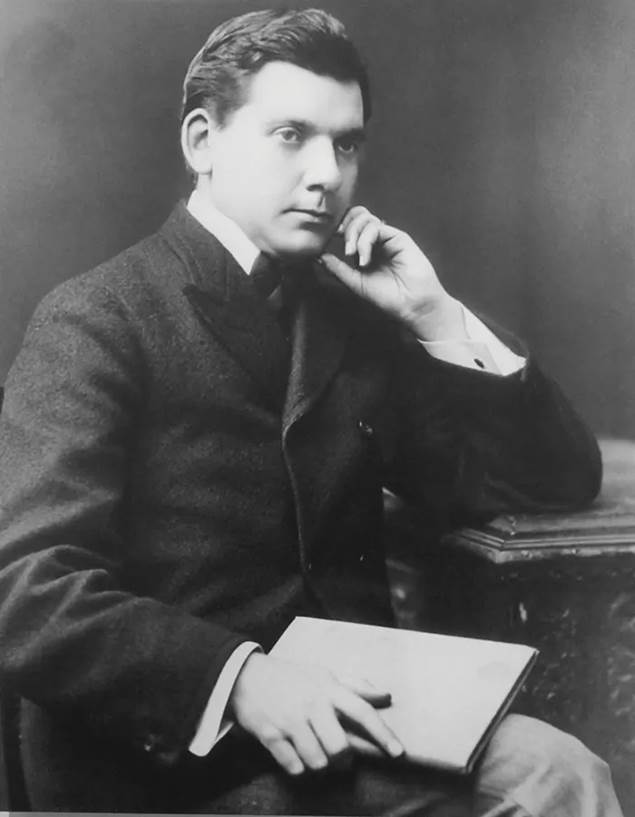
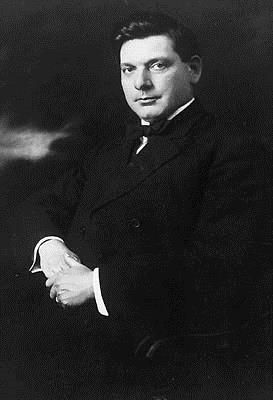
IRVING JOHN GILL (1870-1936)
Gill apprenticed to Ellis G. Hall in Syracuse around 1889. He moved to Chicago in 1890, worked for Joseph Lyman Silsbee, and, in 1891, with Adler and Sullivan. Gill moved to San Diego in 1893 and partnered with another former Chicago apprentice, William S. Hebbard for 11 years, bonding with San Diego's progressive philanthropic elite, including Ellen Browning Scripps. Gill parted ways with Hebbard in 1907 and formed a brief partnership with Frank Mead. The three residences created during their seven-month partnership began to exhibit the ornament-free, geometric elements for which Gill is best known. 1907 also brought his first solo commission and his launch to fame with the Laughlin House. In 1913, Gill was commissioned by Ellen Browning Scripps to design the La Jolla Woman's Club (715 Silverado), using the "tilt-slab" construction method, the first use of this kind in the state.
After a serious heart attack in 1936 he was transported to San Diego Hospital in Hillcrest, where he passed away later that day. He was cremated the next day and his ashes were placed in a temporary cardboard box at Cypress View Mortuary, just minutes southeast of downtown, marked "Hold" for a family member to retrieve. For decades, his remains were believed to have been scattered by his wife, Marion, according to a narrative popularized by the late historian and Gill biographer Bruce Kamerling. However, in 2022 it was discovered that the architect’s ashes had remained at Cypress View all along. The Irving J. Gill Foundation petitioned the County of San Diego to release his remains, and he was formally buried in October 2024. Gill designed more than 350 projects. In 2017, Gill became the first architect to receive the AIA California Council's Maybeck Award posthumously. His archives are at UCSB. The Irving Gill foundation was started in 2015 and is led by James Guthrie. Bio adapted from Wikipedia. Research by Kevin H. Souza and Catherine Cramer.
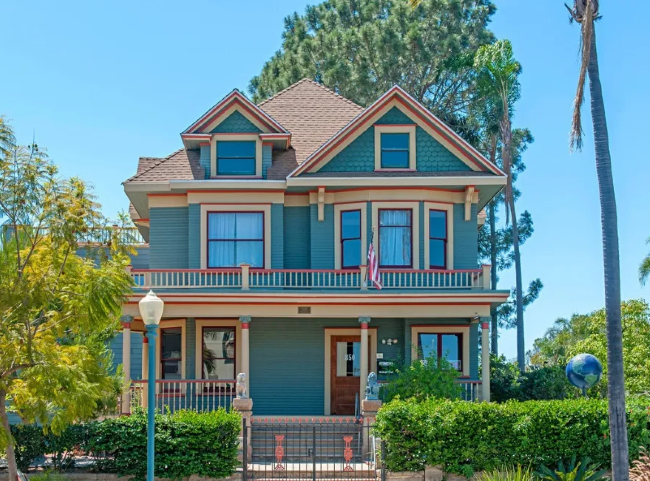
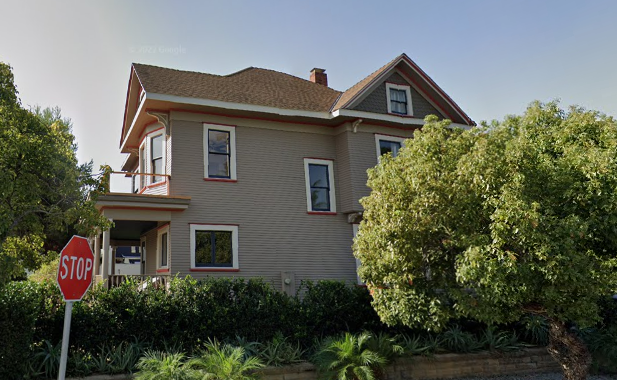
1893 - The Daniel Schuyler House, 838-842 25th Street, San Diego CA. Sold to Irma Shaw, an interior designer. Updated in 2020.

1893 - The Eugene W. Britt Alterations, aka Britt/Scripps Manor, 406 Maple Street, San Diego CA. Original house built in 1887. Became a hotel.
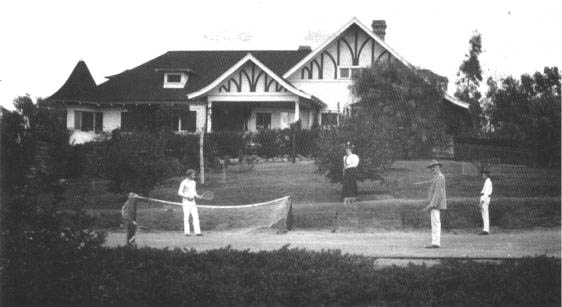
1893 - The John and Agnes Kendall Residence, Waverly Ranch, Hillsdale Road, El Cajon CA. A one-story East Indian Bungalow style. Designed with partner Joseph Falkenham. Status unknown.
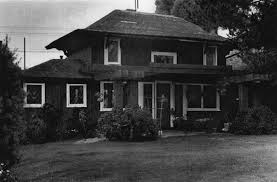
1894 - The John and Agnes Kendall Summer Beach Cottage, aka Windemere, 844 Prospect Street, La Jolla CA. Relocated in 1927 to 1328 Virginia Way. Designed with Joseph Falkenham. Sold to Bernate Ticino. The San Diego Historical Society tried to stop demo in 2011 but was unsuccessful. Destroyed.




1894 - The M. A. Wilcox House, 2nd Avenue and B Street, San Diego CA. Destroyed.
1894 - The Anna Held Cottage, aka Green Dragon, 1274 Prospect Street, La Jolla CA. Destroyed.
1894 - The Parson Shaw House, 4th Avenue and Quince Street, San Diego CA. Destroyed.
1894 - The S. W. Belding Renovation, Broadway and 18th Street, San Diego CA. Destroyed.
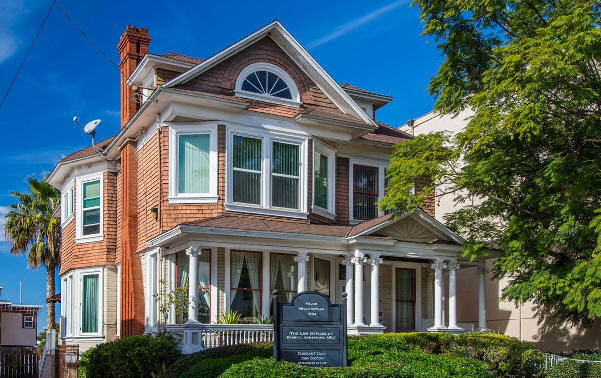
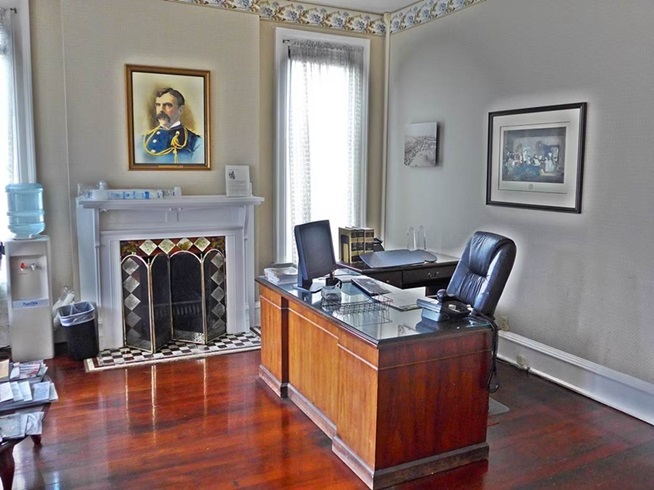
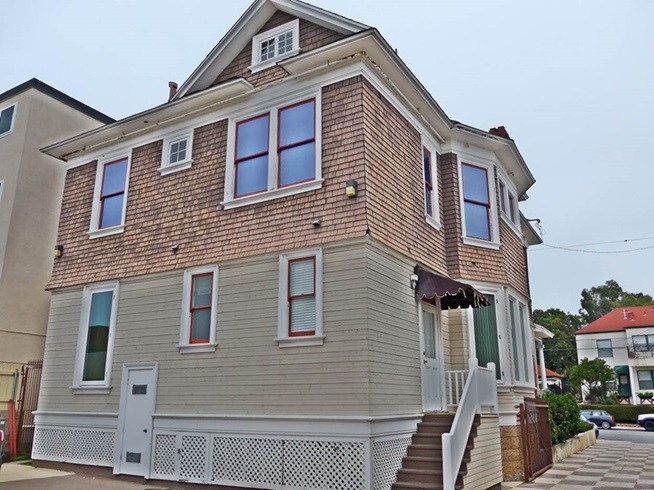
1894 - The Myles Moylan House,2214-2224 Second Avenue, San Diego CA. Designed with Joseph Falkenham. On the National Register of Historic Places. Sold to Foerster and Susan Barrett. Became an attorney's office.



1894 - The Edward M. Burbeck Cottage #1, 1174 Prospect Street, La Jolla CA. Destroyed in 2020.
1894 - The Gustave W. Jorres House, 2568 Front Street, San Diego CA. Destroyed.
1894 - The Prout House, Wynola Ranch, Julian CA. Destroyed.

1894 - The M. Garman Renovations, 1916 Third Avenue, San Diego CA. Became an attorney's office.




1894 - The McKee House, 7624 Girard Avenue, San Diego CA. Moved there from 7866 Fay Avenue, San Diego CA. Destroyed.
1895 - The Tallie Spencer House, Third Avenue between D and E, Chula Vista CA. Destroyed.
1895 - The Gail NIchols House, 750 Adella Lane, Coronado CA. Destroyed.
1895 - The Solomon Milne House, 844 Juniper Street, San Diego CA. Destroyed.
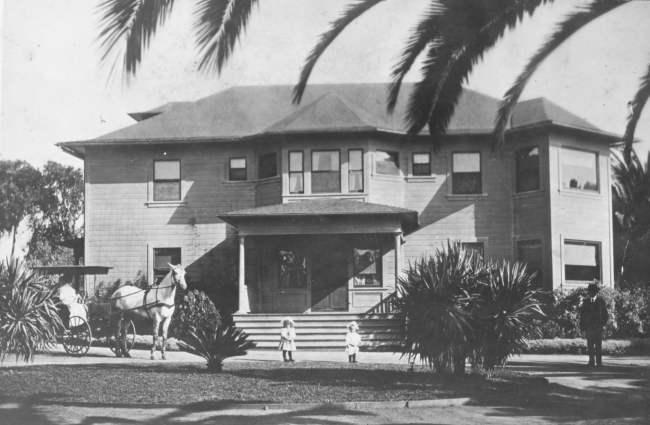
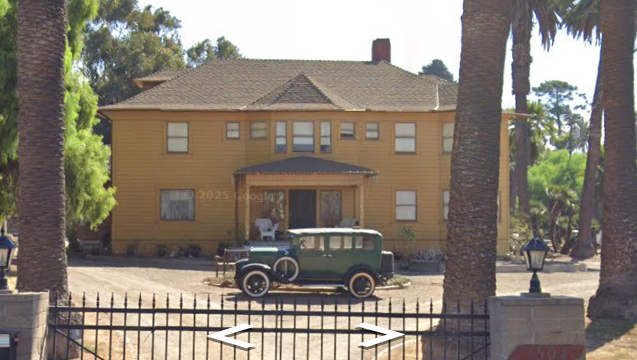
1895 - The David K. Horton House, 1504 East 22nd, National CIty CA. Sold to the Lori Peoples Trust.

1895 - The Harry W. Nichols House, 1718 A Avenue, Coronado CA. This was the first house built on Coronado by Hebbard and Gill. Destroyed.
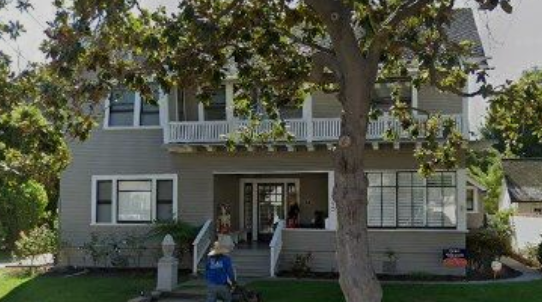
1896 - The Mary Cossitt House #1, 1710 Visalia Row, San Diego CA. Originally located at 1926 Adella Avenue, Coronado CA. Altered. Sold to Ana Pennoyer. Sold in 2015 to Barry and Patricia Smith. Status unknown.
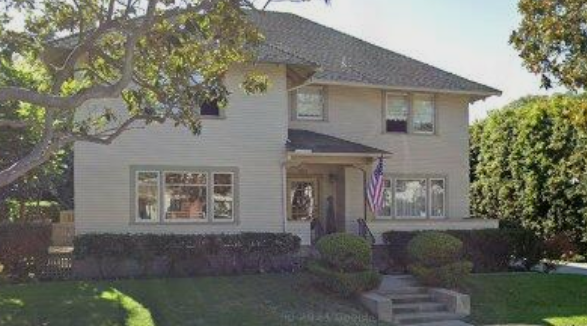
1896 - The Mary Cossitt House #1, 1718 Visalia Row, Coronado CA. Sold to John and Jane Davis. Sold in 1995 to Matthew and Denise Herron.
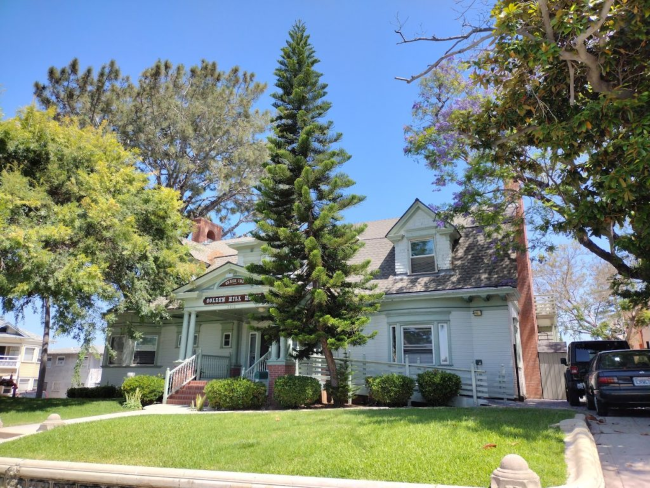
1896 - The George Garrettson Residence, 2410 East Street, San Diego CA. Sold in 2017 to Crash Inccrporated, an alcohol recovery center.



1896 - The George M. Hawley House #1, 206 Kalmia Street, San Diego CA. Destroyed.
1896 - The Edward M. Burbeck Cottage #2, 2352 First Avenue, San Diego CA. Destroyed.
1896 - The Gray House, First Avenue at Cedar Street, San Diego CA. Destroyed.
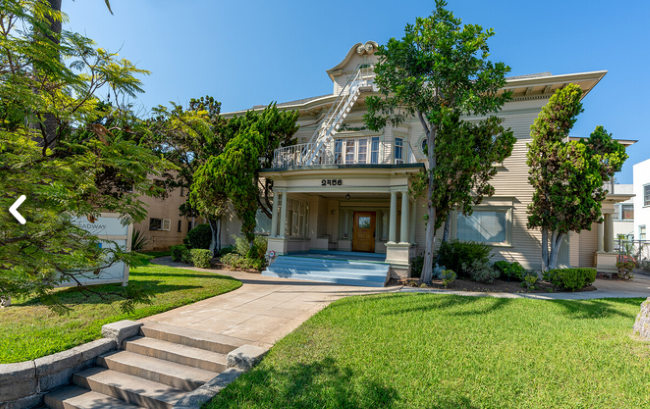
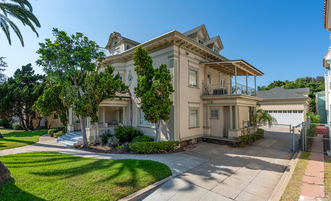
1897 - The Abel H. Frost House, 2456 Broadway, San Diego CA. Converted into offices. Sold to 2456 Broadway LLC.



1897 - The Thomas Boutelle House, 1470 Seventh Avenue, San Diego CA. Destroyed.
1897 - The Alfred E. Nutt House, Fourth Avenue and Walnut, San Diego CA. Destroyed.
1897 - The H. H. Bancroft Block, Fifth Avenue and A Street, San Diego CA. Destroyed.
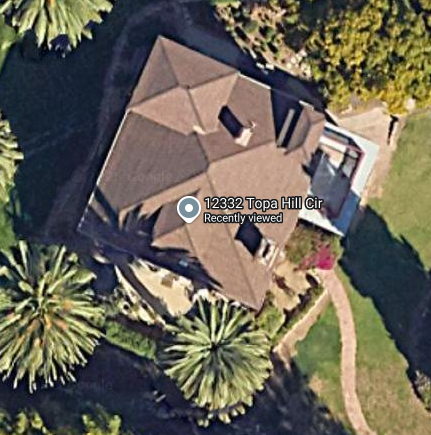
1897 - The John H. Kleine House #1, 12332 Topa Hill Circle, Lakeside CA. Designed with Hebbard. Could also be at 9627 Prospect Street. Sold in 1988 to Steven Cowen.

1897 – The Robert Gail Nichols Cottage, 750 Adella Ave, Coronado CA. Burned in 1981.
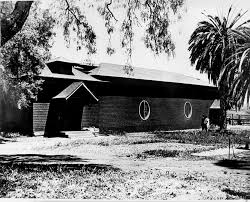
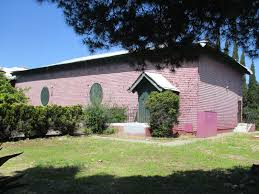
1898 - The Ralph Granger Music Hall, 1700 East 4th Street, San Diego CA. Originally on 8th & National, moved in 1969.

1898 - The H. L. Shepard Alterations, Lot K Block 212, San Diego CA. Destroyed.
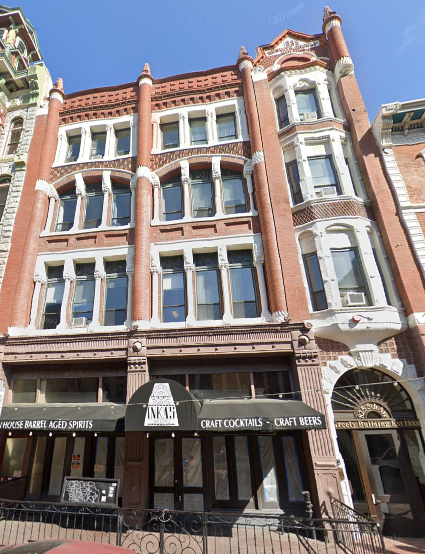
1898 - The M. V. Carroll House, 827 Fifth Avenue, Hillcrest, San Diego CA. Building permit for M.V. Carroll listed on 3/24/1898; later became his business. Likely a mixed-use development with commercial space below and apartments above.
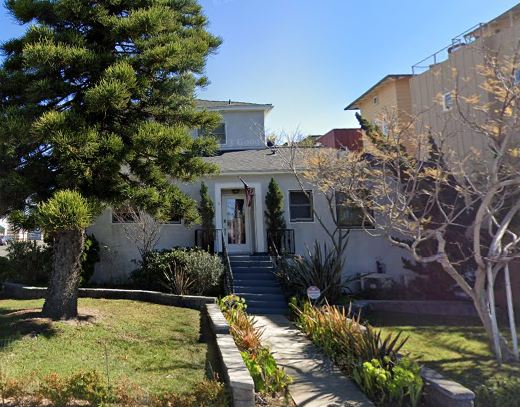
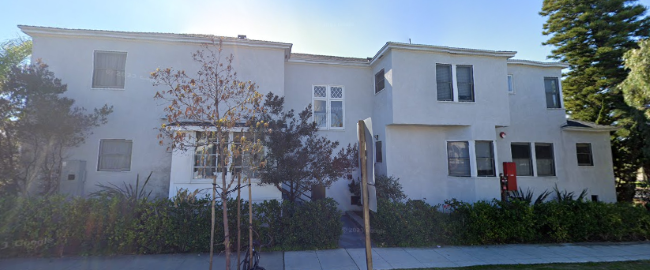
1898 - The Mendell Churchill House, 1300 Orange Avenue, San Diego CA. With Hebbard and Gill. Relocated to 1106 4th Street, Coronado CA. House relocated prior to 1953. Sold in 2016 to Diana Cronquist.
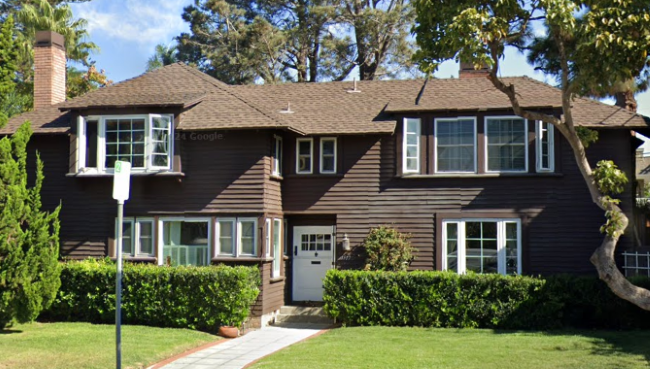
1898 - The Lorini House, aka Lorini-Pratt House, 1517 Ynez Place, Coronado CA. Sold to Mary C. Pratt. Sold around 1935 to Rufus Taylor. Sold in 1993 to Ted and Kay Krohne, still owners as of 2023.
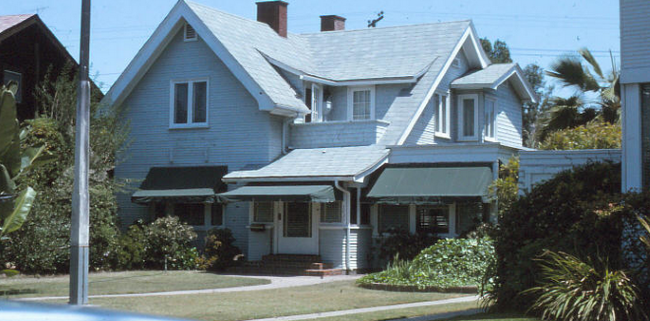
1898 - The Mary Cossitt House #2, 1037 Star Park Circle, Coronado CA. Sold in 1912 to Frank Von Tesmar. Remodeled the house in 1929, including the addition of a garage. In 1983, Coronado architect Dale St. Denis received an award for his renovation which honored Gill's use of light. Sold to the Benzian Family Trust.
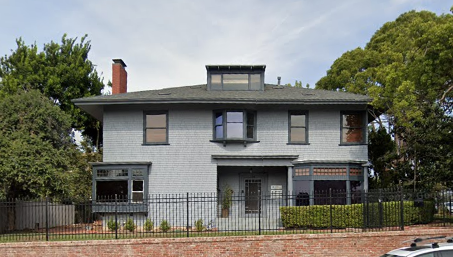
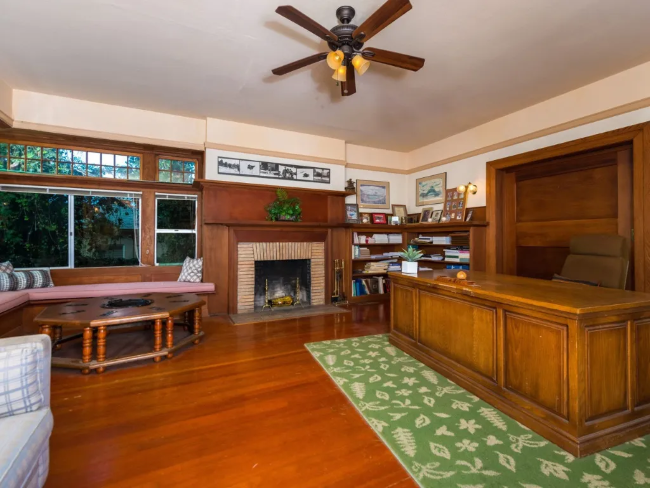
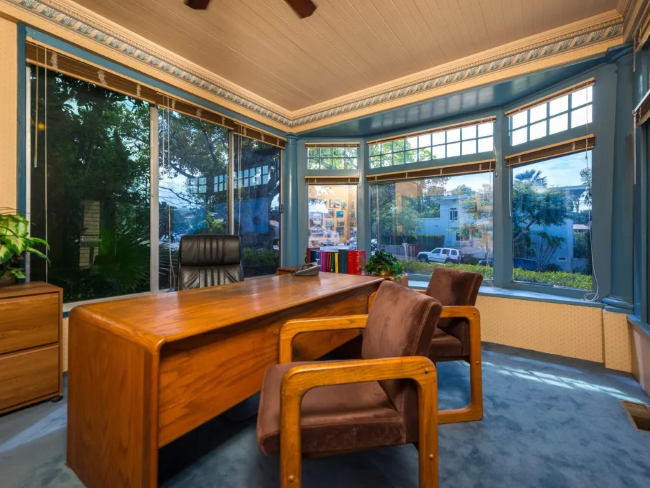
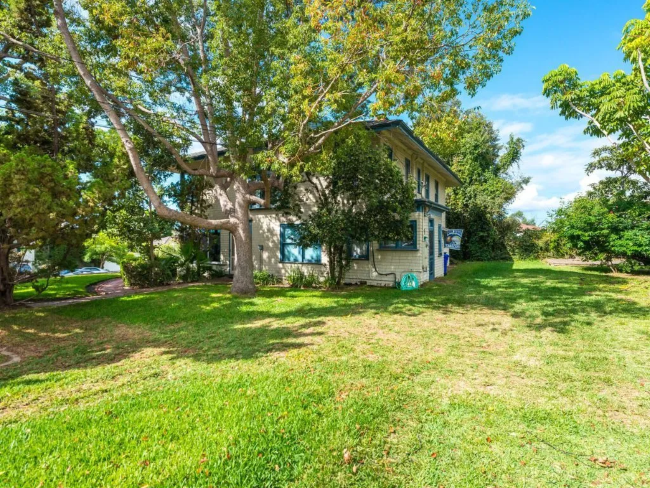
1898 - The Ernest E. White House, aka White-Seifert House, 136 Redwood Street, San Diego CA. Designed with Hebbard. Sold in 1990 to Howard and Holly Frank Sold in 2015 to Edith Barnik Personal Trust.

1898 - 4th Avenue near Date Street, San Diego CA. Destroyed.
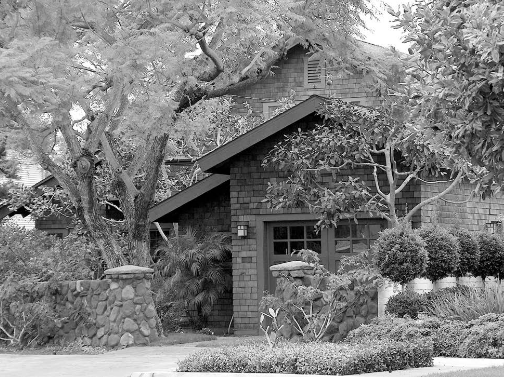
1898 - The William Bailhache House, 1022 Adella Avenue, Coronado CA. Desgined with Hebbard. Sold to the Rogers Trust. Sold around 1924. Sold in early 1930's to the J. A. Roberts family. Sold in 1937 to the Hamiltons. Sold in 1939 to the Hanlans, then the Dyes. Sold in 1998 to Nicholas and Patricia Dicicco, transferred to a family trust.
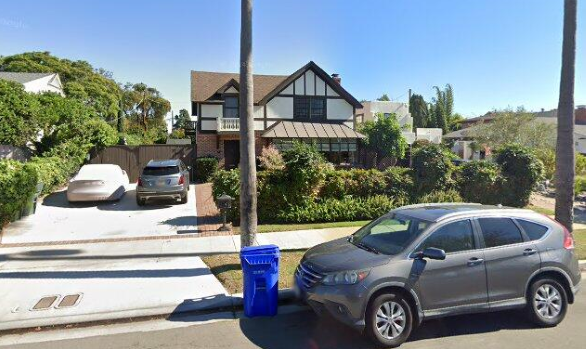
1898 - The Anson P. and Catherine A. Stephens House, 711 A Avenue, San Diego CA. Original address 1400 7th Street, San Diego CA. Sold in 2010 to the Ferrar Family Trust.
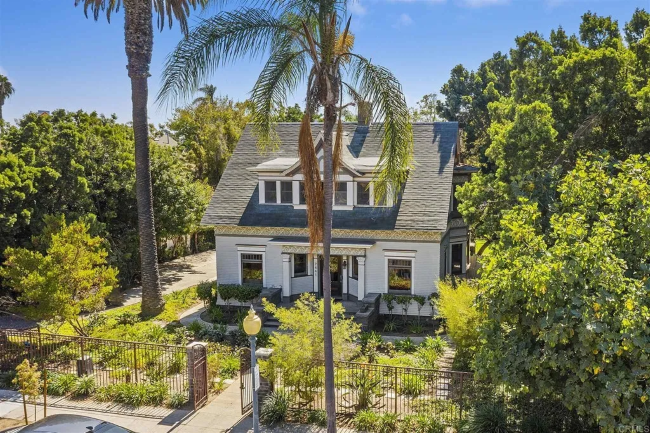
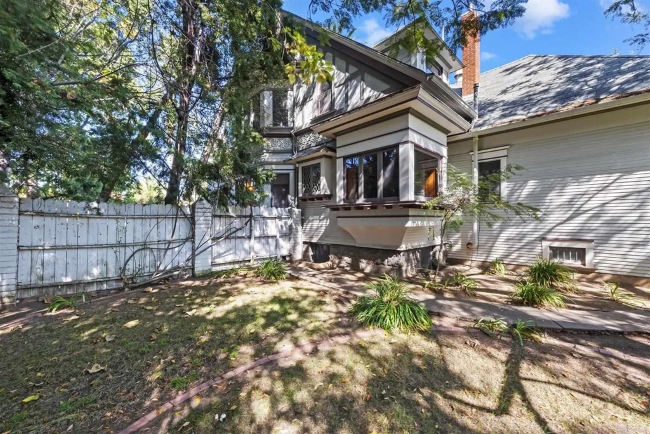
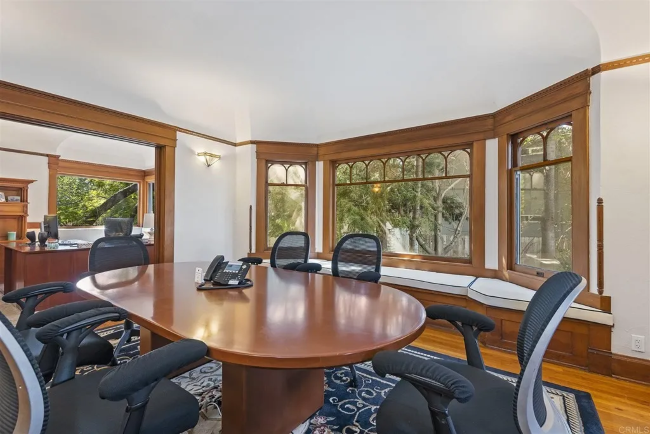
1898 - The Rynearson House, 2441 East Street, San Diego CA. Seven bedrooms and four baths that has been converted into studio/loft residences. Sold in 2021 to Javier and Yalda Bravo.
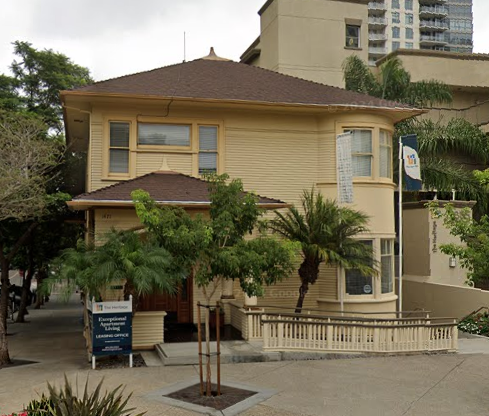
1899 - The George Kroenert House, 1471 8th Avenue, San Diego CA. He was a saloon owner. Sold in 1902 to James Liston. Sold in 1909 to Paulie Walbrect and Katherine Steffen and used as a rental. Sold in 1939 to J. H. Halorson who owned the house until the 1960's. Sold to Daniel Salerno. Sold in 1989 to Davoud Shirazi. Sold in 1998 to F. Cortez Hill Associates Redevelopment Agency. Sold in 2022 to 1471 8th Avenue LLC. Apartments were added to block in 2002. Became a leasing office.
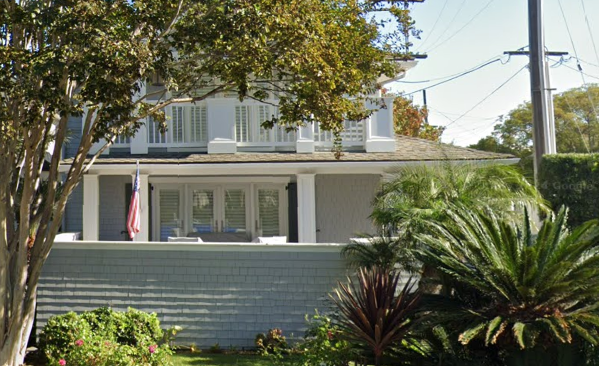
1899 - The Mary Cossitt House #3, 1127 Flora Avenue, Coronado CA. Sold in 1988 to Robert M. Spear. Sold in 2007 to William Markham and Stephen Wiggins. Sold in 2008 to the John and Katherine Utley Living Trust.
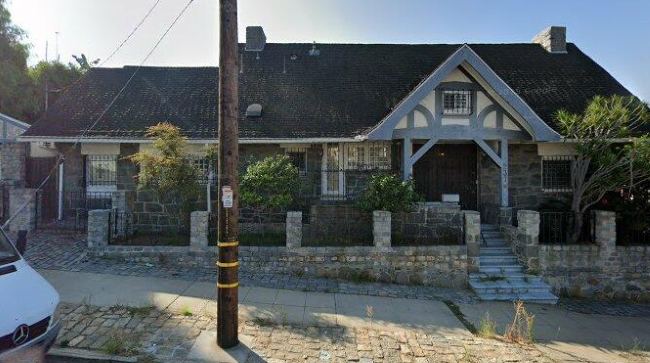
1900 - The Mrs. Waldo Waterman House, 237 West Hawthorn Street, San Diego CA. Sold in 1976 to Krutop Living Trust.
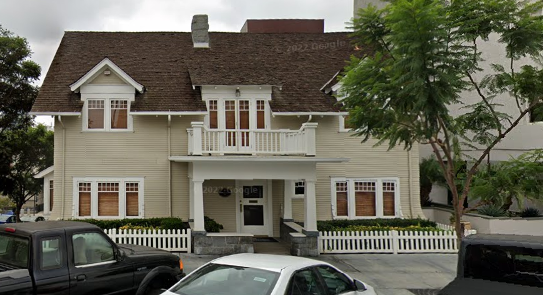
1900 – The Mills House, 1604 7th Ave, San Diego CA. Likely the building at 7th & Cedar shown in photo above. Needs verification.

1901 - The George McKenzie House, 208 West Kalmia, San Diego CA. Destroyed in 1976.
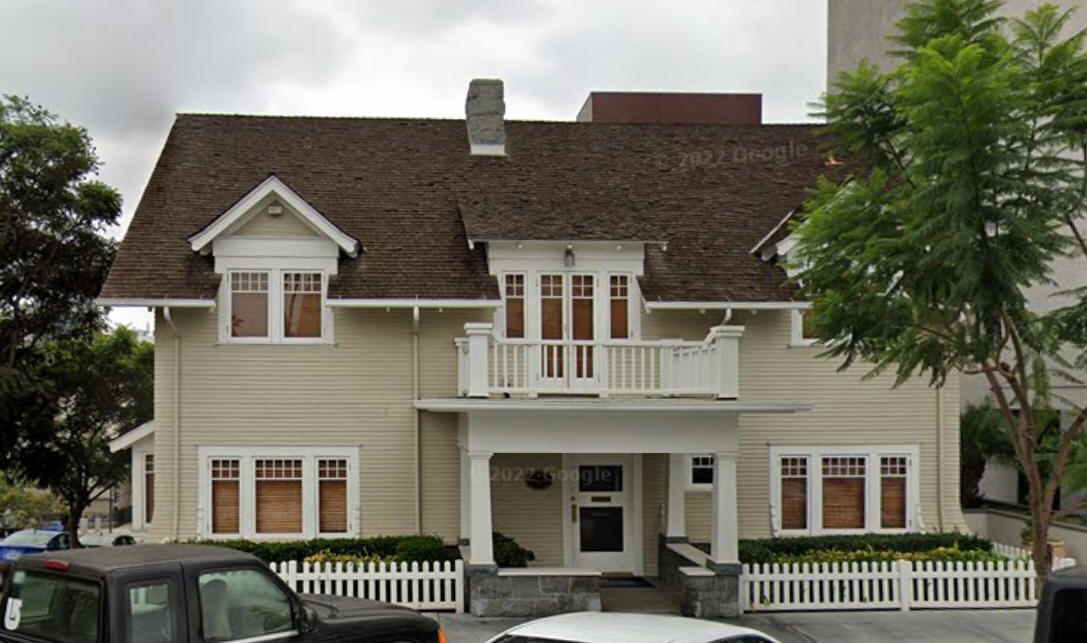
1901 - The Henry Mills House, 1604 Seventh Avenue, San Diego CA. Standing as of 2022. A San Diego historic landmark.
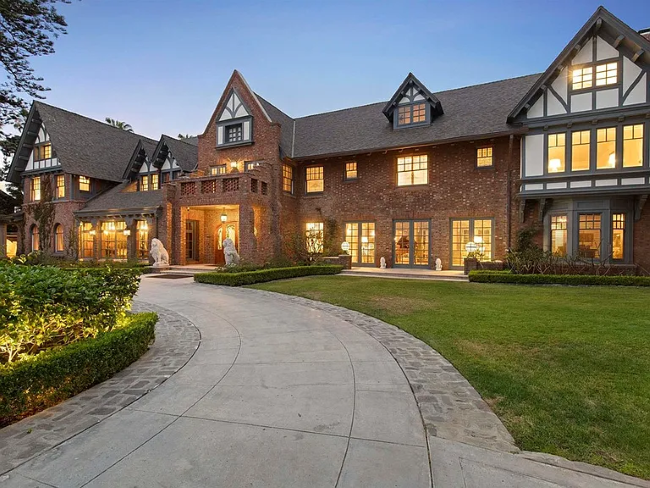
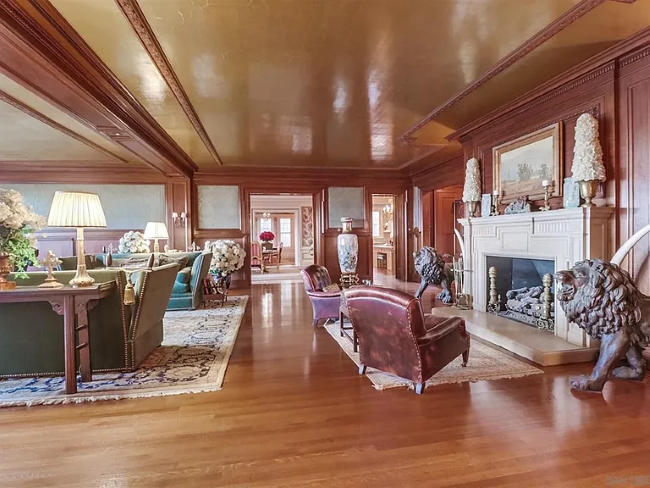
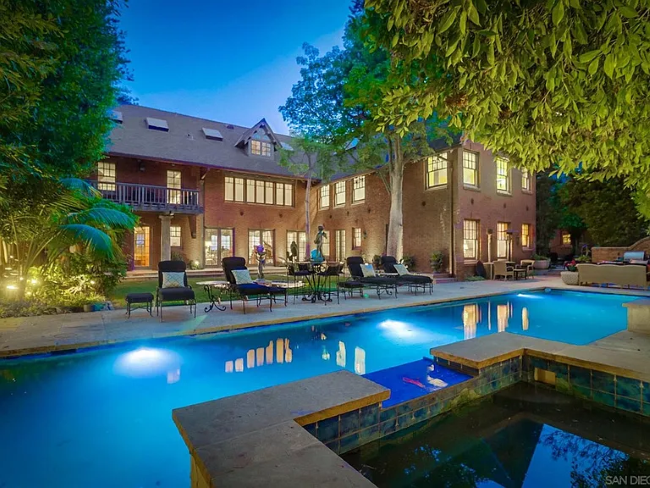
1901 - The Bartlett and Inez Richards House, aka Crown Manor, 1015 Ocean Boulevard., Coronado CA. Designed by Hebbard and Gill with additional wings and stables added in 1914 for the Dupee family by architect Frederick Roehrig. Sold in 1980 to M. Larry Lawrence. Sold in 2000 to Steven and Paula Black. Sold in 2003 to Christopher and Dawn Bower who updated and expanded to nearly 24,000 sf.



1901 - The J. C. Hizer House, 1135 Loma Avenue, Coronado CA. Destroyed.
1901 – The Emma Frances Way House, 419 Redwood Street, San Diego CA. Destroyed.
1901 - The Elwyn B. Gould House, 234 West Juniper Street, San Diego CA. Destroyed.
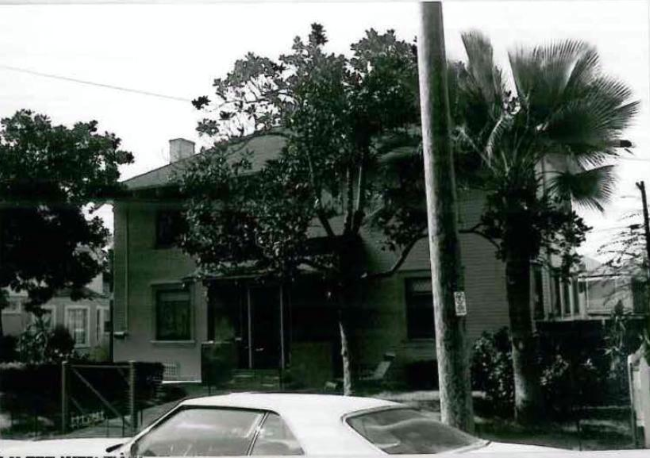
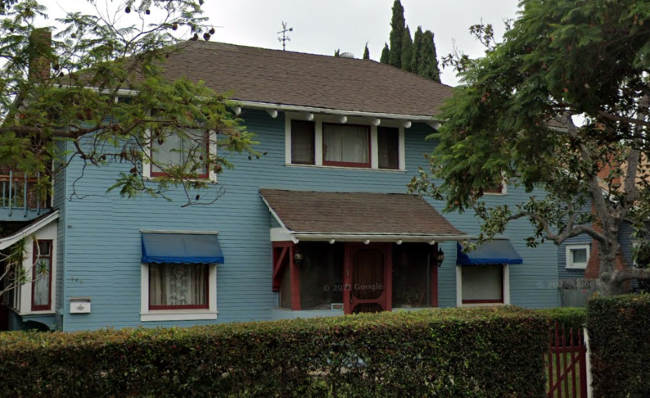
1901 - The Mary A. Sterret House, 542 22nd Street, San Diego CA. Sold before 1987 to Richard Raffin and Robert Lively. Sold in 2003 to Edward and Julie Russell. Added to the Register of Historic Places in 1987. Status unknown.
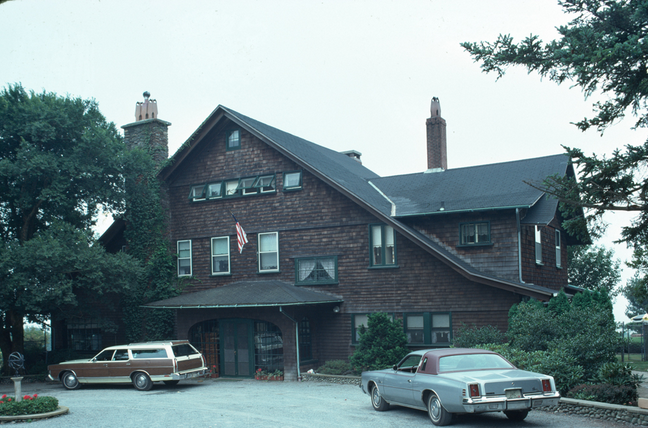
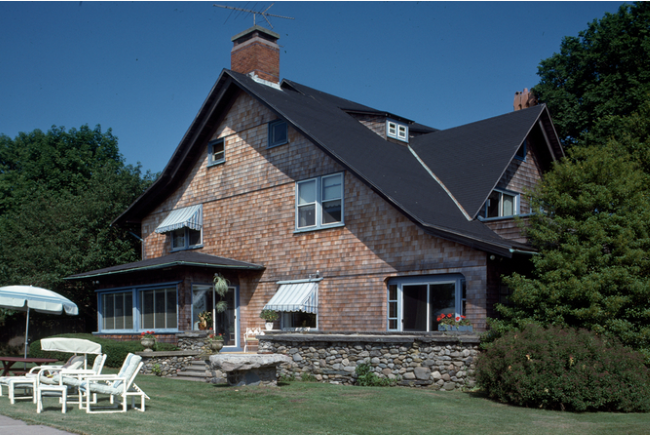
1902 - The Sarah King Birckhead House, Eastover Road, Portsmouth RI. Standing as of 2022. Status unknown.
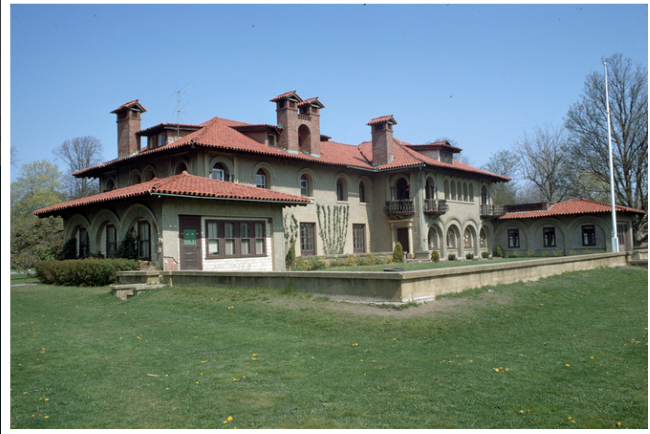
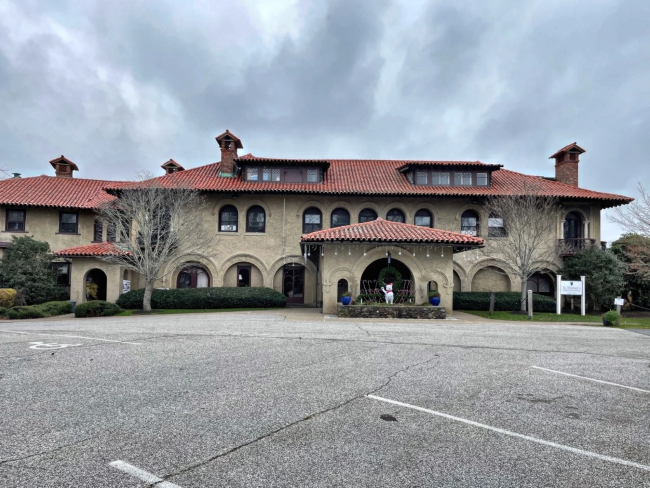
1902 - The Ellen Mason House, aka St. Michael's Country Day School, 180 Rhode Island Avenue, Newport RI. First photo by Richard Longstreth.
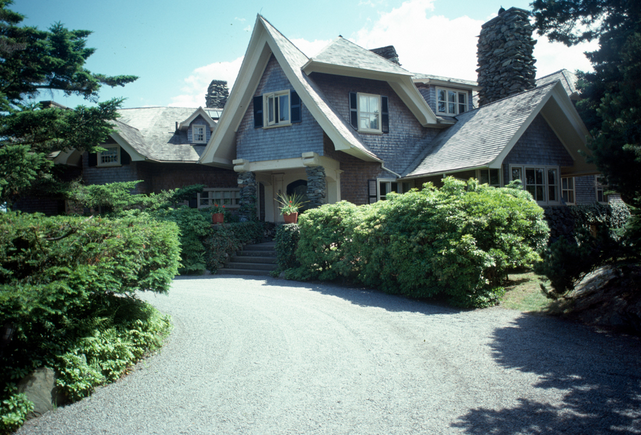
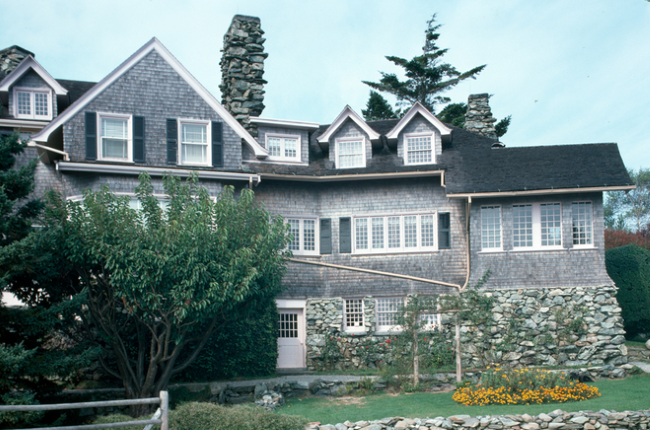
1902 - The Albert H. Olmsted House, aka Wildacre, 310 Ocean Avenue, Newport RI. Built as a summer house for the brother of Frederick Law Olmsted, the landscape architect. Sold in 2013 to Ocean 310 LLC. Photos by Richard Longstreth.
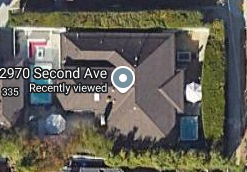
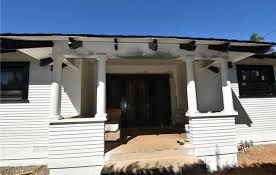
1902 - The Johnson Puterbaugh House, 2970 2nd Avenue, San Diego CA.With Hebbard and Gill. Sold to Charles Warner. Sold in 1994 to Bradley Diskin. Sold in 2005 to Oscar Leon. Sold in 2018 to David Curiel. In 2022, converted garage, new windows, doors, and patio.
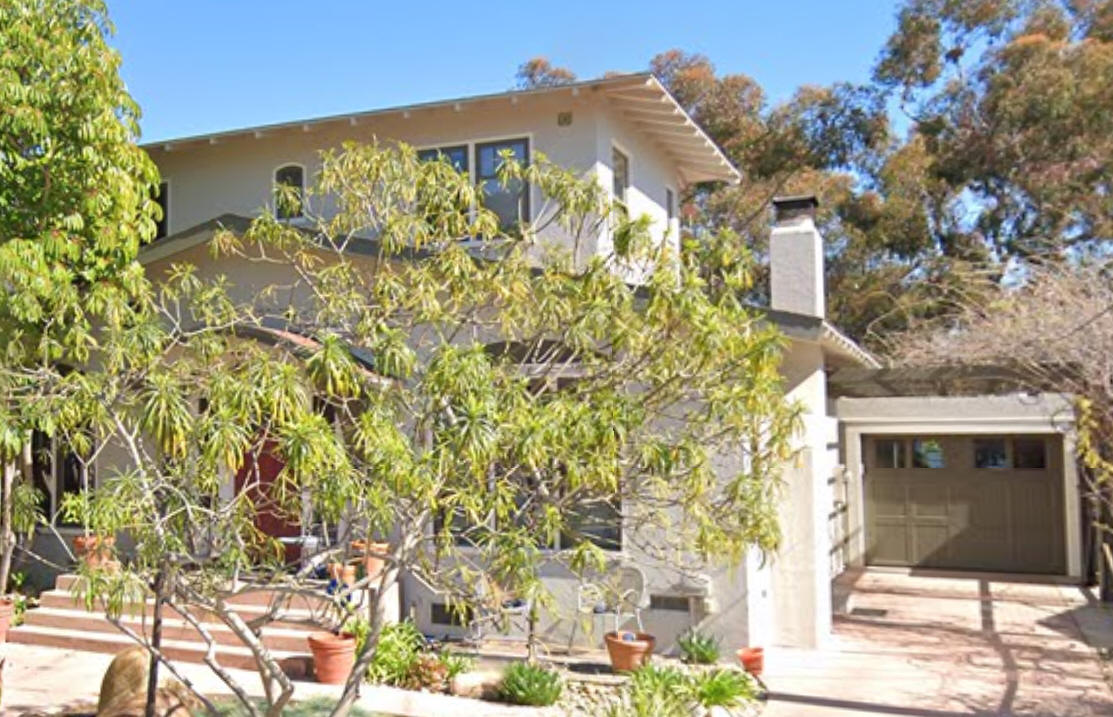
1902 - The Irving Gill Cottages, 3703 Albatross Street, San Diego CA. Sold to Lupe and Mercedes Alvarado. Sold in 1995 to Thomas and Katya Mistretta. Sold in 2005 to Michael and Lisa Feren.


1902 – The Louis Fritz House, 1572 First Avenue, San Diego CA. Destroyed.
1902 – The Irving Gill Cottage, Fourth Avenue near Robinson Street, San Diego CA. Destroyed.
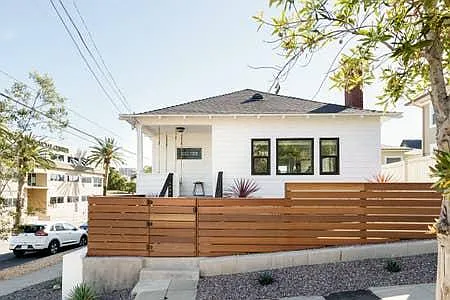
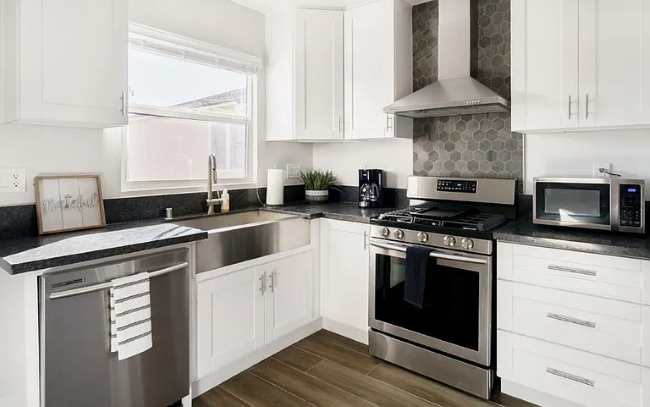
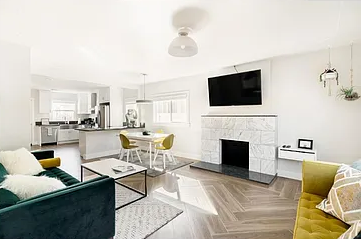
1903 - The Ida Chappell House, 241 Ivy Street,, San Diego CA. Sold to Joseph Ricco. Sold in 1989 to Rudi Stockalper. Sold to Carla Plummer. Sold in 1998 to Brian and Tonya Trapp. Sold in 2018 to Eric Vaca. Remodeled. On and off the market as a rental.

1903 – The Shaw-Safe House, East Greenwich RI. Status unknown.





1903 – The Herbert E. Anthony House, 3554 Second Avenue, San Diego CA. Destroyed.
1903 – The William O. Bowen House, 3525 Third Avenue, San Diego CA. Destroyed.
1903 – The Edward M. Burbeck Cottage #3, La Jolla CA. Destroyed.
1903 – The Louis B. McGagg House, Woodlands Bar Harbor ME. Destroyed.
1903 – The Hammond Flats, Broadway between 9th and 10th, San Diego CA. Destroyed.
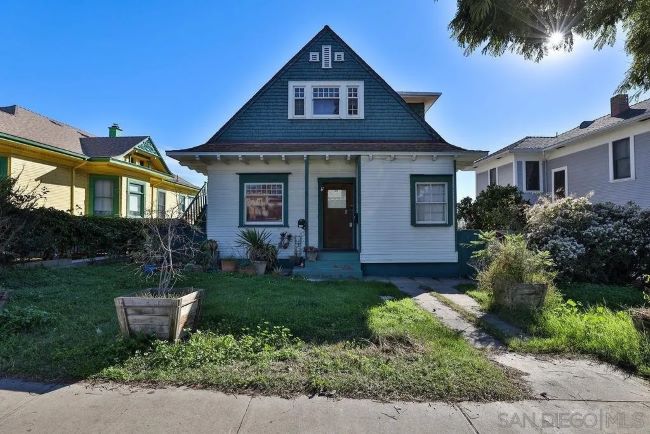
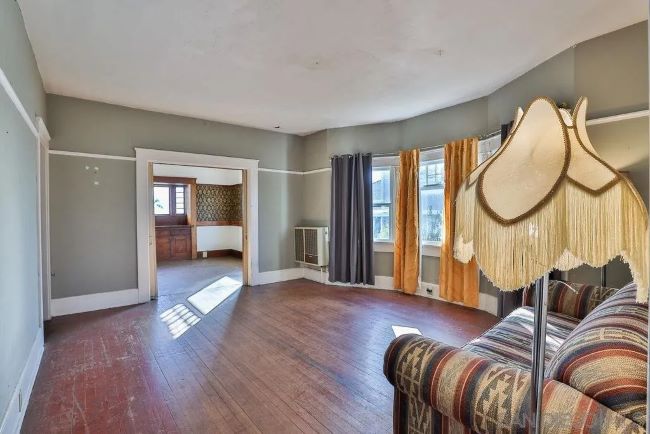
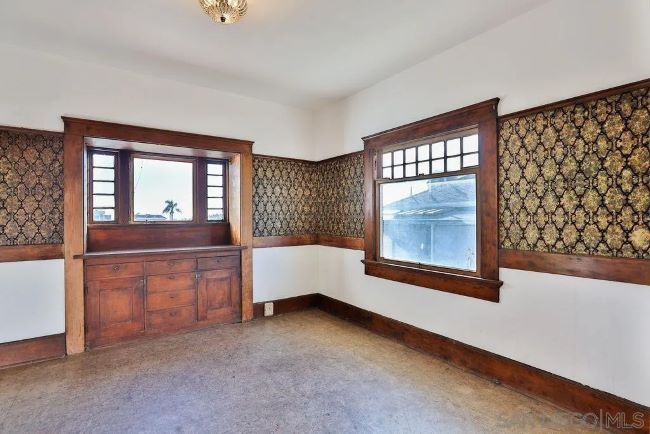
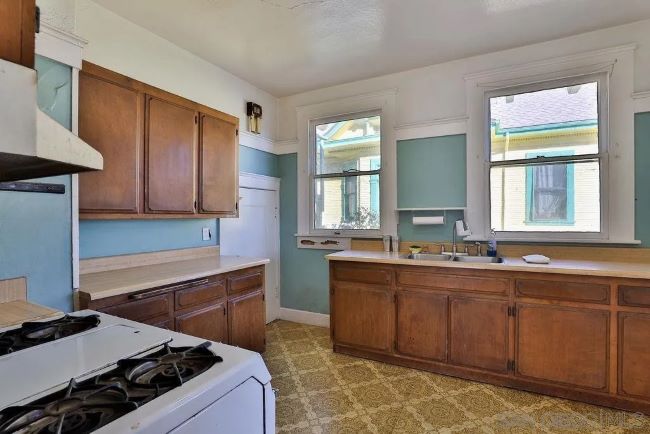
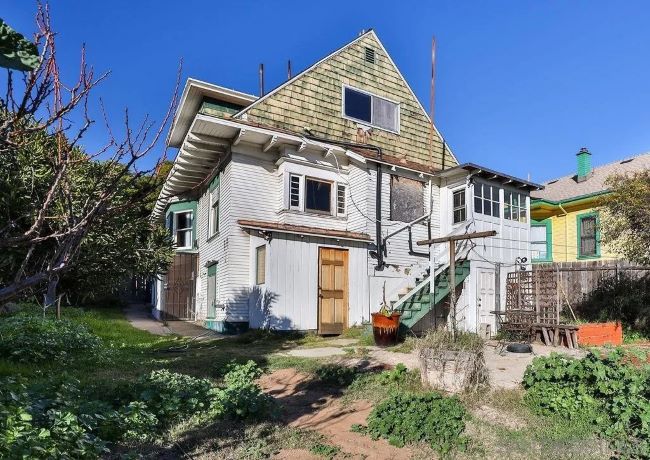
1903 – The George Tammen House, 2437 Market Street, San Diego CA. Sold to Michael McKibben. Sold in 2024 to Sriram Dasani.
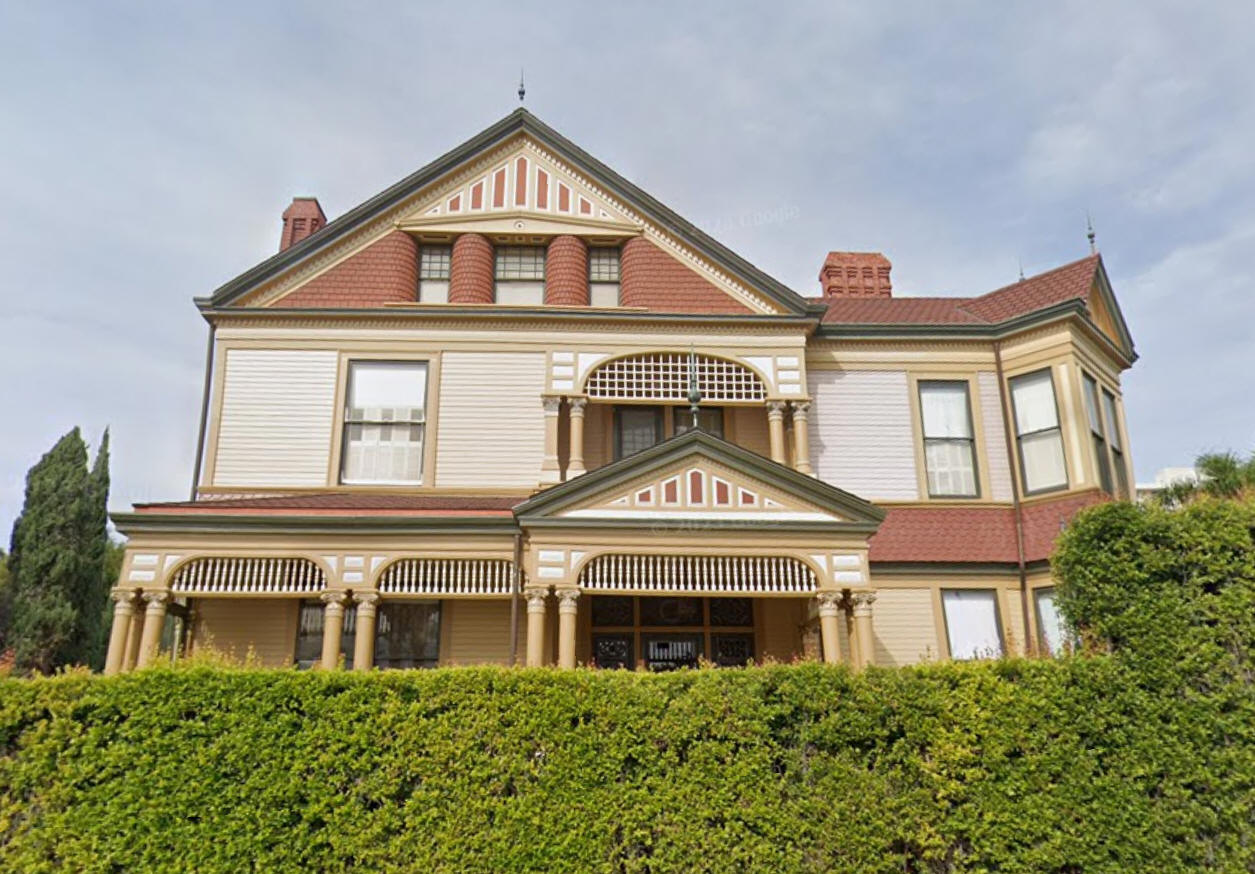
1903 – The Timken-Mifflin Renovation, 2508 1st Avenue, San Diego CA. Original house designed in 1888 by Comstock and Trotsche. Sold in 2007 to the Weaver Family Trust.
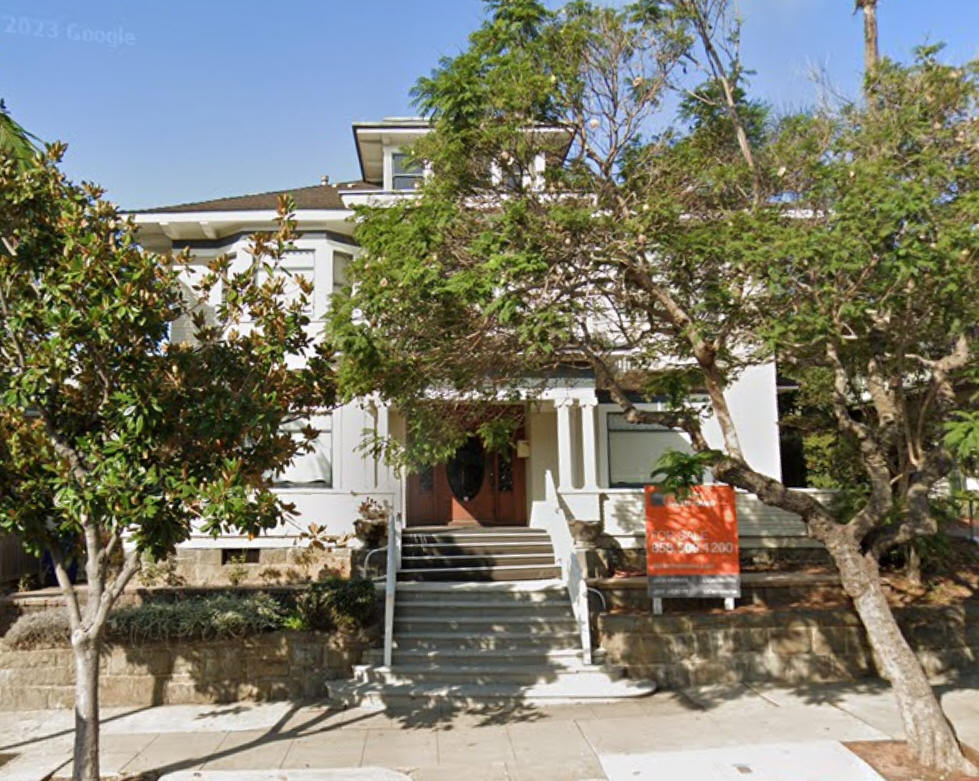
1903 - The Edward Mayer House, 2240 5th Avenue, San Diego CA. Sold to Thomas Gilmore. Sold in 2005 to K & G Foster LLC. Sold in 2015 to Marks Revocable Living Trust (Marks, Golia and Pinto LLP). Became an office. For sale in 2022.
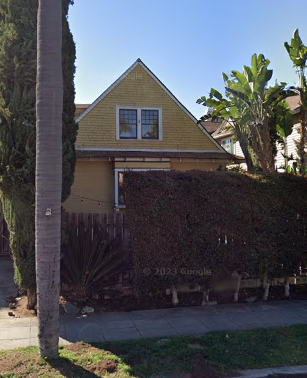
1903 - The Marion L. Wincote House, 3720 7th Avenue, San Diego CA. Designed with Hebbard. Sold to the Forsythe Trust. Sold in 1996 to Kerry McLoughlin.
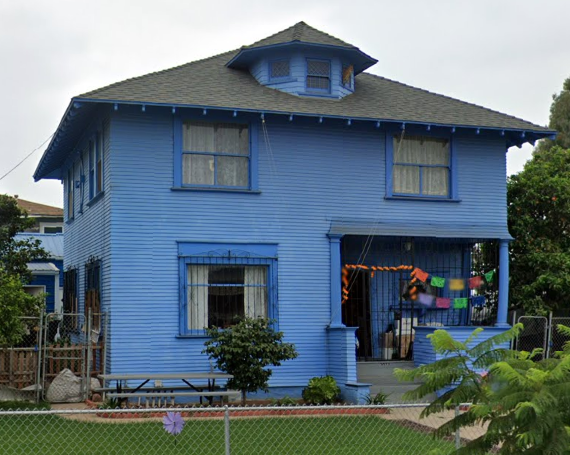
1904 - The John Osborn House, 2073 Logan Avenue, San Diego CA. Converted to apartments. Sold around 2005 to Eduardo and Guadalupe Johnston.

1904 - The E. Milton Barber House #1, 108 West Robinson Avenue, San Diego CA. Altered. Destroyed in 2000.
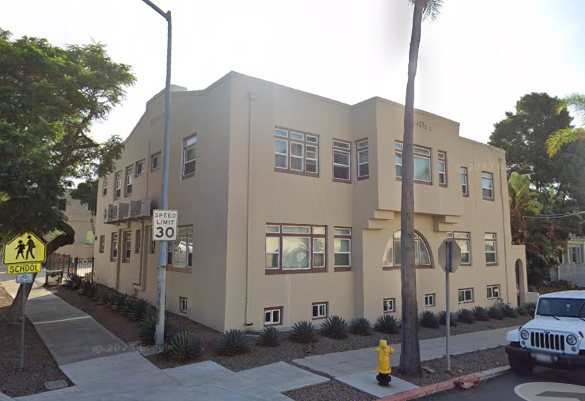
1904 - The E. F. Chase House, 205 Laurel Street, San Diego CA. Apartments. Sold to R J and J V Thompson. Sold in 2004 to Dan Floit. Sold in 2009 to Wing California Real Estate who did a kitchen and bathroom remodel.

1904 - The Frank and Virginia Belcher House, Southeast corner of Kalmia and Albatross, San Diego CA. Destroyed.
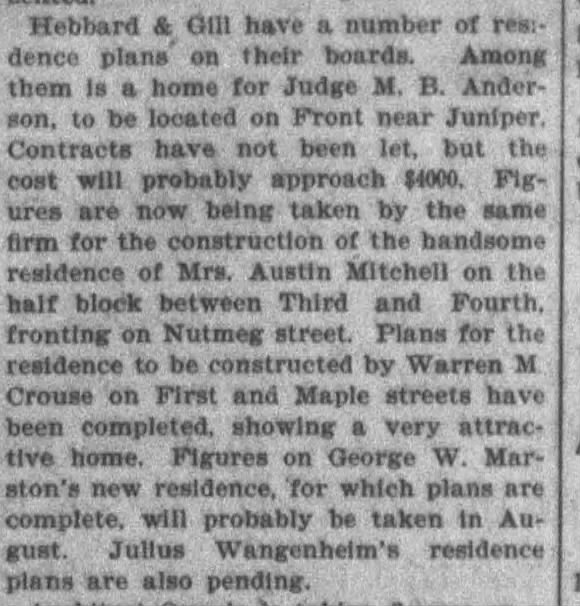
1904 - The Warren and Lena Crouse House, 2600 1st Avenue, San Diego CA. Destroyed early 1960's. Newspaper clipping from May 31, 1904.
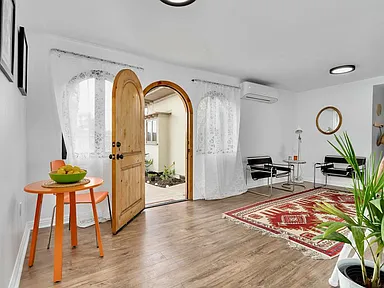
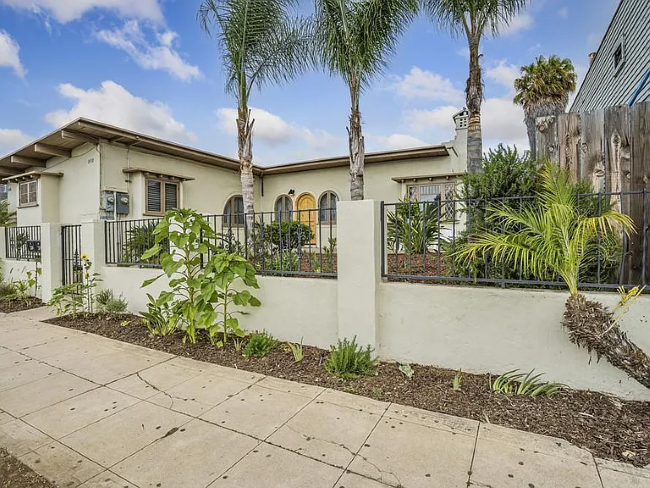
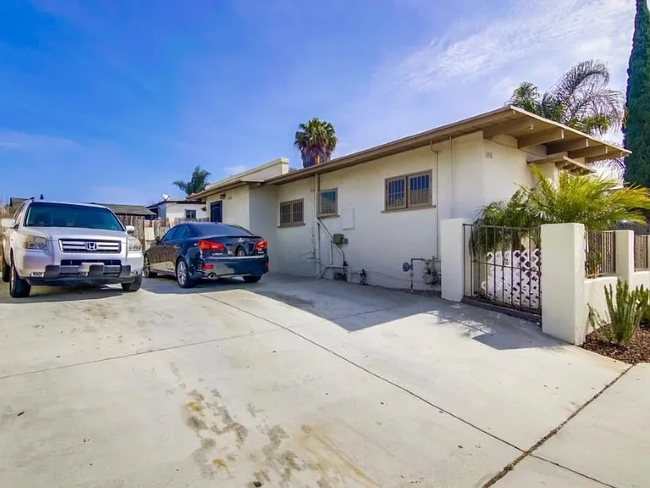
1904 - The Irving Gill Rental Cottage, 146 25th Street, San Diego CA. Sold in 1992 to Carlos Soto and Maria Perez.
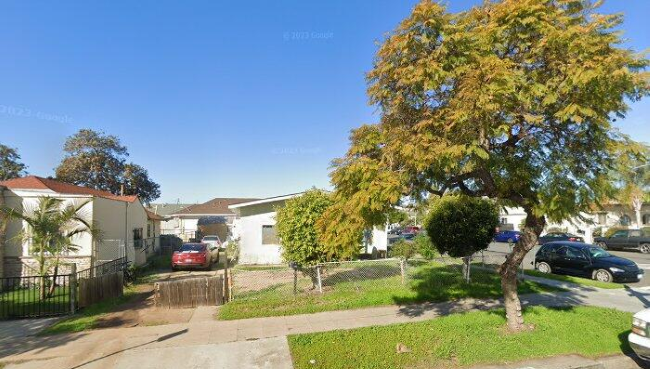
1904 - The Irving Gill Rental Cottage, 146 25th Street, San Diego CA. Status unknown.
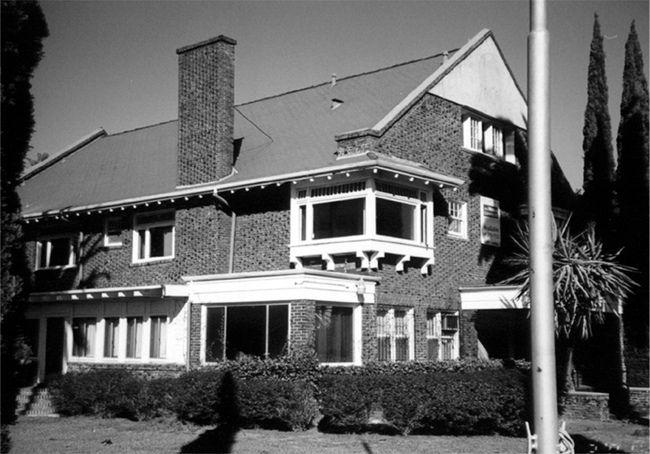
1904 - The Bertha B. Mitchell House, 2720 4th Avenue, San Diego CA. Sold in 1928 to the Terpezone Clinic. Later it was the home of two restaurants, a boarding house and an apartment until bought in the 1950's by the Elks Club. Sold in the 1990's to Mayfair, a developer, and destroyed in 2002.
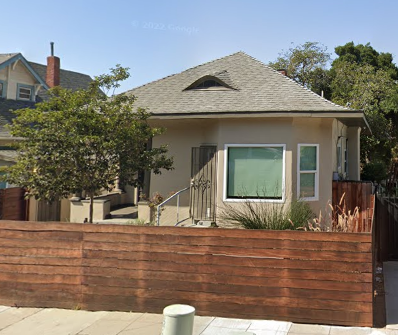
1904 - The William Stewart House, 942 23rd Street, San Diego CA. Sold to the Tucker Trust. Sold in 1998 to Maria Zuniga. Sold in 2018 to Osiris and Rachel Rogerio. Converted into a 5-unit rental.
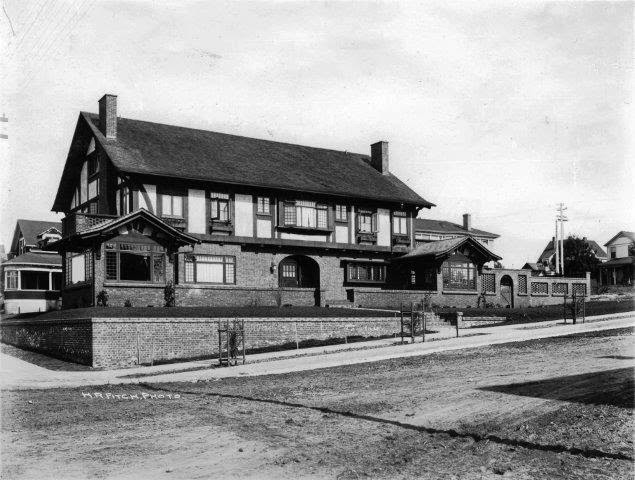
1904 - The Julius and Laura Wangenheim House, 148 West Juniper, San Diego CA. Destroyed around 1964. Site became condominiums.

1904 - The Walter B. Woodward Flats, 7th between Broadway and C Street, San Diego CA. Destroyed.
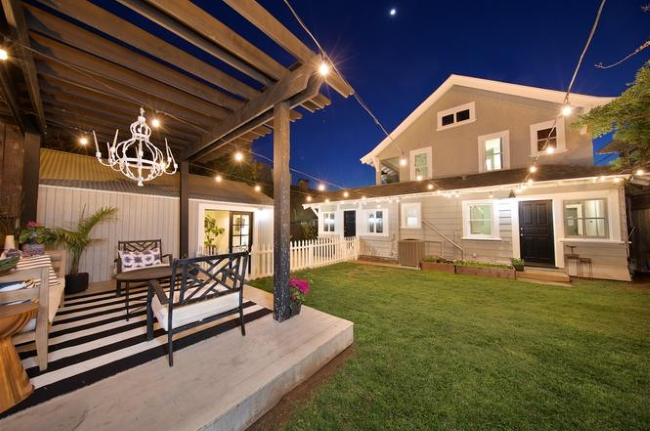
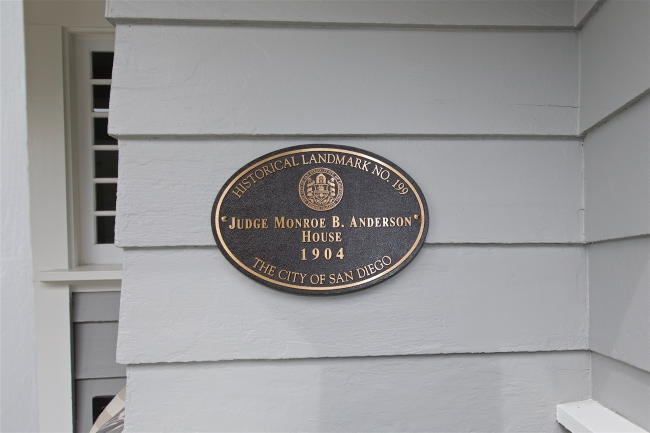
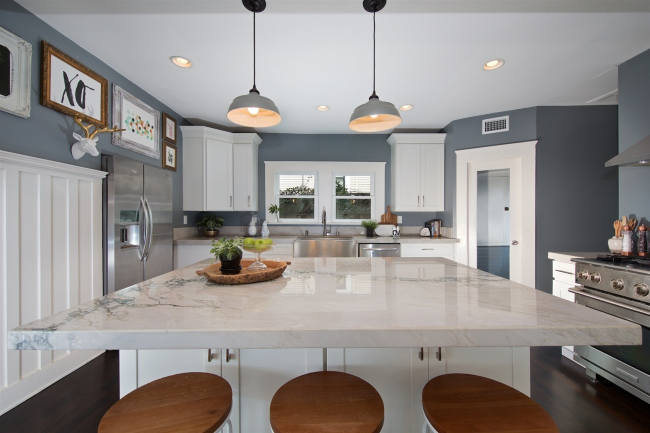
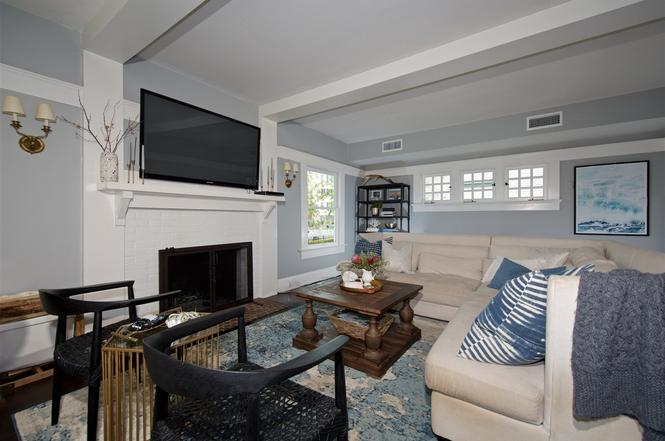
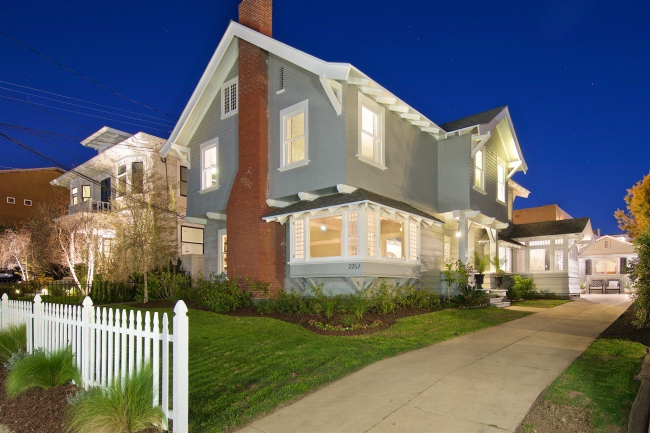
1904 - The Monroe Anderson House, 2257 Front Street, San Diego CA. Designed with Hebbard. Sold to the Estep Trust. Sold in 2002 to Craig and Katherine Harms. Sold in 2014 Brian and Jennifer Minns who did renovations. Sold in 2017 to Alan Brown who put in a new roof.
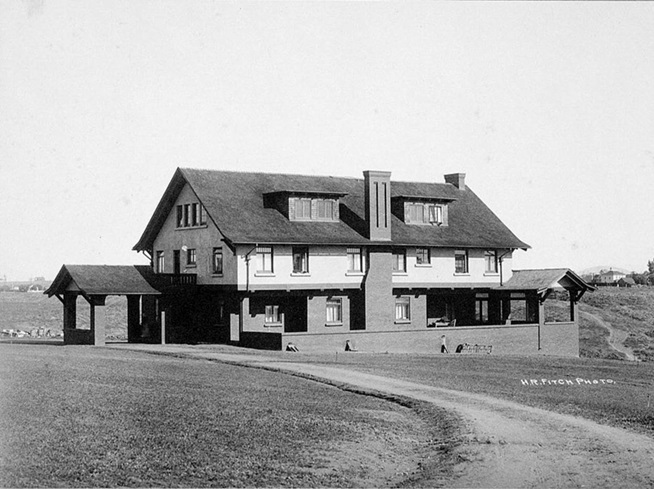
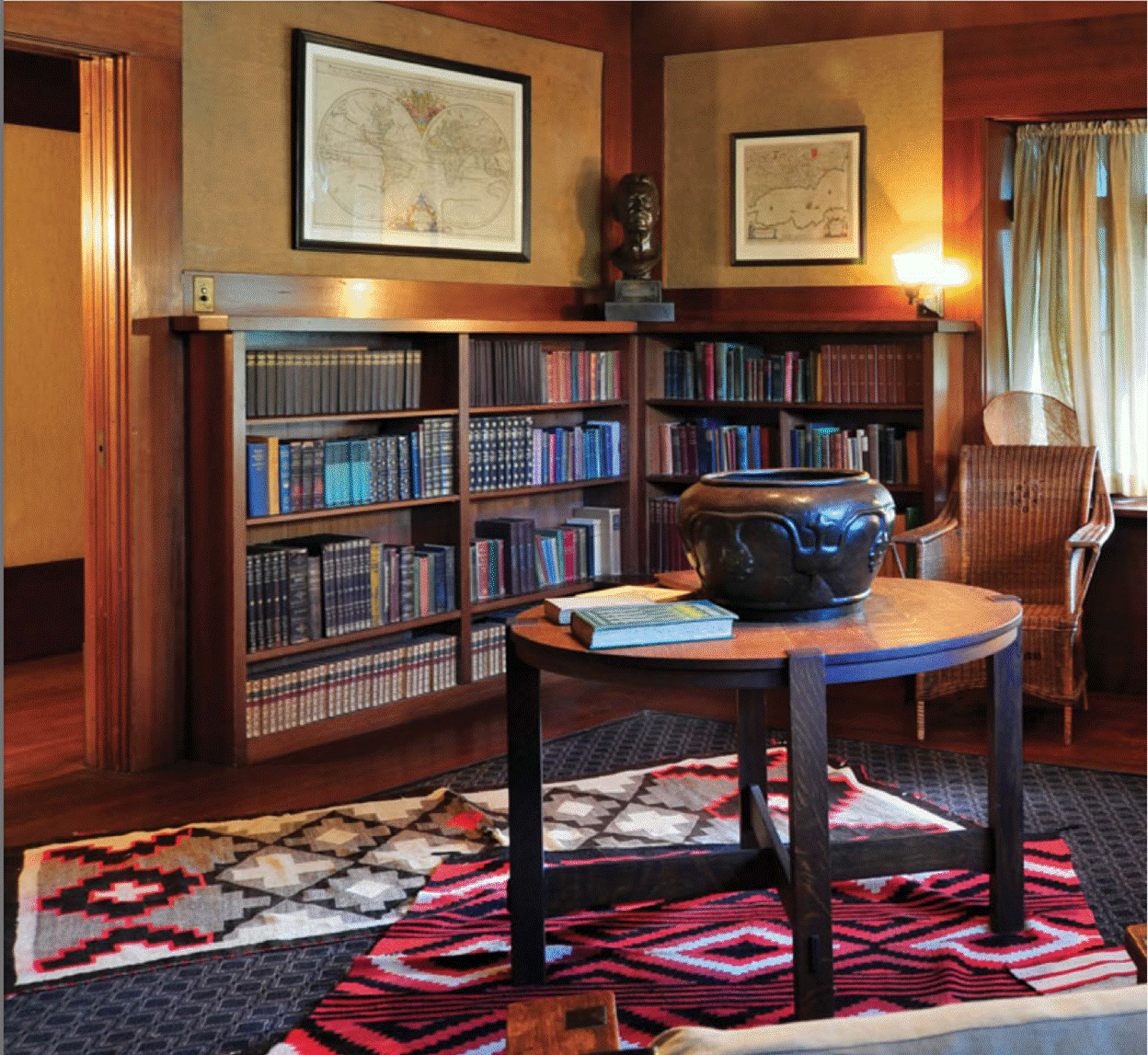
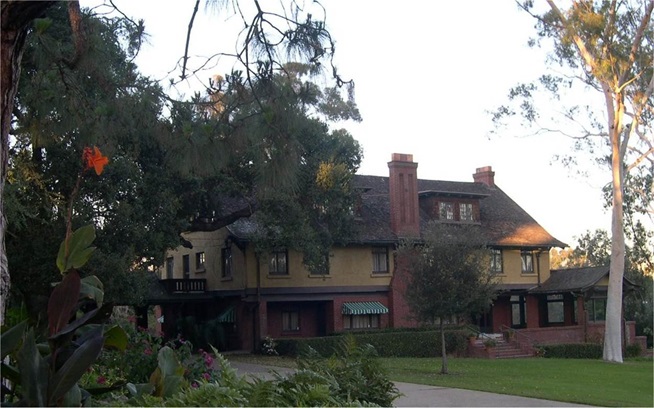
1905 - The George W. and Anna G. Marston House, 3525 7th Avenue, San Diego CA. Commissioned in 1904. Gill and Hebbard designed and built the house. Converted into a museum in 1987 after the Marston family gave the house to the City of San Diego. As of 2023, maintained by Save Our Heritage Organization.

1905 - The Charles P. Douglas House, aka Mary Johnson House, 202 Nutmeg Street, San Diego CA. Destroyed in the late 1950's.

1905 - Private House, Apponaug Rhode Island, aka East Greenwich. Status unknown.
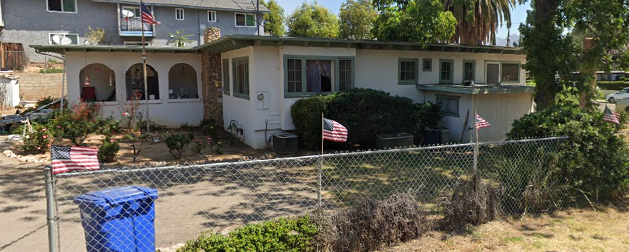
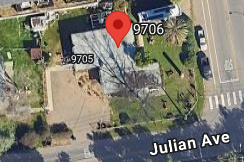
1905 - The John H. Kleine House #2, 9706 Channel Road, Lakeside CA. Designed with Hebbard. Reportedly moved from its original location (two lots in 1987). Historic aerial shows house there in 1988 (empty lot previously).
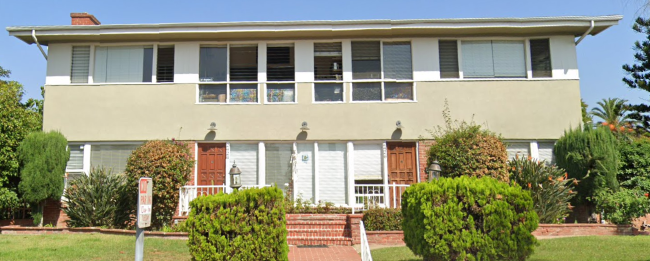
1905 - The Samuel L. Wood House, 2424-2426 C Street, San Diego CA. Designed with Hebbard. Clipping from May 31, 1905. Sold in late 1910’s to Edwin Johnson. Sold to the St. Villie Trust. Greatly altered. Sold in 2000 to 2424 C Street Inc. Converted to rental apartments.



1905 - The McCagg House, Bar Harbor ME. Destroyed.
1905 - The William H. Porterfield House, 3365 Upas Street, San Diego CA. Destroyed.
1905 – The U. S. Grant Jr. Block, 4th Avenue between Broadway and C, San Diego CA. Destroyed.

1905 - The John Olmsted House, Chepiwanoxet RI. Son of Frederick Law Olmsted. Status unknown.
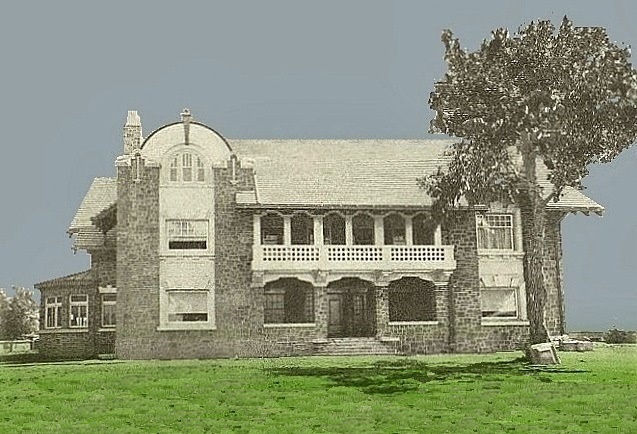
1905 – The Lycurgus Lindsay House, 3424 West Adams Boulevard, Los Angeles CA. Charles F. Whittlesly was the primary architect, Gill assisted in some way. Became part of Our Lady of the Bright Mount Catholic Church.
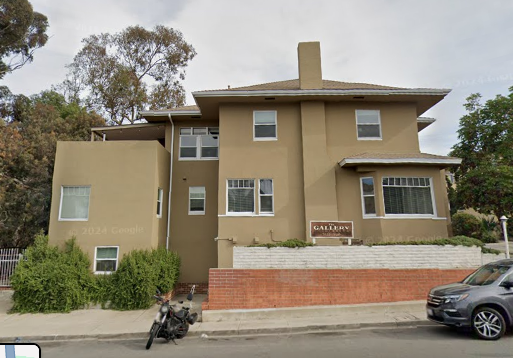
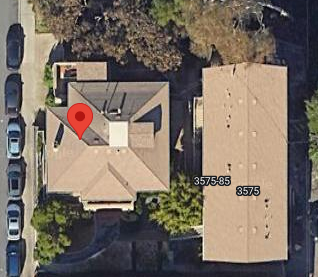
1905 - The Charles S. Hamilton House, 3583 6th Avenue, San Diego CA. Sold in the 1930's to Samaritan Alcohol Treatment Center. The property was readdressed as 3575–3585 in the late 1940s or early 1950s. Sold to R. J. Casale. Sold to Sarah Utt. Leased in 1916 to Mayor James Wadham. Sold in 2019 to SK4 Hillcrest LP. Became a rental.
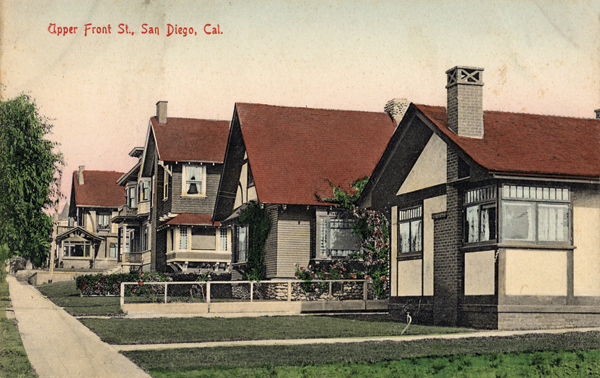
1905 - The Mary C. Johnson House, 2233 Front Street, San Diego CA. Designed with Hebbard. Destroyed without public review or notice in July 2006.
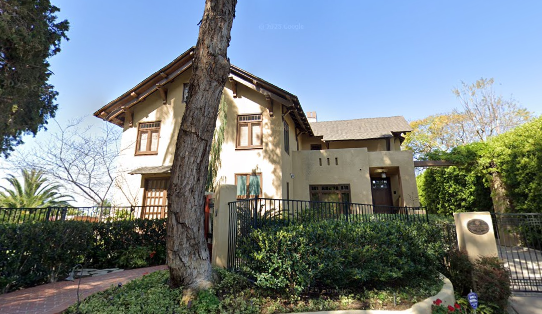
1905 - The Charles Fox House, 3100 Brant Street, San Diego CA. Designed solely by Hebbard.
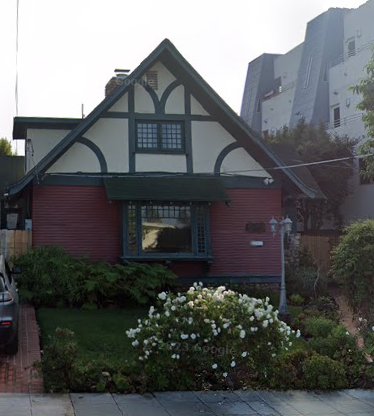
1905 - The Edward Grove House, 2243 Front Street, San Diego CA. Sold to Walter and Penny Waller. Sold in 2005 to Norman and Susan Finkelstein.
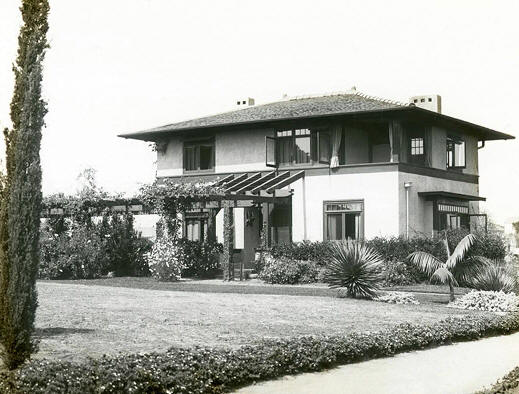
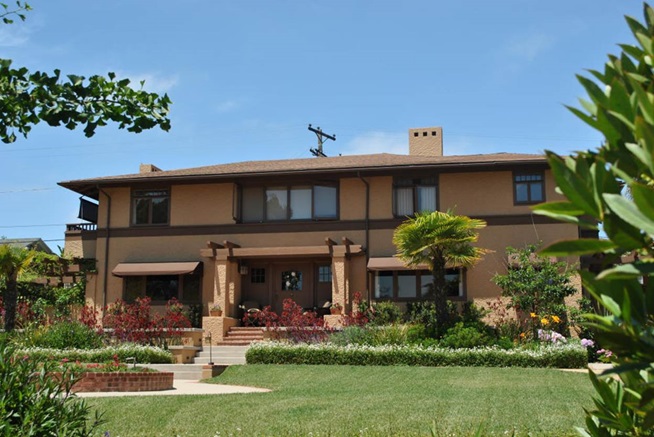
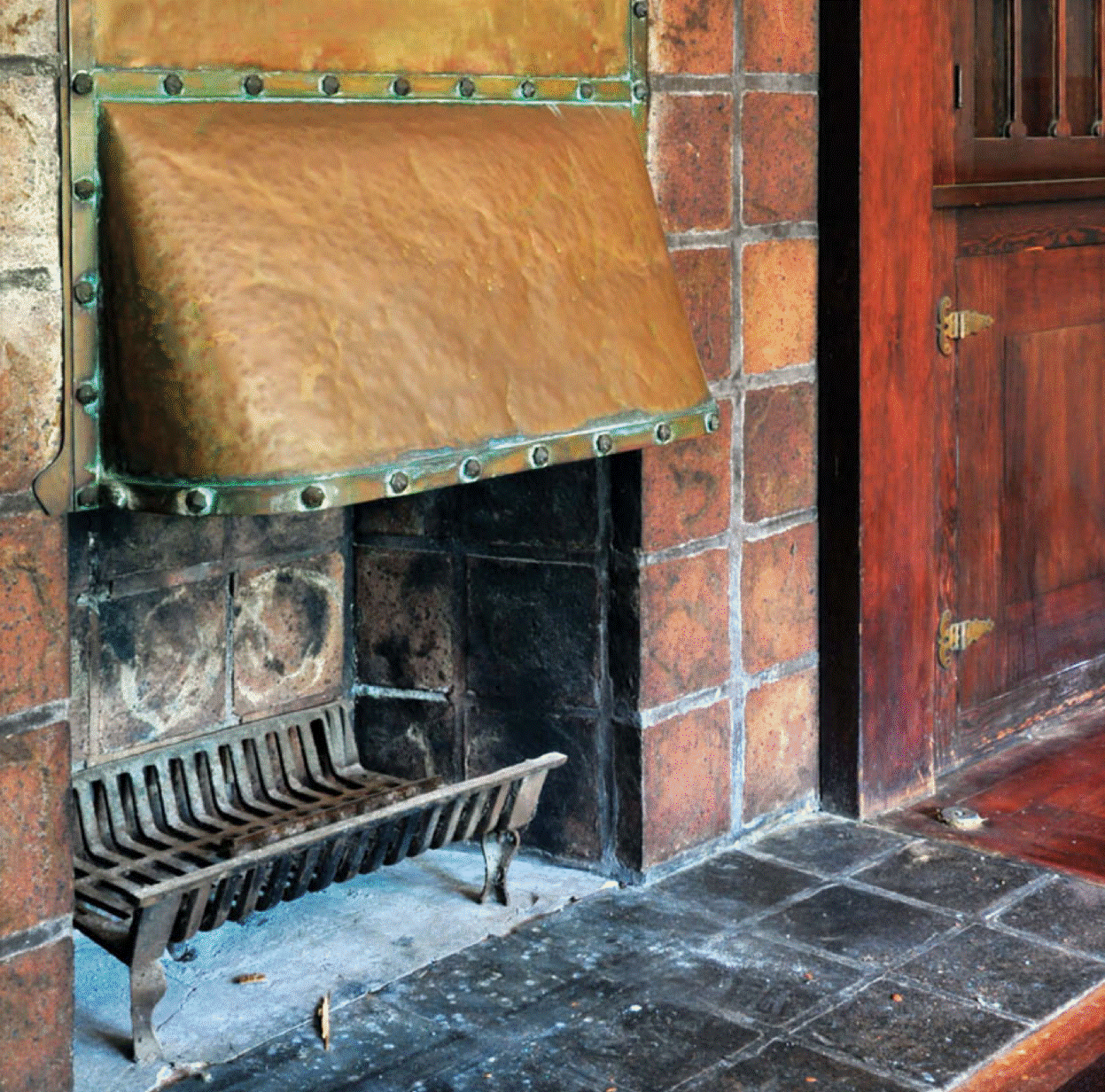
1905 - The Alice Lee House, 3574 7th Avenue, San Diego CA.In 1911, Lee hired Gill to enlarge the cottage and add a basement garage down the slope, dining room on the first floor and upstairs renovations. Architect and engineer Frank P. Allen Jr., resided here from 1911 to 1915. Photo by Kansas Sebastian. San Diego Historic Site #99. 3574 7th Avenue; 3560 7th Avenue; and 3578 7th Avenue were initially configured around a shared courtyard connected by a U-shaped pergola, planned by landscape architect Kate Sessions. The project was one of Gill's first experiments in multiple-residential designs, which he would become known for later in his career. Lee and Teats lived in the main house and used the other two for rentals. Sold around 2007 to Maria and Patricia Calderon.
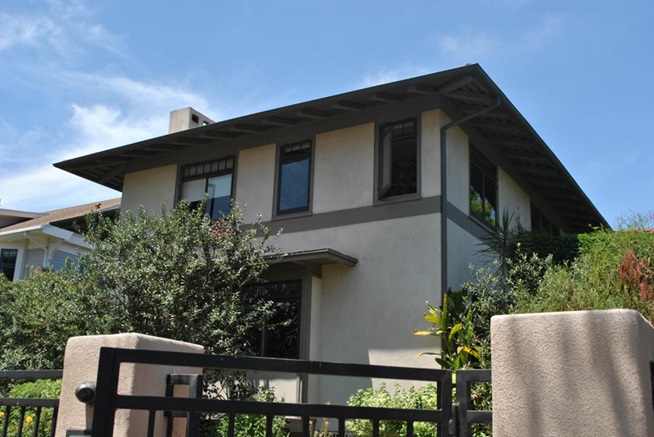
1905 - The Katherine Teats House, 3560 7th Ave, San Diego CA. Altered in 1912 by Gill and again by Gill's nephew, Louis Gill, in 1922. Changes to the house enclosed the porch to the south and extended the second story. Henry and Ellen Babcock purchased the home in 1923. 3574 Seventh Avenue, 3560 Seventh Ave, and 3578 Seventh Avenue were initially configured around a shared courtyard, connected by a U-shaped pergola, planned by landscape architect Kate Sessions. The project was one of Gill's first experiments in multiple-residential designs, which he would become known for later in his career. Lee and Teats lived in the main house and used the other two for rentals. Sold to Robert and Phyllis Vodicka. Sold in 1995 to Patrick Greene and Jay Weelborg. Sold in 2013 to Paula Cronovich. San Diego Historic Site #98.
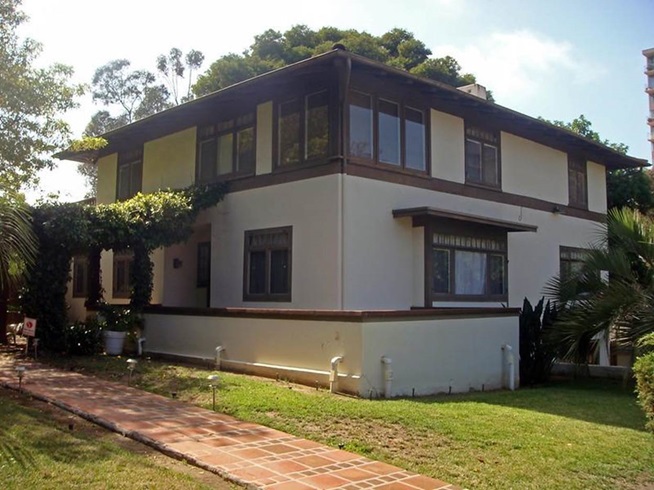
1905 - The Alice Lee Cottage, 3578 7th Avenue, San Diego CA. In 1911, Alice Lee hired Gill to enlarge the cottage, extending the building to the north and adding a basement garage down the slope. Gill added a dining room on the first floor and, upstairs, a bedroom and bath with a sleeping porch on the southeast corner. Architect and engineer Frank P. Allen Jr., and his family resided here from 1911 to 1915. Photo by Kansas Sebastian. San Diego Historic Site #99. 3574 7th Avenue; 3560 7th Avenue; and 3578 7th Avenue were initially configured around a shared courtyard connected by a U-shaped pergola, planned by landscape architect Kate Sessions. The project was one of Gill's first experiments in multiple-residential designs, which he would become known for later in his career. Lee and Teats lived in the main house and used the other two for rentals. Sold prior to 2007 to Maria and Patricia Calderon.
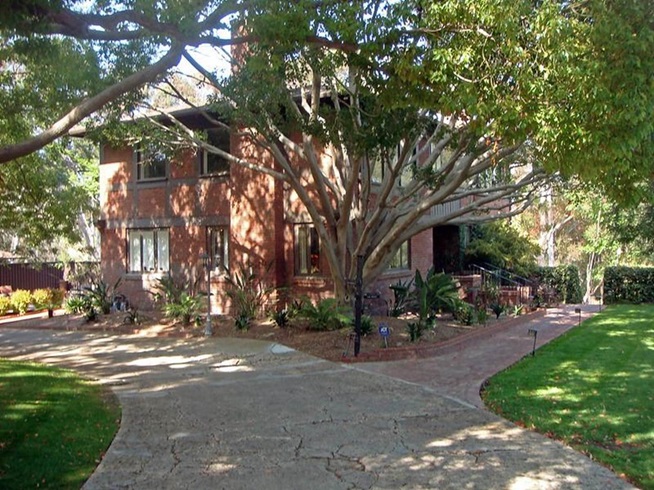
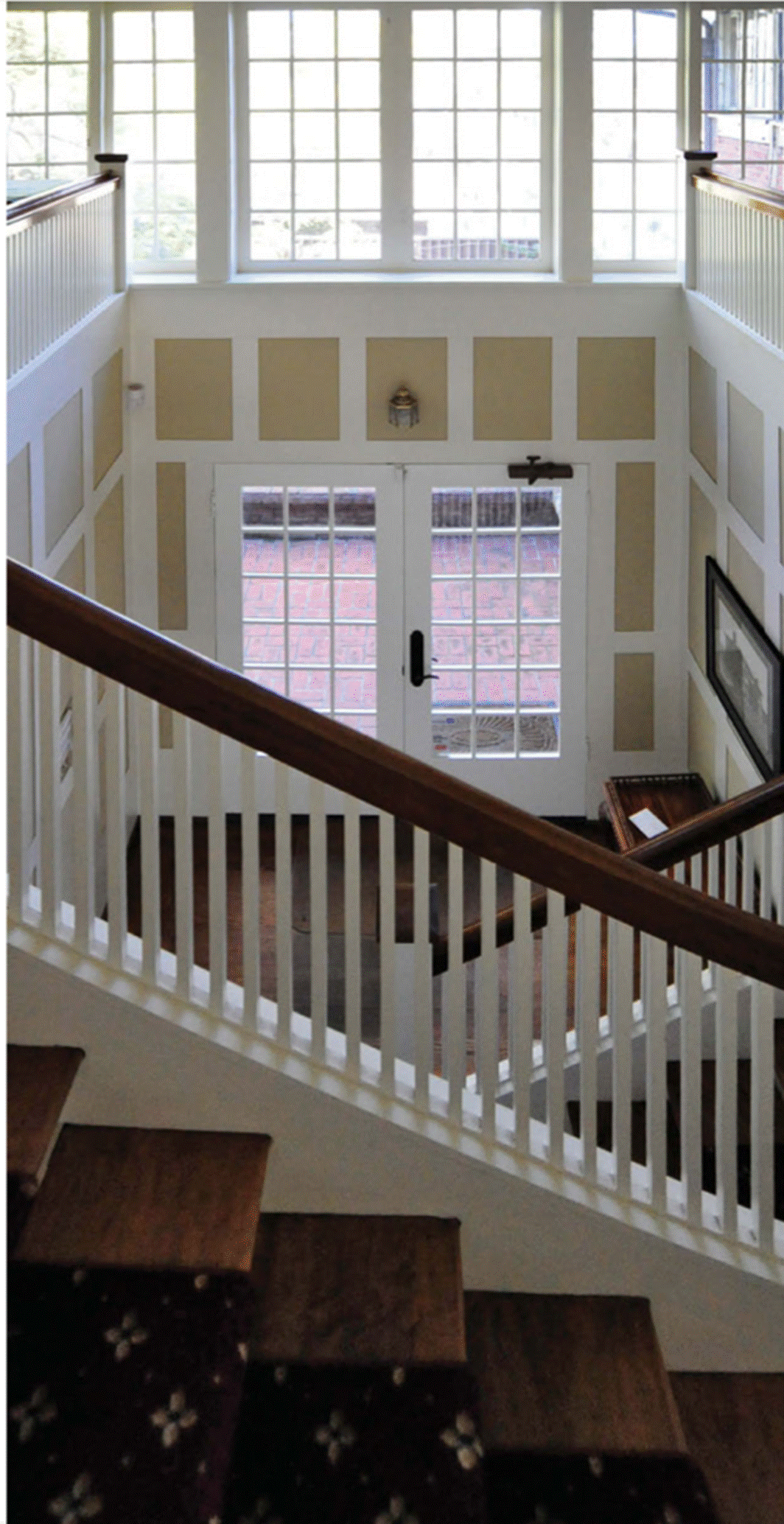
1906 - The Frederick and Lilla Burnham House, 3563 7th Avenue, San Diego CA. Designed by Hebbard & Gill for the sister and brother-in-law of George Marston. In 1948, the Burnham's two daughters converted the house into two units and lived there on separate floors. A new wall inserted beneath the staircase divided the house into separate upstairs and downstairs units, with the staircase providing private and direct access to the second-level apartment. This modification left the grand staircase intact. The building has recently been converted from a residence into offices. City of San Diego Historical Registry #41 and National Register of Historic Places #86002665. Photos by Kansas Sebastian. Tours available.
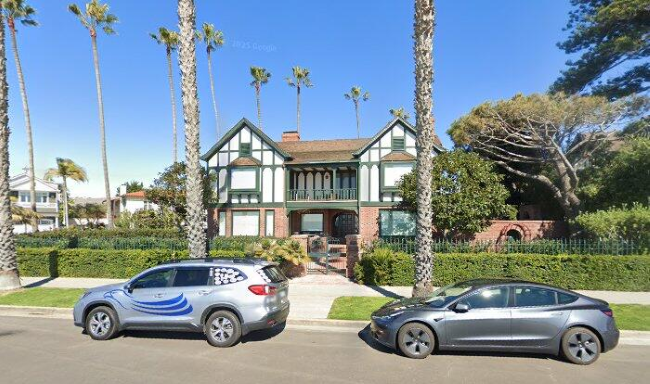
1906 - The Arles Tutt House, 1007 Ocean Boulevard, Coronado CA. Sold in 1992 to James F. Runner aka Ocean Blvd LLC.
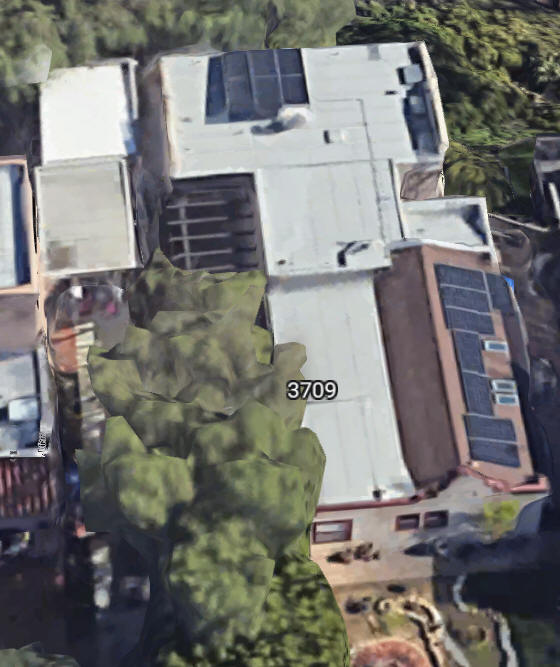
1906 - The Irving Gill Cottage, 3709 Albatross Street, San Diego CA. Sold in 1924 to the Hendrie Family. Sold in 2010 to Karil Craig. Likely destroyed or heavily modified.






1906 – The Frank W. Barnes House, 3405 4th Avenue, San Diego CA. Destroyed.
1906 – The Gustav Breslin House, 2078 University Avenue, San Diego CA. Destroyed.
1906 – The Ermina Carrington House, 3344 5th Avenue, San Diego CA. Destroyed.
1906 – The Margaret Tripp Alterations, 3024 5th Avenue, San Diego CA. Destroyed.
1906 – The J. Wade McDonald House, 5th Avenue at Upas Street, San Diego CA. Destroyed.
1906 – The Bernard W. McKenzie House, 3720 7th Avenue, San Diego CA. Destroyed.
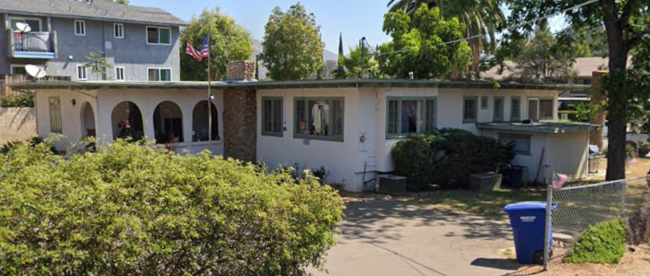
1906 – The John Kleine House #2, 9706 Channel Road, Lakeside CA. Sold to G. Marcella Williams. Status unknown.
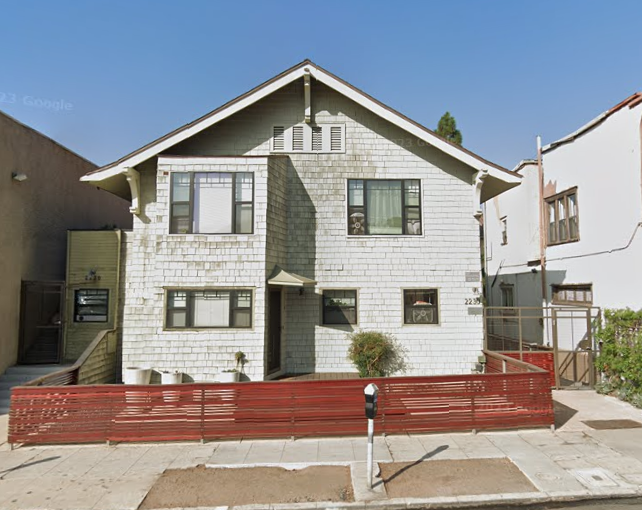
1906 - The Sam Ferry Smith House, 2230 4th Avenue, San Diego CA. Designed with Hebbard. Converted to apartments. Sold to the Wexler Family Trust.
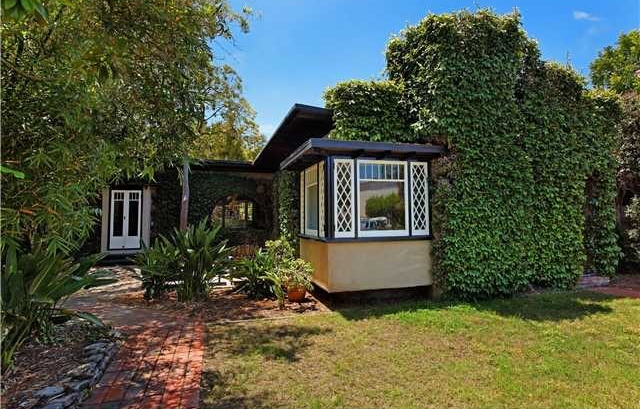
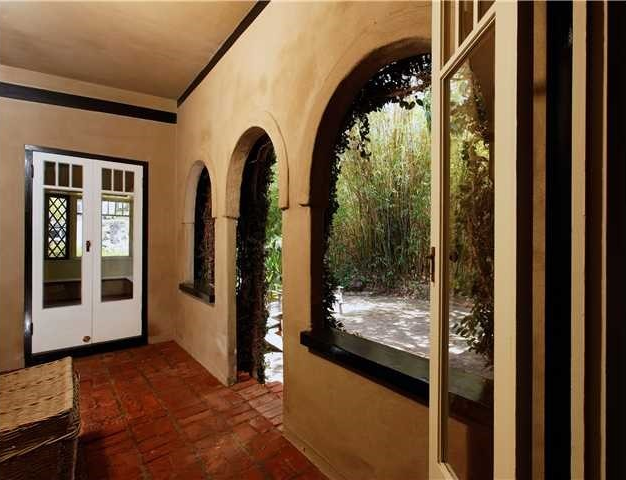
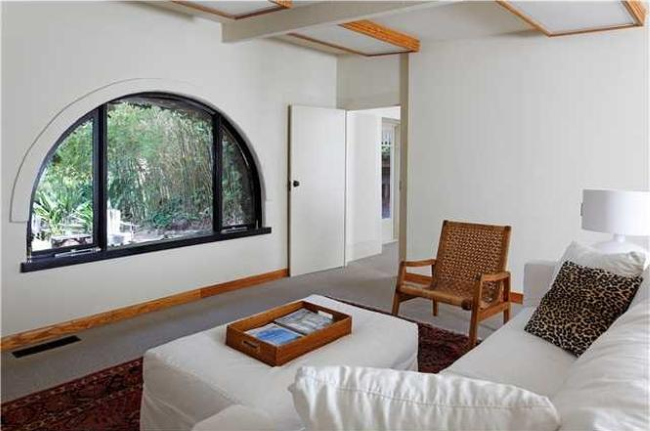
1906 - The Irving Gill Cottage, 3776 Front Street, San Diego, CA. Designed with Hebbard. Sold to the Ferris Trust. Sold in 2000 to John and Barbara Stevenson. Sold in 2011 to Heidi and Deborah Callahan. Sold in 2023 to N. Andrew and Cassidy Boyd.
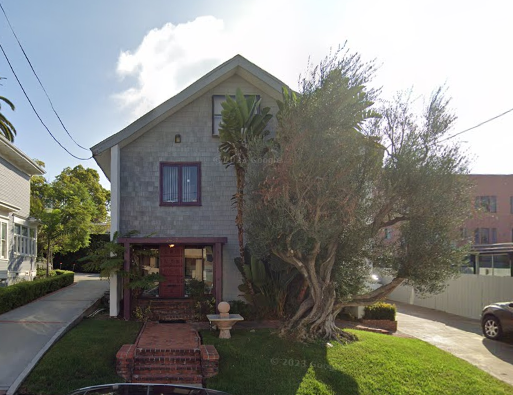
1906 - The Homer C. Oatman House, 2437 2nd Avenue, San Diego CA. The home was owned by the Oatman family until at least 1961. Sold to the Ayer Trust. Sold in 2003 to Steve and Laura Hansen. Sold to Creative Fusion Graphic Design.

1906 - The Edmund Parmelee House, 202-204 West Ivy Street, San Diego CA. Greatly altered. Destroyed sometime between 2005 and 2009.

1906 - 280 East Olive Drive, San Diego CA. Likely destroyed for the 805 Freeway.
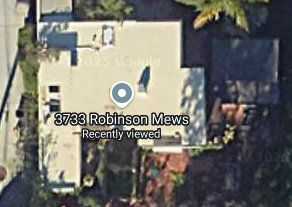
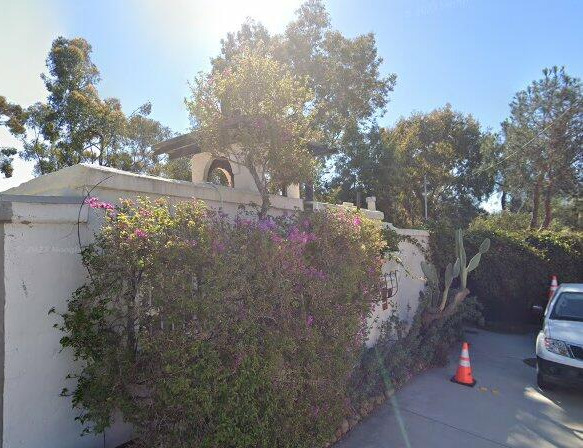
1906 - aka Prototype Workers Cottage, 3733 Robinson Mews, San Diego CA. Altered. Sold to Dorothy Glidden. Sold in 1988 to Benjamin Baltic and Douglas B. Scott.
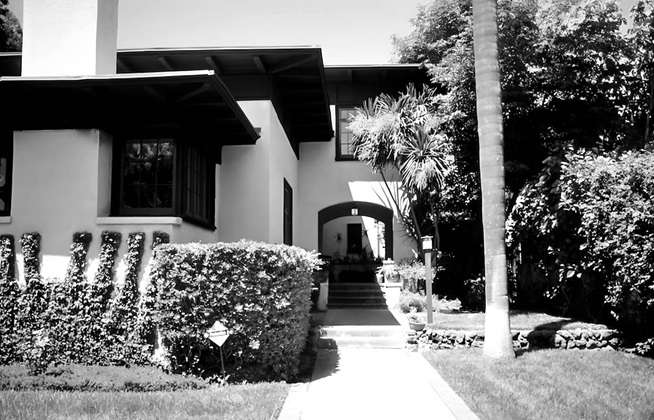
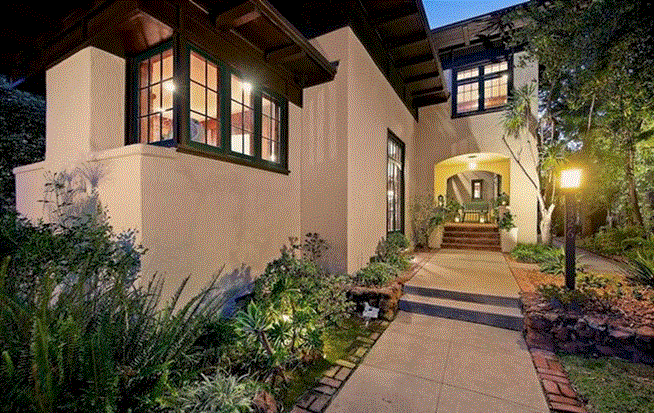
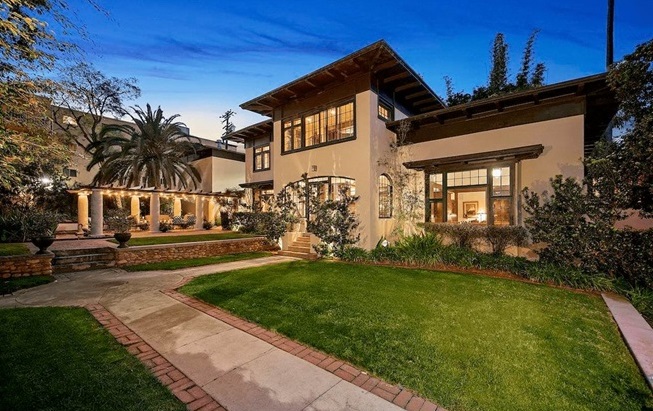
1906 - The Frederick and Mary Cossitt House, 3526 7th Avenue, San Diego CA. Sold in 1990 to Laurence and Susan Favrot. City of San Diego Historic Registry #97.
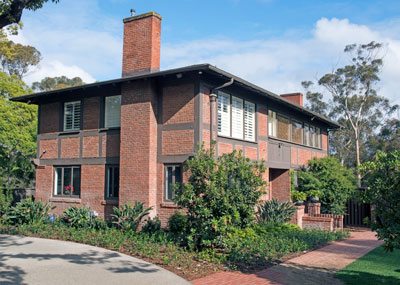
1907 – The Frederick R. Burnham House, aka Burnham-Marston House, 3563 7th Avenue, San Diego CA. Two houses of similar design share gardens and grounds: the 1904 George White Marston House, and the 1909 Arthur Marston House. As of 2023, maintained by Save Our Heritage Organization.
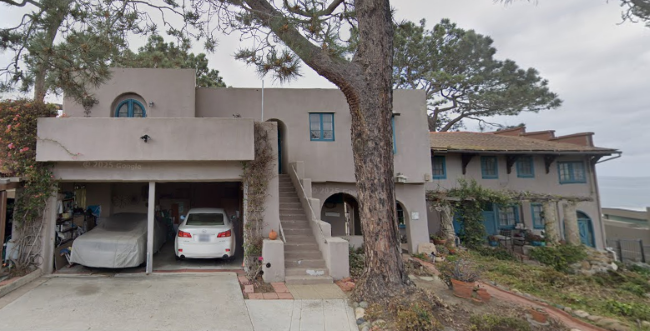
1907 - The Wheeler J. Bailey House, aka Hopi House, 7964 Princess Street, La Jolla CA. Designed with Mead. Gill later added a garage with living quarters in 1910 and a guest cottage in 1932. Address formerly 7954. Sold to David North Reynolds, whose mother Helen North Reynolds was Wheeler Bailey's niece. Status unknown.
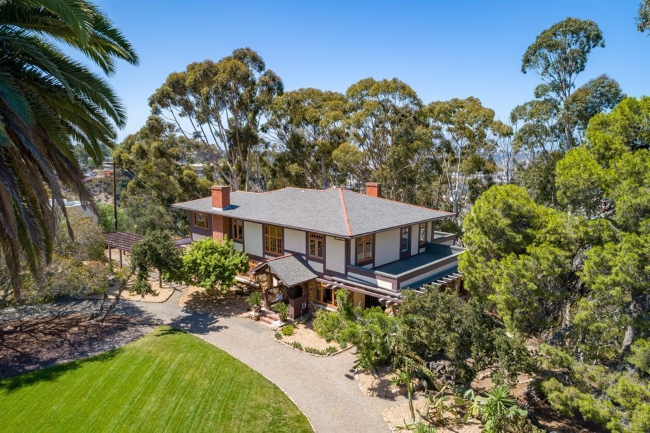
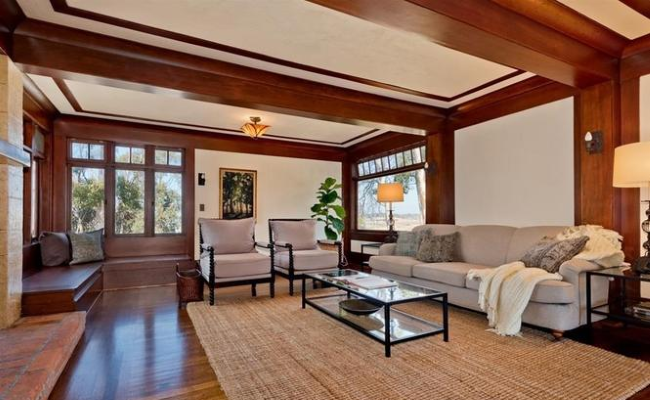
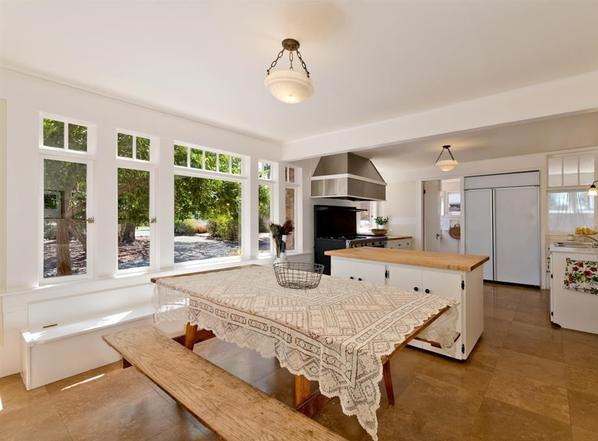
1907 - The George M. and Edith H. Hawley House, 4744 Panorama Drive, San Diego CA. Sold to Ellen and Ralph Lowberg. Sold in 2019 to Michael and Erika Cheswick.
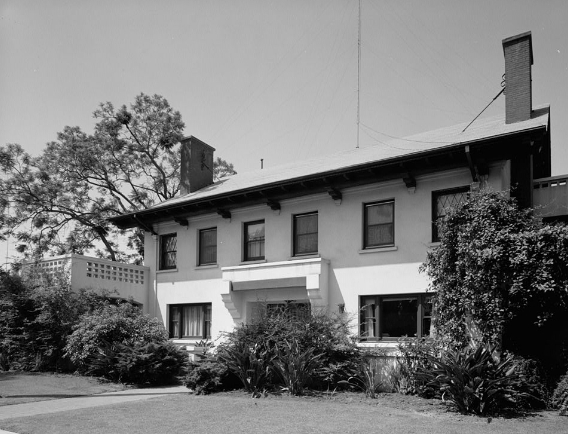
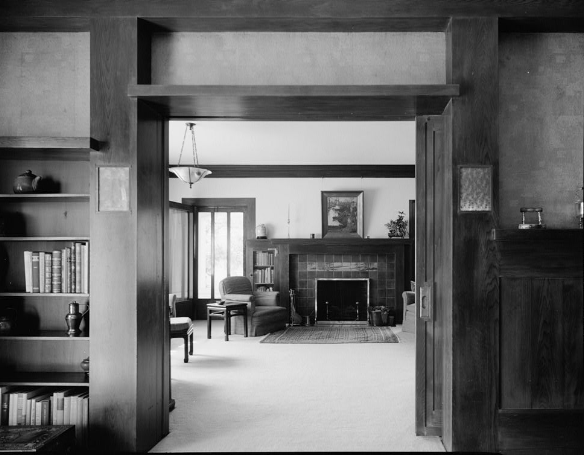
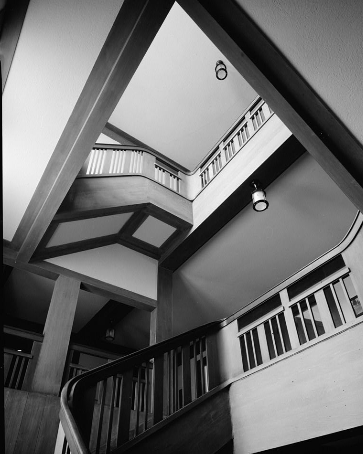
1907 - The Melville Klauber House, 3060 Sixth Avenue, San Diego CA. Klauber died in 1932. Sold in late 1970's to Thomas and Helen Kelly. In 1979, the Kelly's were killed in an airplane accident. The house was destroyed later that year. Park West Condominiums, a 36 unit highrise, was built. Photos from Library of Congress.
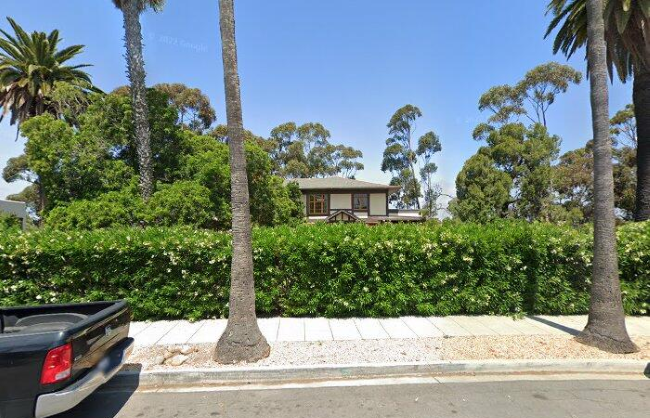
1907 - The George M. Hawley House #2, 4744 Panorama Drive, San Diego CA. Sold to Ellen Lovberg. Transferred in 2007 to Ralph Lovberg. Sold in 2019 to Michael and Erika Cheswick. House recently was remodelled, the original garage was demolished and a new one is being built, some interior remodel of the basement.


1907 - The H. Nevill Goff House, 3850 Fifth Avenue, San Diego CA. Destroyed.
1907 - The Isaac Irwin House, 535 Date Street, San Diego CA. Destroyed.
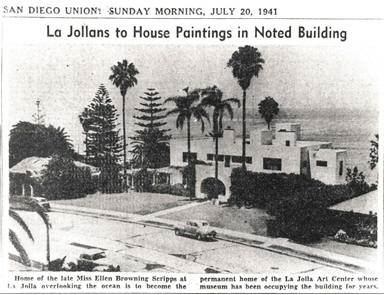
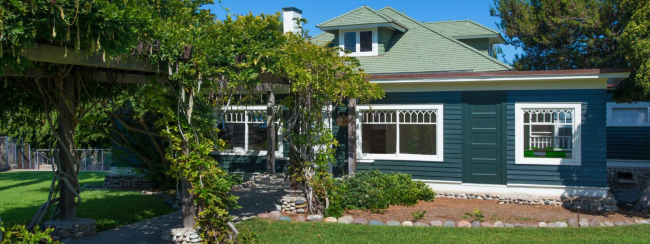
1908 - The Ellen Scripps Cottage Alterations, aka South Moulton Villa, 780 Prospect Street, La Jolla CA. Formerly addressed as 700 Prospect. Designed with Hebbard. Remodeled by Gill in 1911. Gill also designed a guest cottage and a "propogating house." In 1941 it became part of of the La Jolla Arts Center, which became the Museum of Contemporary Art of San Diego (MCASD). In 1950, architects Mosher and Drew modified it to include formal galleries.
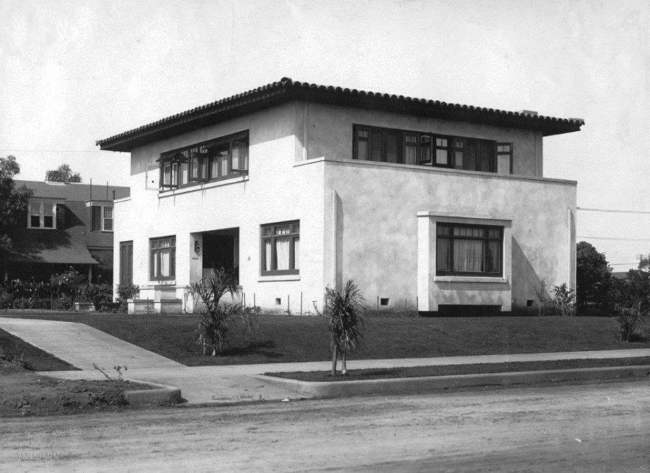
1908 – The Hugo Klauber House, 2626 Sixth Avenue, San Diego CA. Three blocks south of the Melville Klauber House, Hugo Klauber's older brother. Destroyed.
,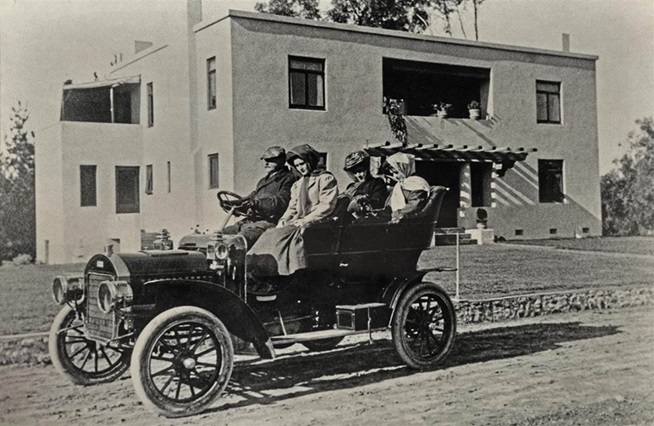
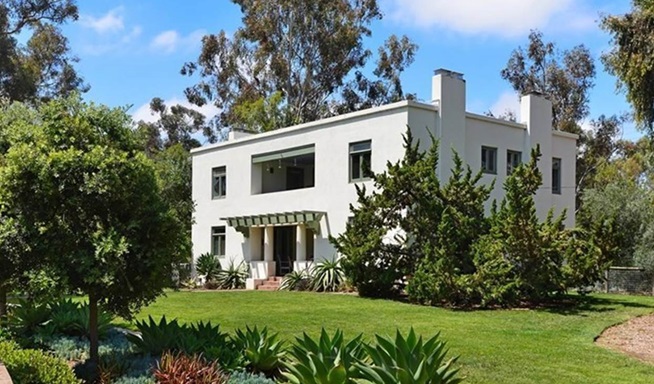
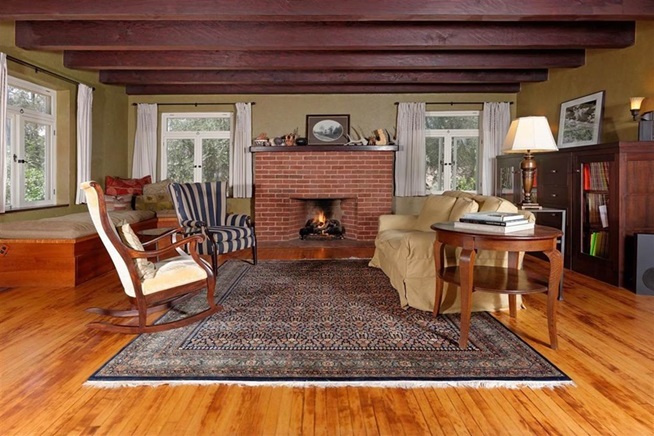
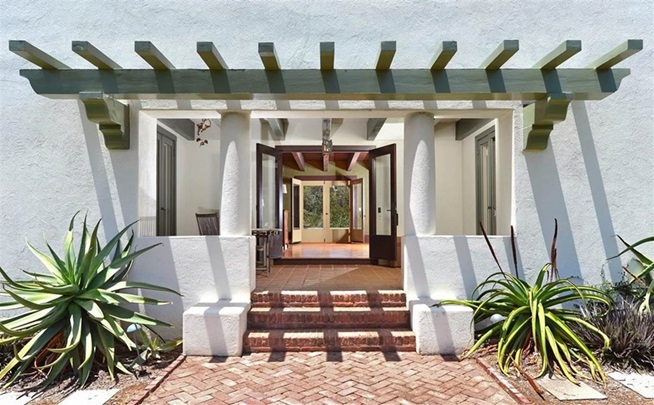
1908 - The Russel C. Allen Residence, 4094 Old Orchard Lane,, Bonita CA. Commissioned in 1907. One of the earliest examples in the world of a unadorned, Modernist house. Sold in 2014 to Gregory Strangman.


1908 - The Annie B. Darst House, 502 Kalmia Street, Fallbrook CA. Destroyed.
1908 - The Newell H. Webster House, 1516 7th Street, San Diego CA. Destroyed.
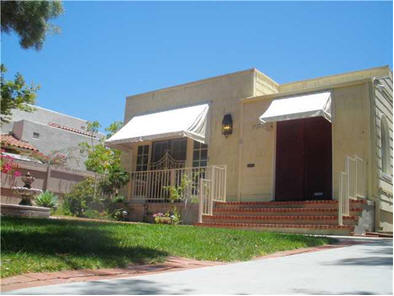
1908 - The Irving Gill Cottage, aka Prototype Workers Cottage,721 Albatross Street, San Diego CA. Formerly numbered as 3719. Sold in 2013 to Brandon White. Extensively remodeled in 2021.
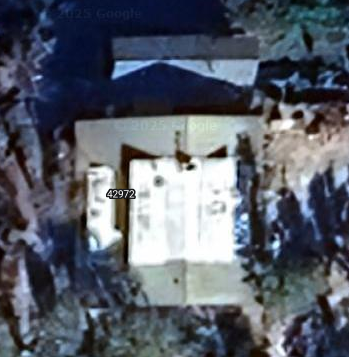
1908 - The John H. Williams Summer House, 42972 Capanero Oaks Court, California Hot Springs CA. Possible current owner Jean Rose.

1908 - The Hamilton-Fulford House, 3500 Seventh Avenue, San Diego CA. Destroyed.
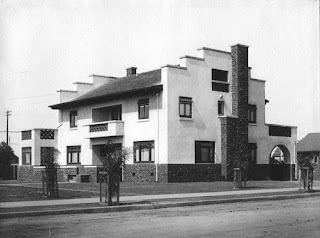
1908 - The Sherwood Wheaton House, 3102 6th Avenue, San Diego CA. Destroyed around 1980, likely by the same investors who razed the Melville Klauber House. Became condos in 2013. Photo from UC Santa Barbara Architecture and Design Collections.
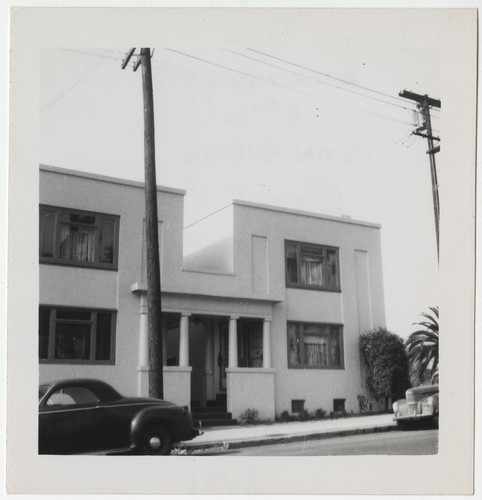
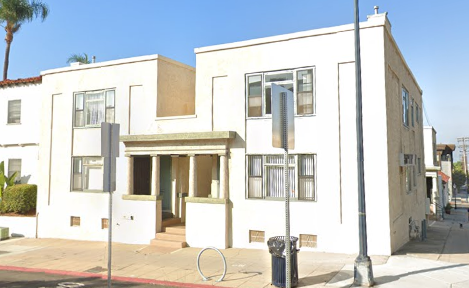
1908 - The Annie B. Darst Flats #1, 2264-2270 5th Avenue, San Diego CA. Became ADD Realty owned by Alec Deaton.
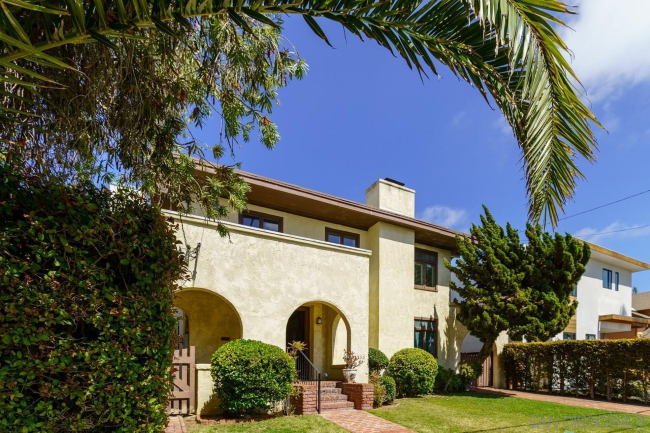
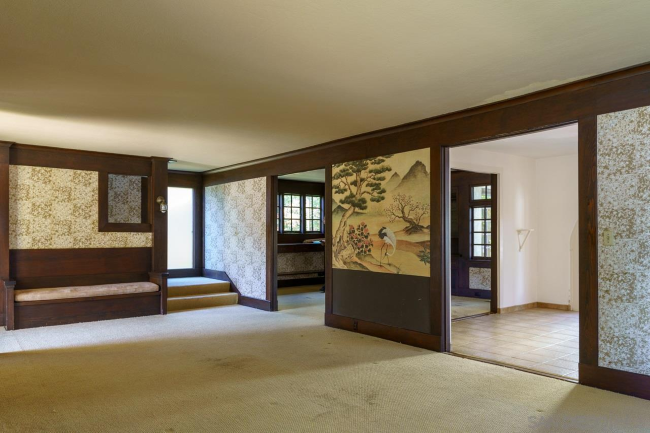
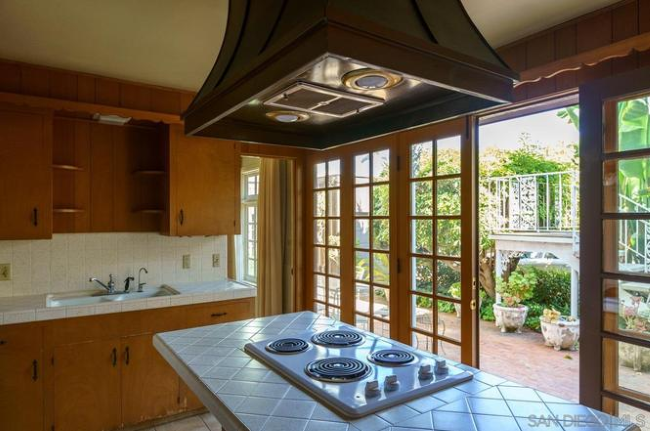
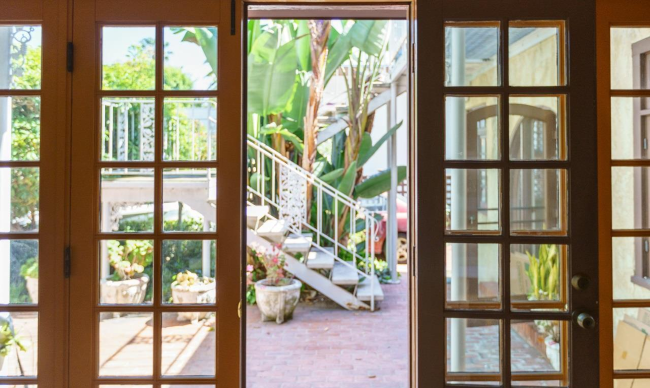
1908 - The George and Maud Easton House, 3353 2nd Avenue, San Diego CA. Builder W. J. Kirkwood. Sold in 1934 to John and Elizabeth Schlappi. Sold in 1962 to Warren and Dorothea Day, transferred to son in 2000. Sold in 2018 to Ken and Anita Hayden. Some alterations and additions over the years, primarily interior. After 1962, original garage destroyed and a one-story bed/bath was added off kitchen. A guest unit was also added. In 2024, the owners applied for National Register nomination.
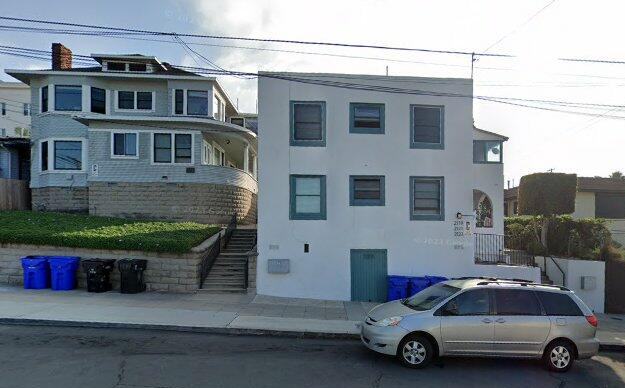
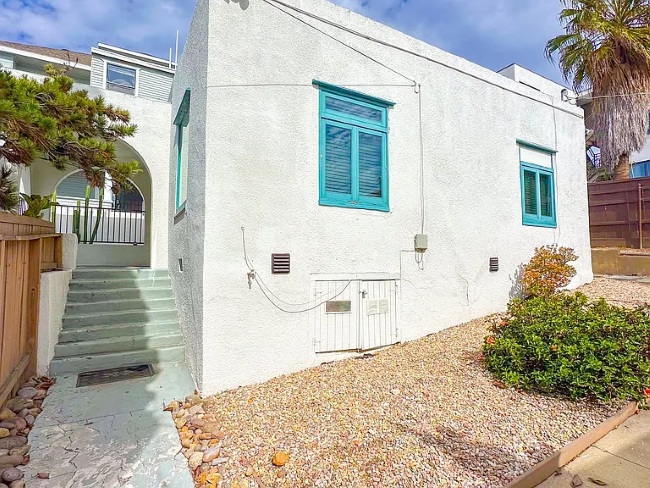
1908 - The Irving J. Gill Triplex, 2119-2123 Albatross Street, San Diego CA. Sold in 2016 to Christopher Donovan and Teanna Timmons. Sold in 2024 to Bill Wyatt. Interior has been updated.
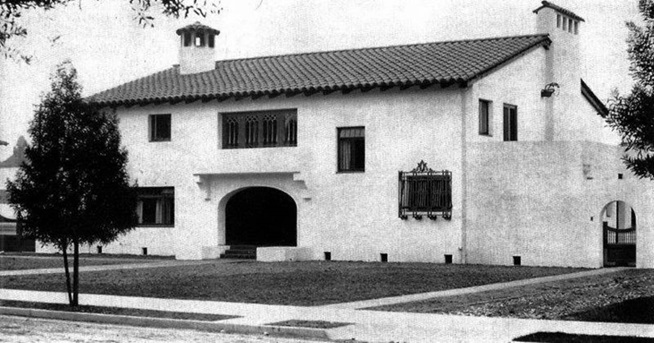
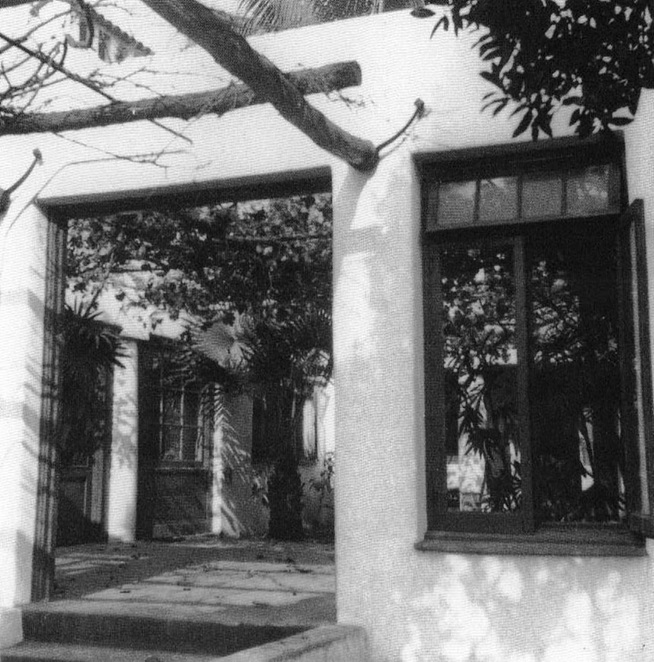
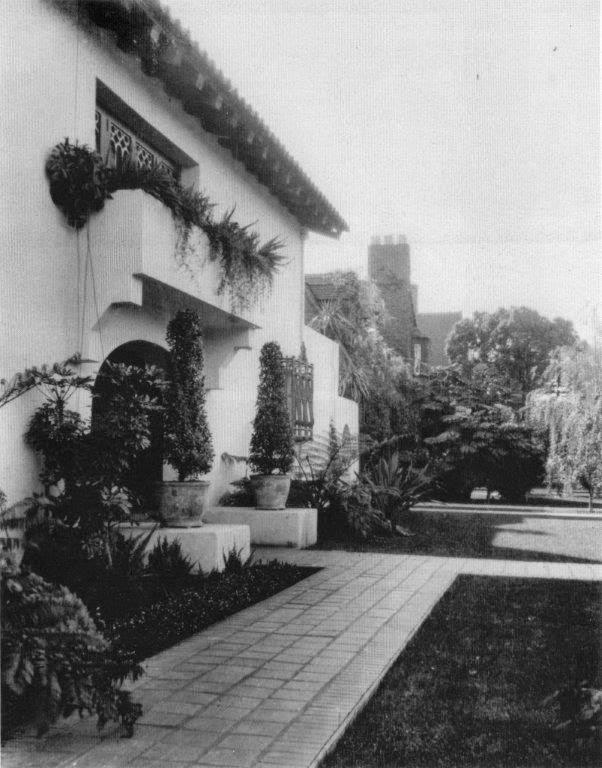
1908 - The Homer Laughlin Jr. Residence, 666 West 28th Street, Los Angeles CA. The Los Angeles Herald in 1908 declared that Laughlin's residence featured things well before their time, like a central vacuum system with an outlet in each room pulling dust to the furnace; a garbage disposal in the kitchen dropping garbage to an incinerator in the basement; an automatic gas heater and a water filtration system. The ice box in the kitchen had access from the outside, precluding the need for ice delivery inside the house, and milk was delivered through an outside slot. Laughlin's garage had an automatic car-washing machine and a service station-like maintenance pit. Mail was delivered through a mailbox flush with the front door. Laughlin's role as Gill's first solo client brought him to fame. Destroyed.
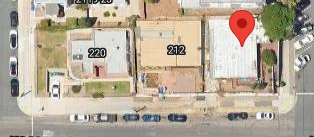
1911 - The Strong-Schlink Cottage #1,
2104 Front Street, San
Diego CA. Sold in 2024 to Sercan Kesercan. Multi unit.
1911 - The
Strong-Schlink Cottage #2,
212 Hawthorne Street, San Diego CA. Sold in 2023 to Mehmet and Ekaterina
Arpaci.
1911 - The Strong-Schlink Cottage #3,
220 Hawthorne Street, San Diego CA. Sold
to Joseph P. O'Toole. Sold in 2011 to Thmas and Cherie Wamser.

1908 - The Peter M. Price House #1, 1355 Granada Avenue, San Diego CA. Sold to Susan Huntzinger. Sold in 1991 to Walter Kamfonik.
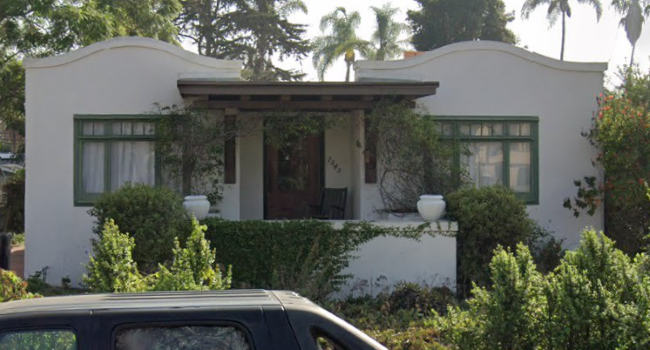
1908 - The Peter M. Price Spec House #2, 1345 Granada Avenue, San Diego CA. Sold to Ronald and Joan Coombs. Sold in 2002 to Daniel W. Davey
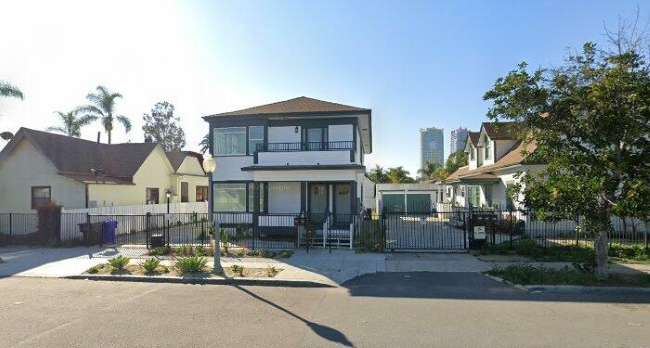
1908 - The J. P. Christensen Flats, 312 22nd Street, San Diego CA. Renovated 2017. Sold to 22nd Street Historic Sherman Heights LLC.
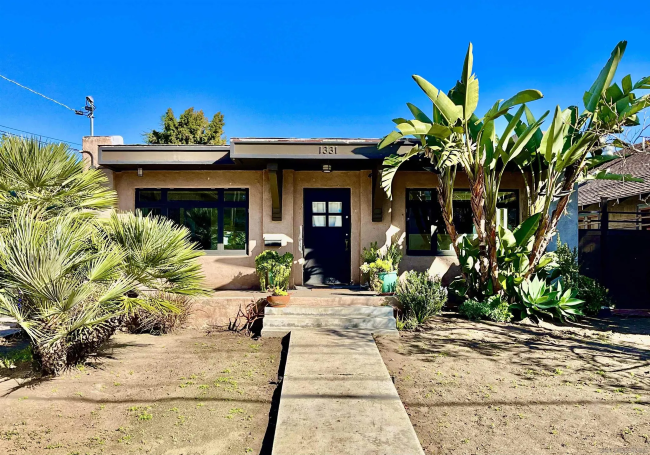
1908 - The Peter M. Price Spec House #2, 1331 Granada Avenue, San Diego CA. Sold to Elaine Almos. Altered. Sold in 1989 to Arthur Jones. Sold in 1991 to Lain and Wilma Reilly. Sold in 2003 to Lauren Guzak and Gregory Poilasne. Sold in 2023 to Kira Newton.
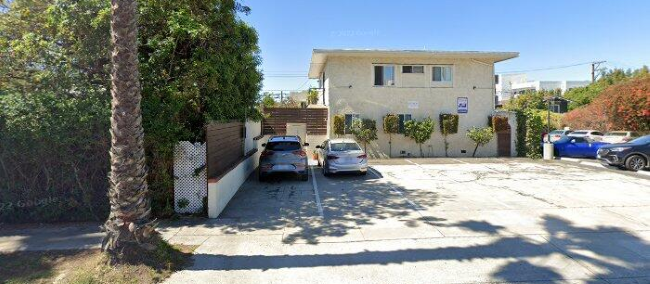
1909 - The E. Milton Barber House #2, 3934 3rd Avenue, San Diego CA. Legal address is 3928–3934, likely apartments. House may have been an investment, as Barber lived on Robinson Avenue; the original house built by Gill in 1900.

1909 - The H. P. Thurston House, Silvergate, Point Loma CA. Destroyed.
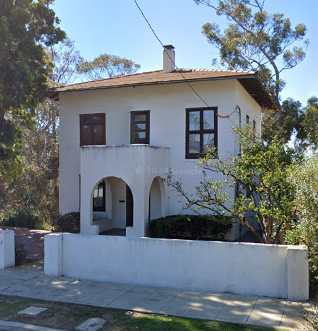
1909 - The G. W. Simmons House, 3506 Albatross Street, San Diego CA. Gill's first "Cube house". The roofline was altered to a pitched roof sometime later. Sold in 1981 to Willard Bucklen and Paula Stober. Sold in 2025 to Michael Jacobs and Roy McMakin.
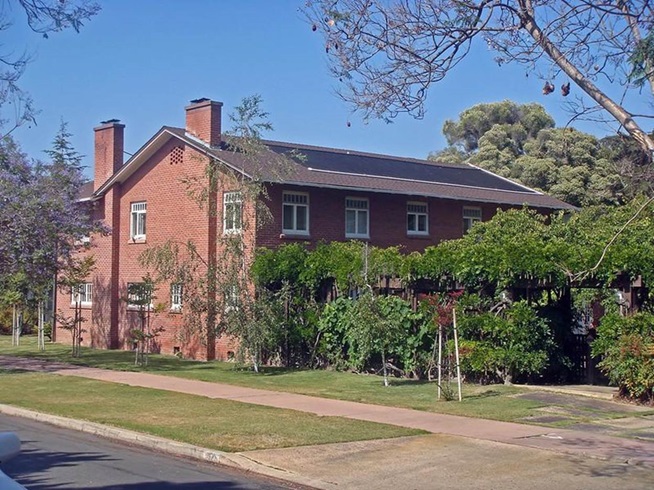
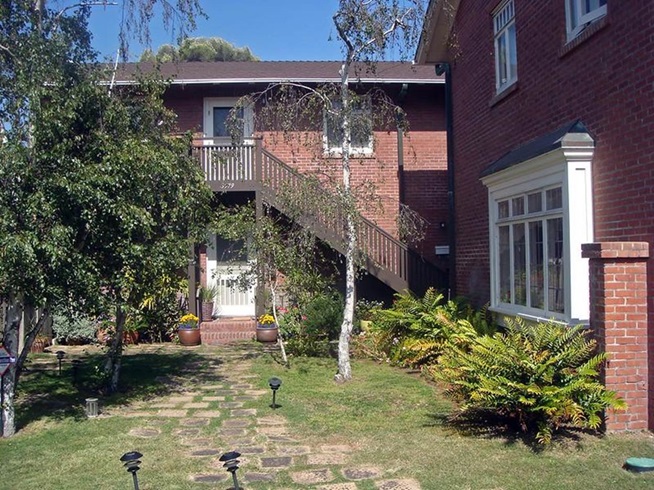
1909 - The Arthur H. and Elsa Marston House, 3575 7th Avenue, San Diego CA. Two houses of similar design share gardens and grounds: the George White Marston House, and the Frederick Burnham House. In 1929 and 1930, Irving Gill's nephew, Louis Gill, his partner from 1914 to 1919, designed a north wing addition and a separate garage with an apartment above. Sold in 2013 to Charles Marston and Rosa Luevano. Photos by Kansas Sebastian.

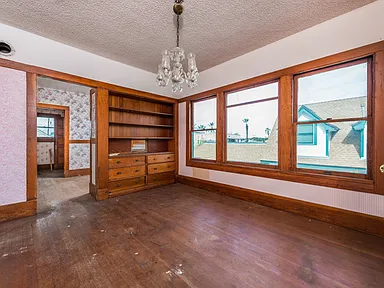
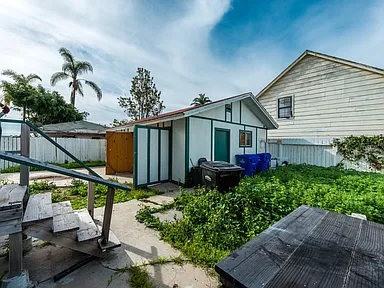
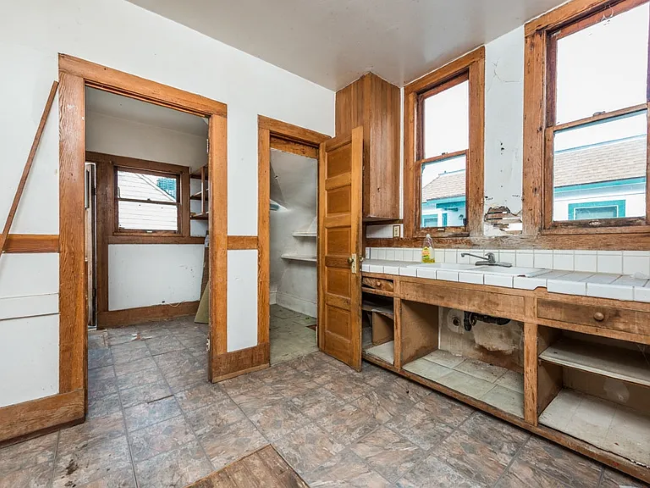
1909 - The John P. Christensen Flats, 312 22nd Avenue, San Diego CA. Sold in 2012 to Maurice Kawashima. Sold in 2016 to Fred Hajar aka Historic Sherman Heights LLC . Additional work on house completed in 2017.

1909 - The Annie B. Darst Flats #2, 5th Avenue at Kalmia Street, San Diego CA. Destroyed.
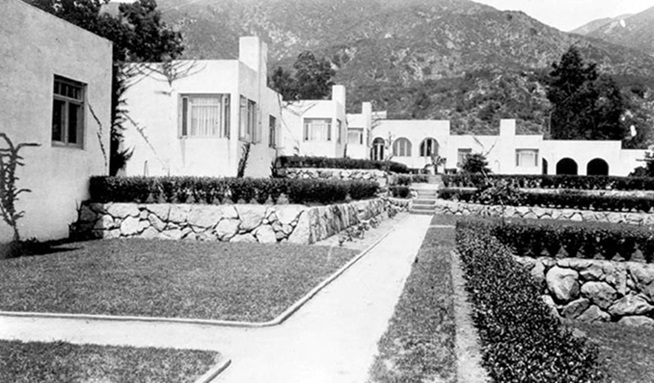
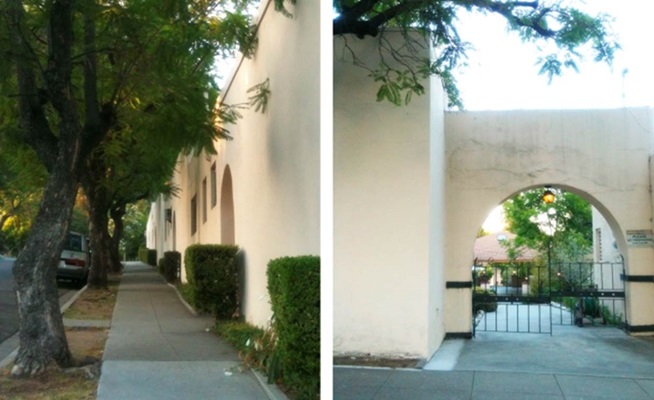
1910 - The Fred B. Lewis-Bella Vista Terrace Courts, Mountain Trail & Alegria Avenue, Sierra Madre, Los Angeles CA. Main address is 261 E. Alegria. Gill built eight cottages for Lewis. Lewis sold Bella Vista Terrace in 1914 and moved to Long Beach. The property, which had Sierra Madre Historic Landmark status, had that removed at the request of its 1997 owner, Healing Light Church. Additional units have been added over the years.
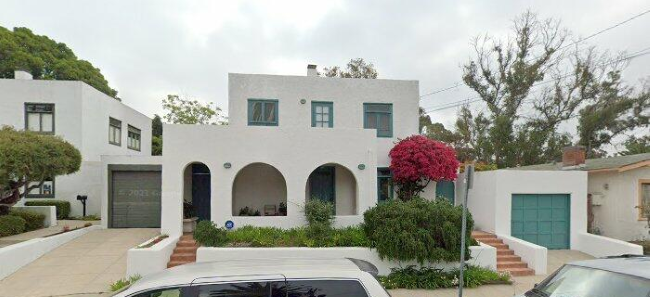
1910 - The Mary Cossitt House #5, 3729 8th Avenue, San Diego CA. Sold to Richard Bucklew. Sold in 1998 to John and Ruth Williams. Sold in 2022 to Prairies Edge LLC.
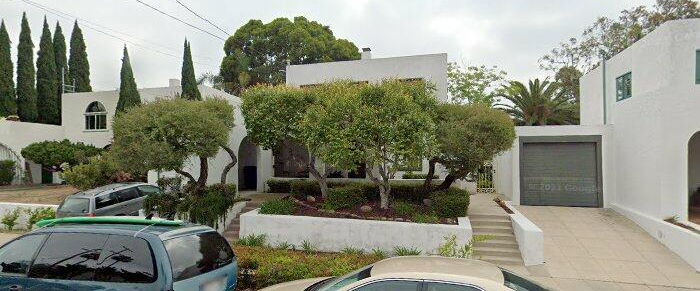
1910 - The Mary Cossitt House #6, 3735 8th Avenue, San Diego CA. Sold to Margaret Elliot. Sold in 1993 to Stephen Sawyer. Sold in 2011 to Martha Davis.
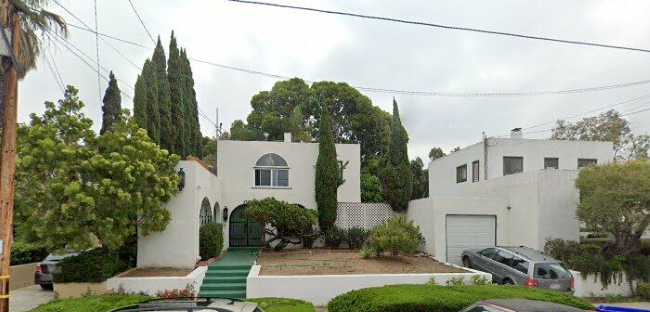
1910 - The Mary Cossitt House #7, 3749 8th Avenue, San Diego CA. Sold to the Lawrence Hamilton Living Trust.
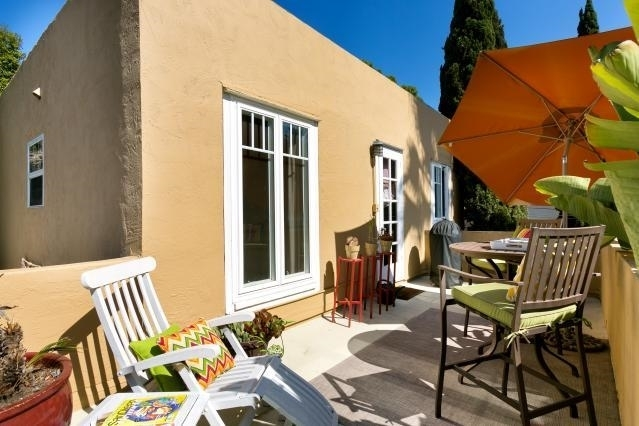
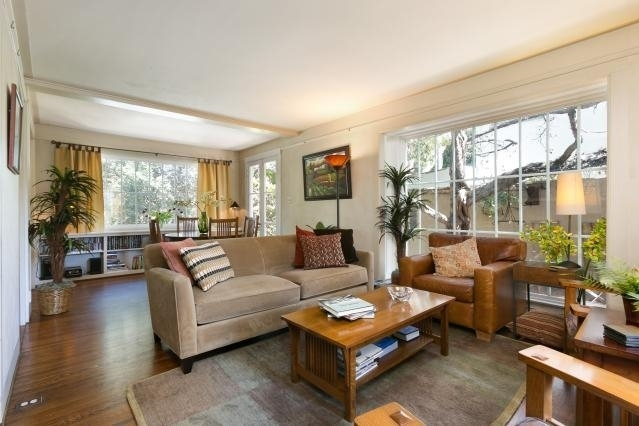
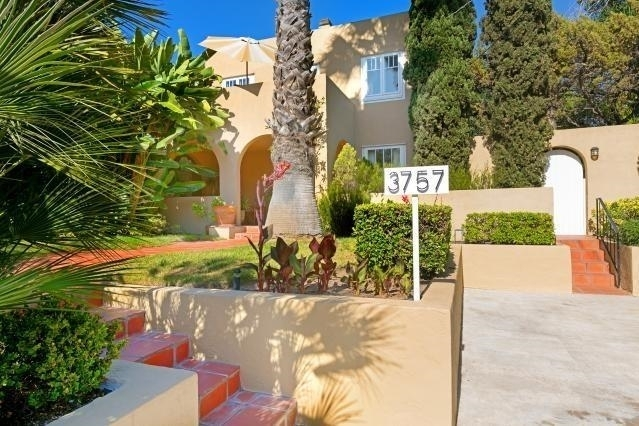
1910 - The Mary Cossitt House #8, 3757 8th Avenue, San Diego CA. Sold in 1988 to Jules Traub. Sold in 1993 to Aaron Slack. Sold in 2015 to Michael Parme.
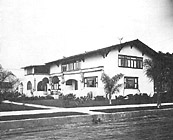
1910 - The Charles L. Gorham House, 6th and Olive, San Diego CA. Destroyed.
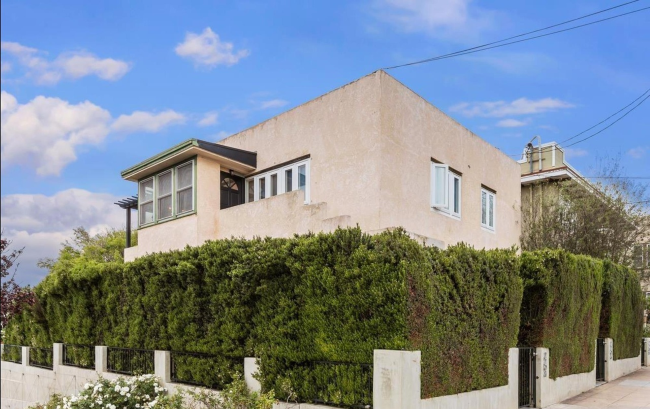
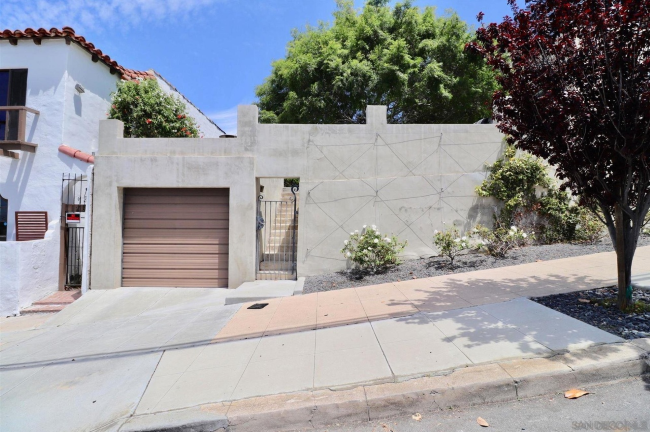
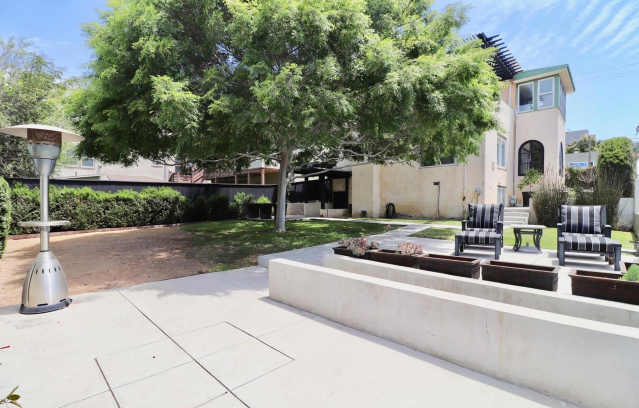
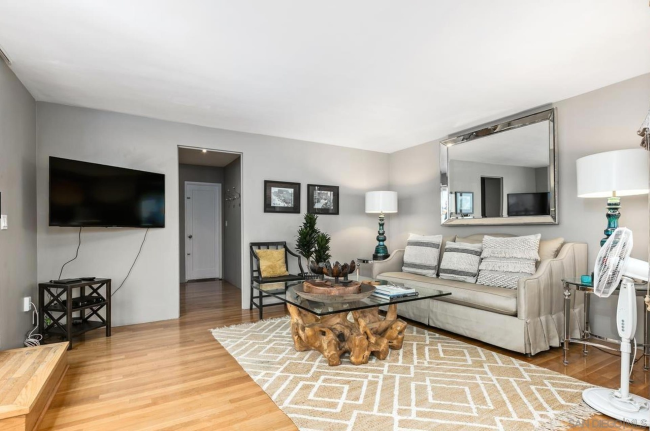
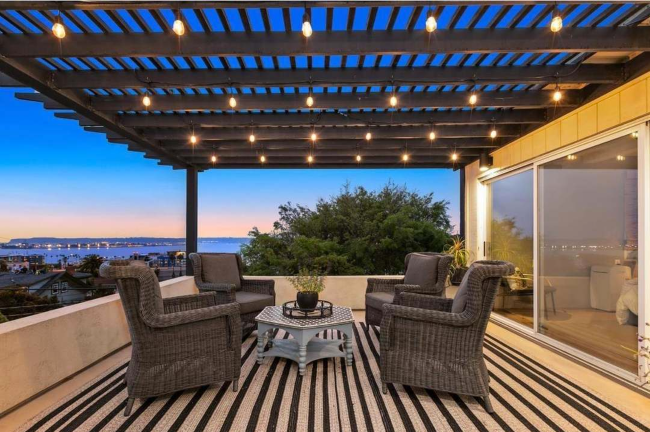
1910 - The Fannie M. McCoon House, 2204-2206 Albatross Street, San Diego CA. Altered. Now two units, downstairs is owner occupied. Since 2010, the upstairs (3 bd/2ba unit) is an AirBnB. It had also been sold as a teardown as it is zoned for up to four units. Sold to Tecia Nelson. Sold in 2004 to Deniece Duscheone and Christopher Maresca. Sold in 2022 to Rhys Tyler.

1910 - The Percival Thompson House, 1156 Isabella Avenue, Coronado CA. Sold to Juan and Kathleen Suros. Sold in 2004 to the Wagener Family Trust.
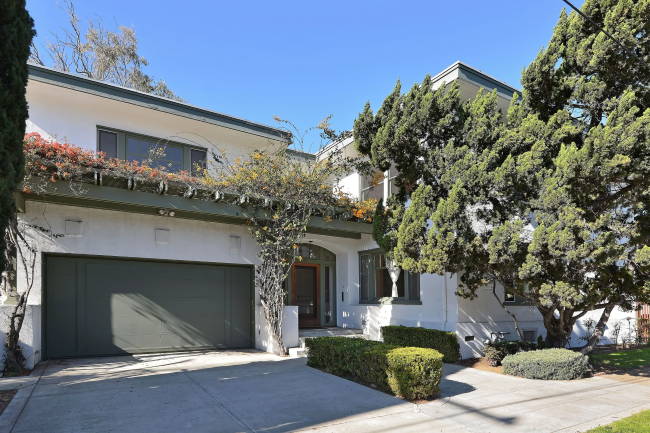
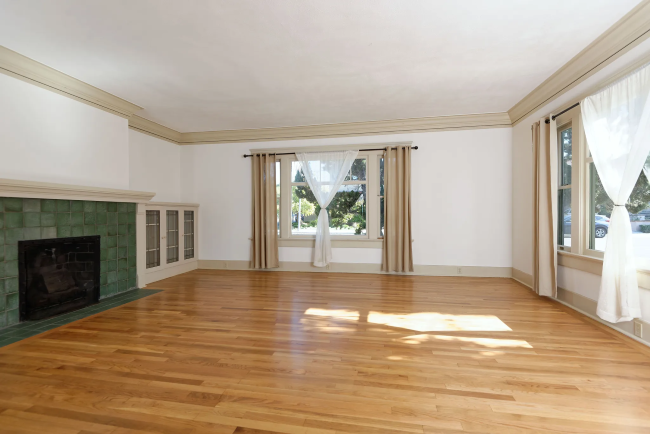
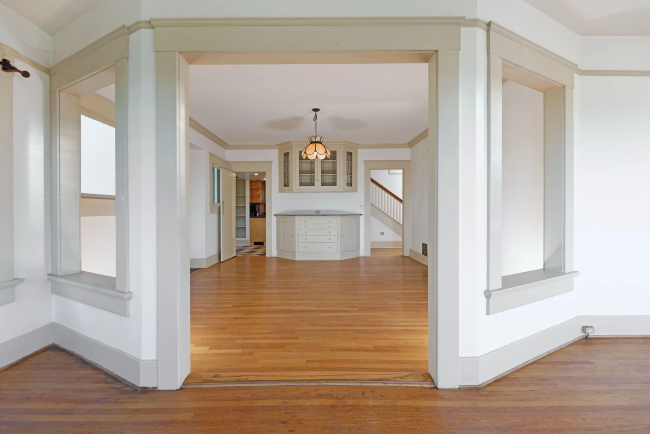
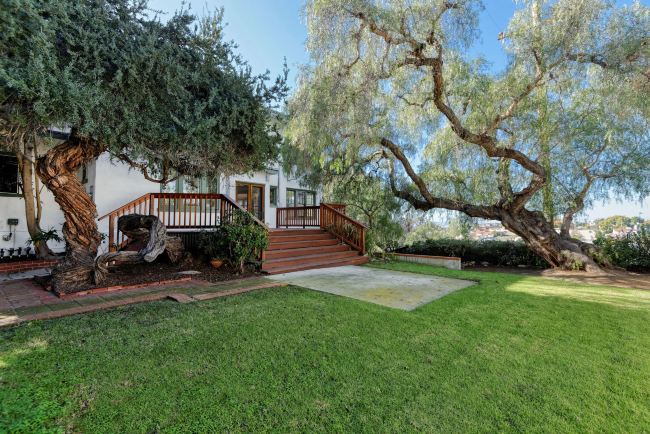
1910 - The G. B. Henry House, 3370 Brant Street, San Diego CA. Sold in 2022 to Zachary and Brooke Hammond.
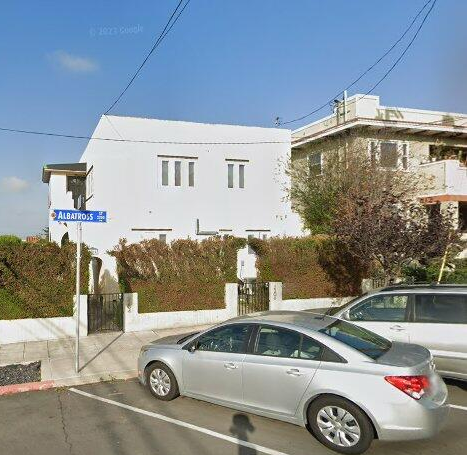
1910 - 2204-06 Albatross, San Diego CA. Sold to Tecia Nelson. Sold in 2004 to Deniece Duscheone and Christopher Maresca. Sold in 2022 to Rhys Tyler. Past residents include: 1913 - Ruth Cornell, 1919 - Homer MKoon, 1931 - Jessie Temple, and 1937 - Ellen McDuffy.

1910 - The J. W. Sefton House, Texas Street between Lincoln and University. Destroyed.
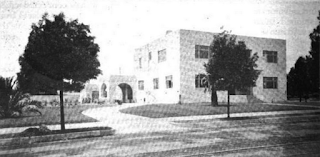
1910 - The Banning House, Two Harbors, Catalina Island CA. Located at the West End of the island, the Banning House Lodge was built in 1910 as the summer home for the pioneering Banning brothers, who owned Santa Catalina Island. Now a bed and breakfast.

1910 - The George Steckel House, Los Angeles CA. Steckel was a famous portrait photographer. Sold in 1911. Status unknown.
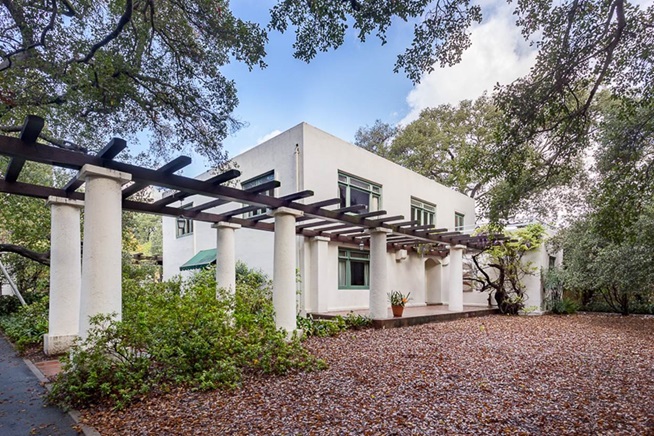
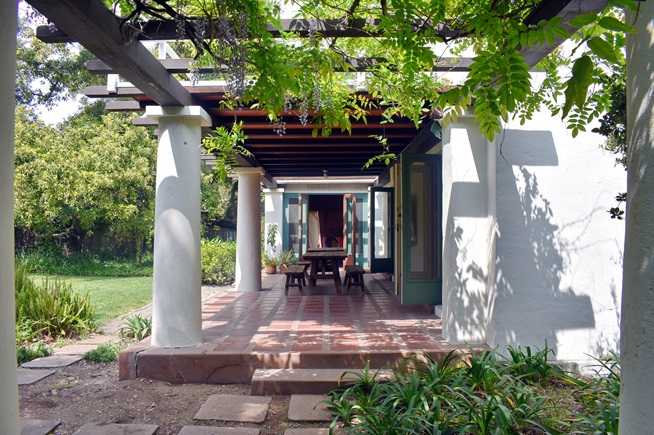
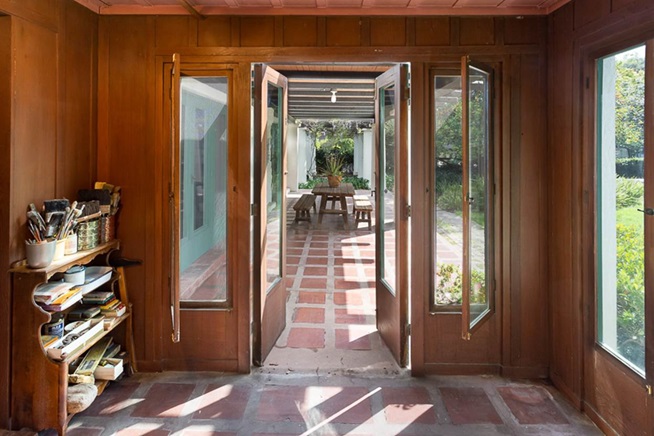
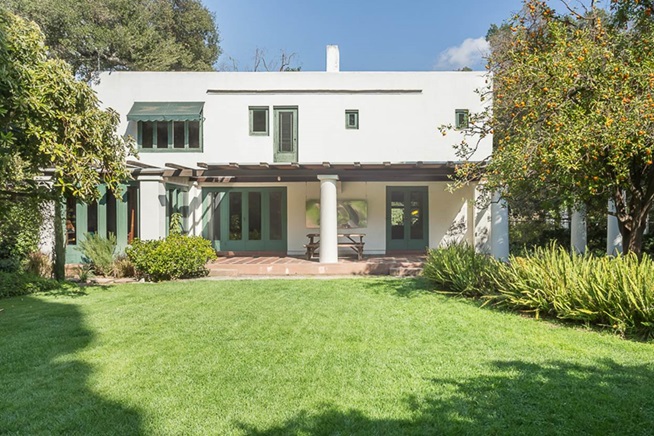
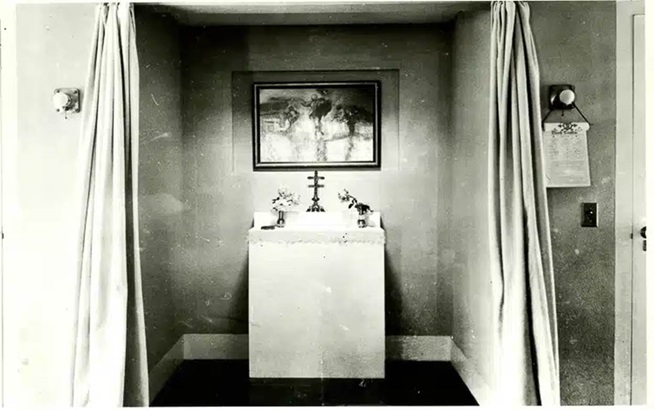
1911 - The Mrs. Paul Miltmore House, 1301 South Chelten Way, South Pasadena CA. The kitchen was remodeled in 1958. South Pasadena's Register of Cultural Heritage Landmarks #11 and National Registry of Historic Places #72000235. Sold in 1940 to John Shaw. Sold in 1952 to Benjamin and Virginia Holt. Sold in 2018 to Joseph M. and Therese A. Molina. Second photo by Michael Locke.

1911 - The Marion Olmstead House, North end of Lark Street, San Diego CA. Olmstead was the sister of the well known landscape architect. House was never built and the land was sold in 1912 for the Francis W. Parker School.

1911 - The Henry H. Timkin House, 335 Walnut Street, San Diego CA. Destroyed.

1911 - The Nelson E. Barker House, 306 Walnut Street, San Diego CA. Destroyed.
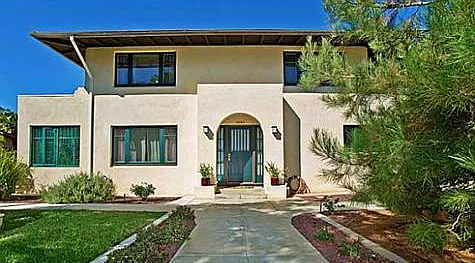
1911 - 3404 Front Street, San Diego CA. Status unknown. Sold to Donald Clark. Sold in 2013 to the Singleton Family Trust.

1911 - The Peru Rucker House, 3130 6th Avenue, San Diego CA. Next door to the 1908 Wheaton House (3102). Destroyed. Both lots now part of Park at 6th Condominiums.

1912 - 2728 6th Avenue, San Diego CA. Destroyed. Became St. Paul's Episcopal Cathedral.
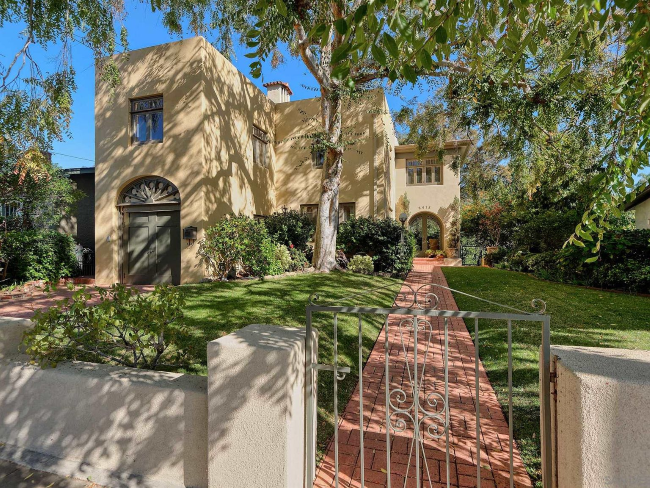
1912 - The Katherine Teats House #2, 3415 Albatross Street, San Diego CA. Sold to Sandra Phelps. Sold in 2020 to Robert Burke and Janet Shanberge.
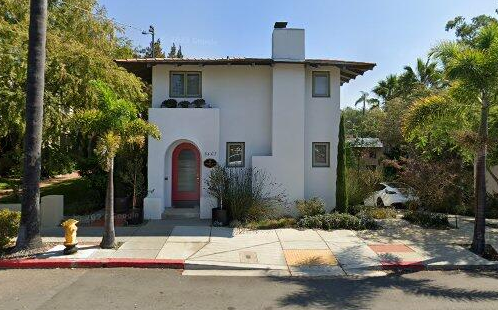
1912 - The Katherine Teats House #3, 3407 Albatross Street, San Diego CA. Next door to 3415 Albatross. Sold to the Pemberton Trust. Sold in 1992 to Karin and Mark Weatherup.

1912 - The Mary H. Banning House, 513 South Commonwealth, Los Angeles CA. Destroyed.
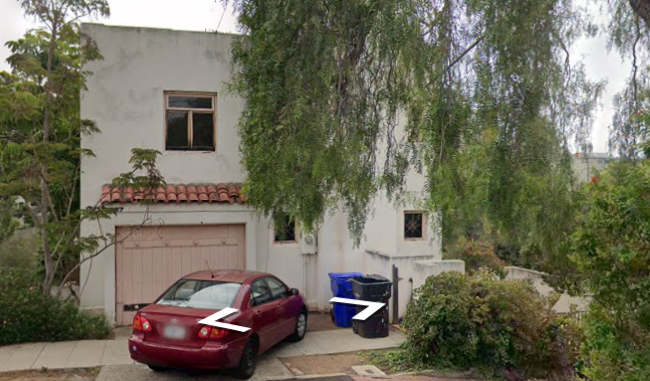
1912 - The Alice Lee House #3, 3367 Albatross Street, San Diego CA. Sold to Kenneth Rochells. Sold in 1991 to Michael Aguirre and Crisanta Johnson.
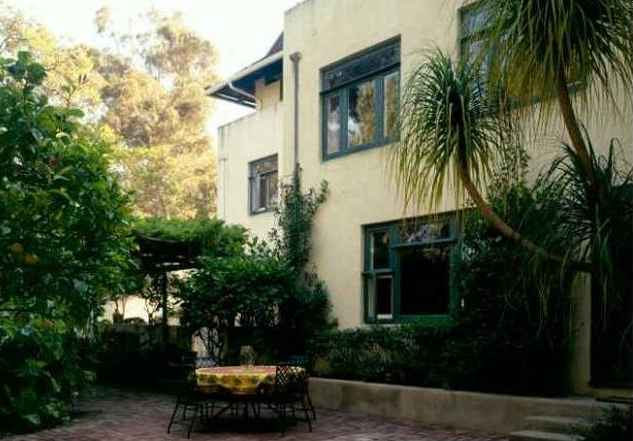
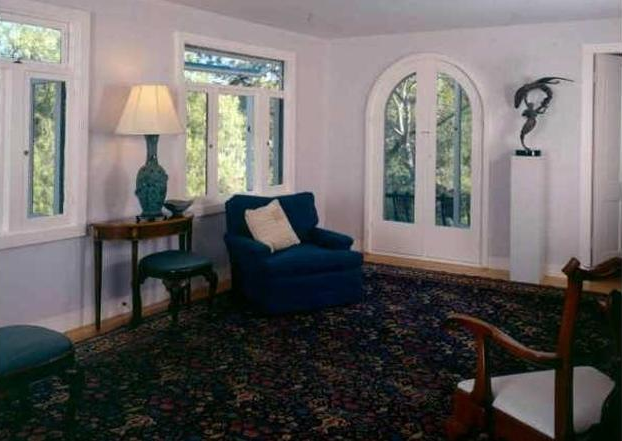
1912 - The Alice Lee House #4, 3353 Albatross Street, San Diego CA. Status unknown.

1912 - Laughlin Park Casas Grandes Development, between Franklin, Center, and Felix Streets, Hollywood CA. Unbuilt.

1912 - The E. G. Sherman Flats, Echo Park Court, 1725-1727 Park Avenue and 1104-1116 Lemoyne Street, Los Angeles CA. Destroyed.

1912 - The Frank J. Belcher Jr. House, 241 West Kalmia Street, San Diego CA. Destroyed.

1912 - The O'Kelley House, Quince Street, San Diego CA. May be F. C. O'Kelley who had a ranch outside of San Diego and house in San Diego.
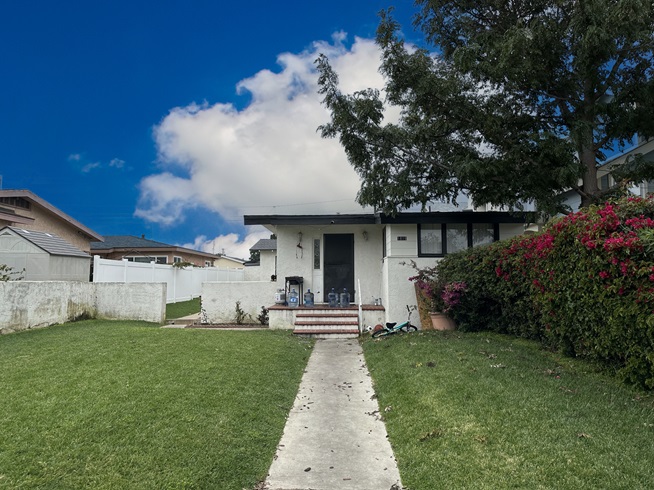
1912 - Workers Single-Family Housing, 1819 Gramercy Avenue, Torrance CA. Around 1912, Gill secured the job as Chief Architect for the city of Torrance CA, then under development by Jared Sidney Torrance's Dominguez Land Company. Gill planned to design 100 model homes for factory workers who wanted to live near their jobs. Gill told the Los Angeles Herald in 1912 that "the whole secret" was "privacy and cleanliness" designed with few adornments. They were not liked for their lack of decoration, preferring the more romantic California bungalow. About ten of the model homes were built, located in the 1800 and 1900 blocks of Gramercy Avenue. Sadly, this is the only one to have survived. Photos by Michael Locke.
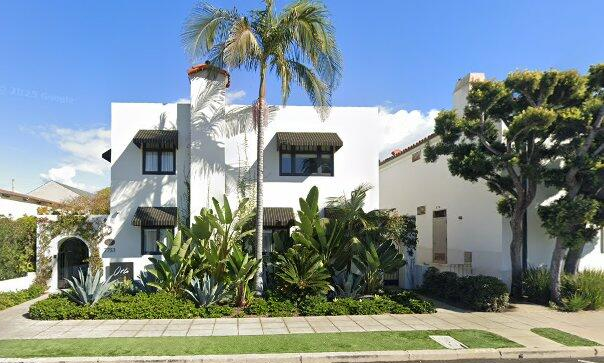
1913 - The George Kautz House, 7753 Draper Avenue, La Jolla CA. Sold to Bed and Breakfast Inn at La Jolla. Sold in 2018 to Raymond and Laurel McIntyre. Sold in 2020 to Trouvaille Group LLC aka Orli La Jolla, a boutique hotel.
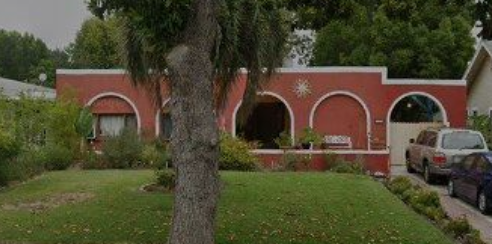
1913 - 222 North Hidalgo Avenue, Alhambra CA. Sold in 2000 to Ben and Leticia Caslan. Sold in 2003 to Guillermo Frias.

1913 - The Margerum House, Elizabethville PA. Status unknown.

1913 - The W. C. Powers Flats, 823-827 South New Hampshire Avenue, Los Angeles CA. Destroyed.

1913 - 222 North Hildalgo Avenue, Arcadia CA. Status unknown.
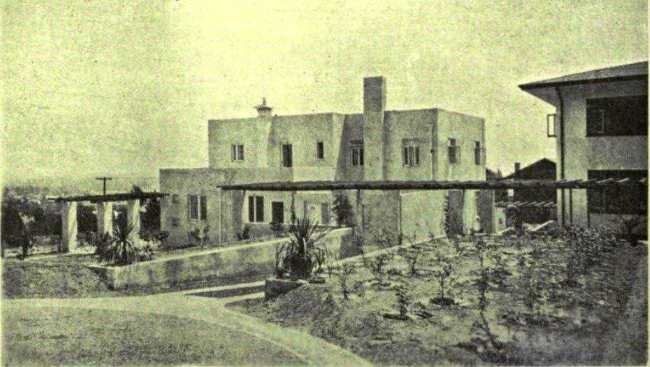
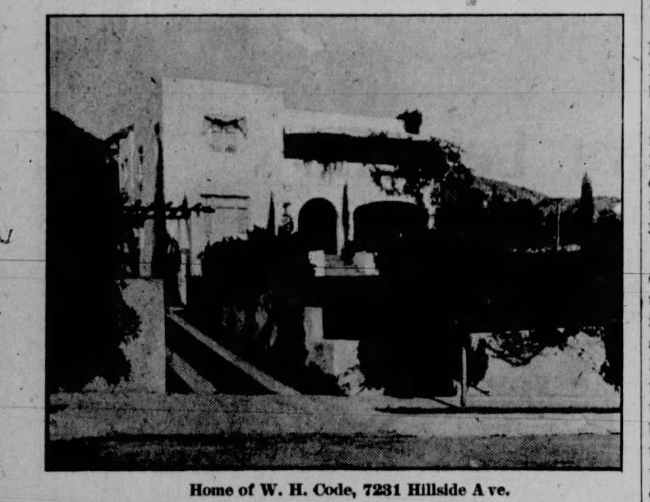
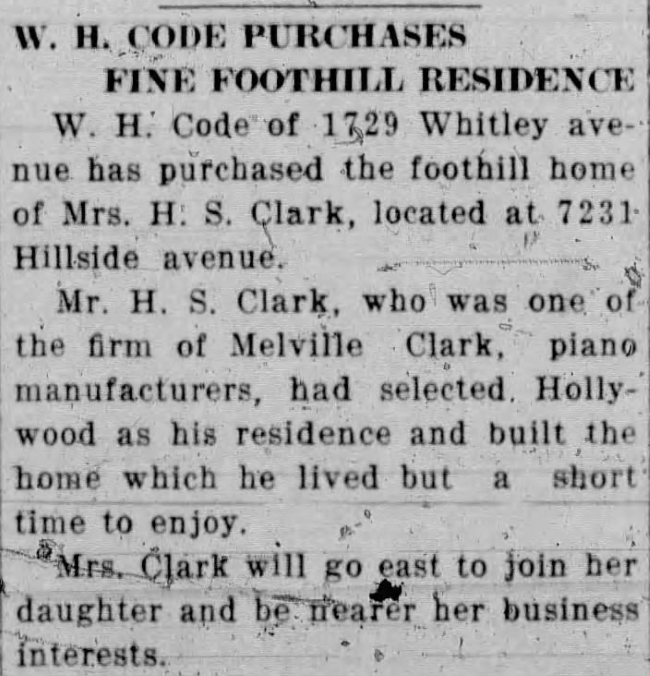
1913 - The Henry S. and Sarah B. Clarke House, 7231 Hillside Avenue, Los Angeles CA. 7 bedrooms. Originally listed as 7233, the lot became 7231 when house was built. Sold in 1916 to W. H. Code. For sale in 1941 and 1955. Destroyed.
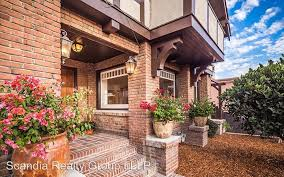
1914 - The E. B. Gould House, 2333 Albatross Street, San Diego CA. Sold to Luz De Luna Enterprises LLC.Upgrades to windows, ventilation, and minor electrical upgrades. Sold to Luz De Luna Enterprises LLC. Became apartments.
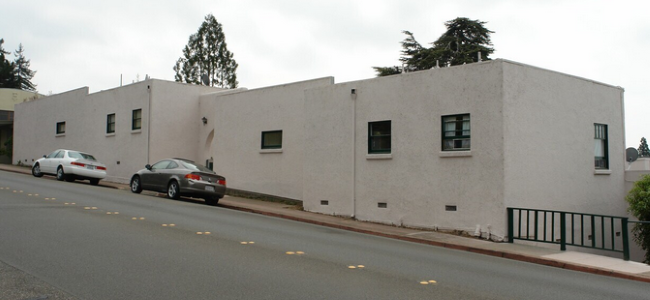
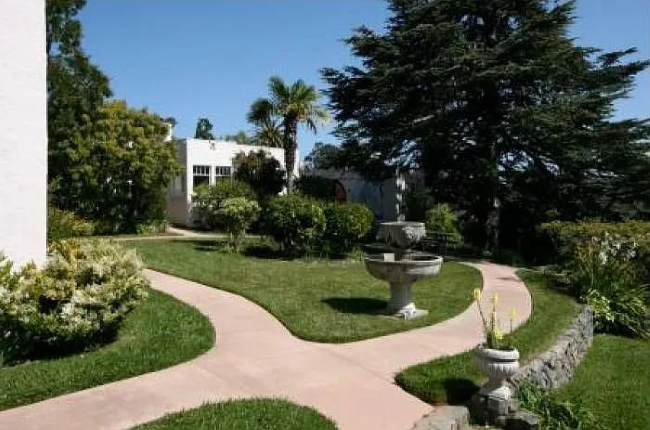
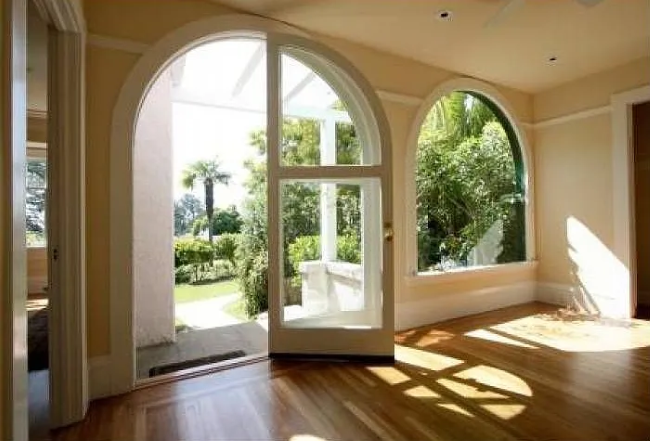
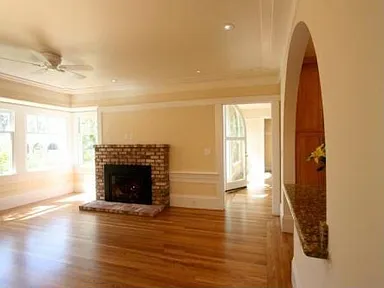
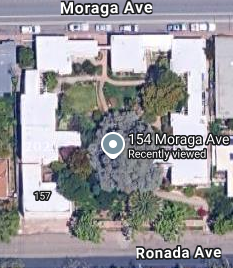
1914 - Ronada Court, 154 Moraga Avenue & 157 Ronada Avenue, Piedmont CA. 9 units, 1 story rentals. Inside photos are of apartment #2.

1915 - The Scripps Playground Director's Cottage, 7681 Cuvier Street, San Diego CA. Destroyed.
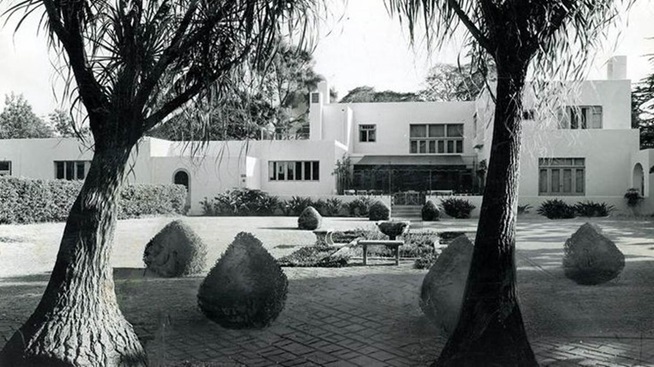
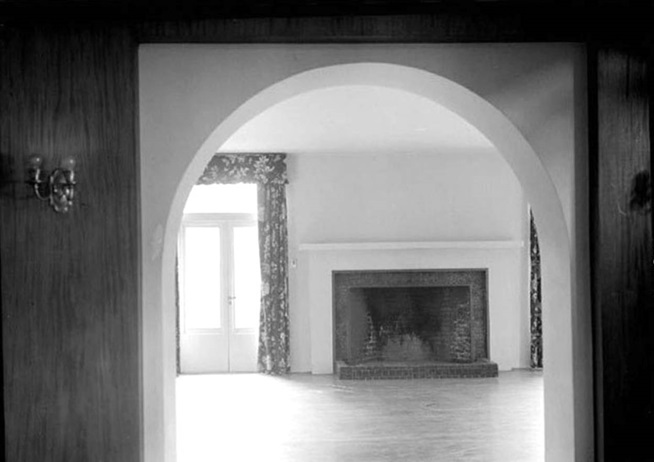
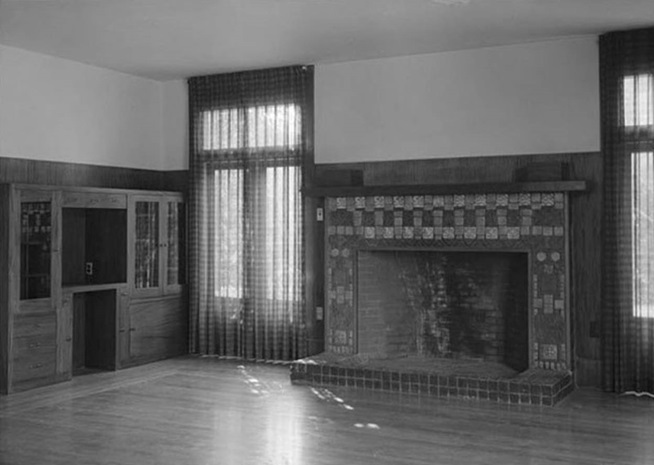
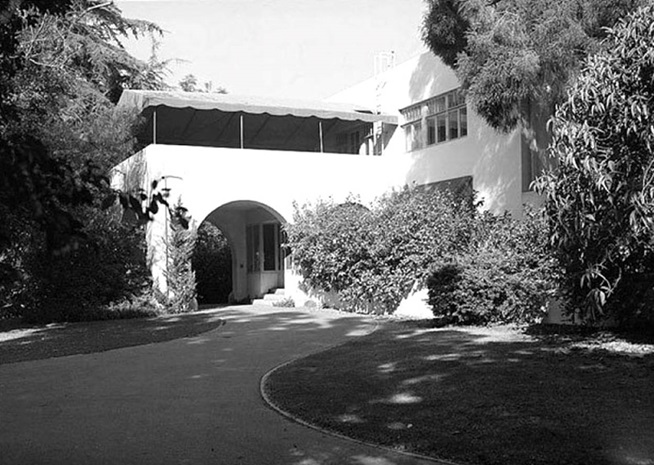
1916 - The Walter L. Dodge House, 950 North Kings Road, West Hollywood CA. Published in House Beautiful, February 1921. Sold in 1924 to T. Morrison McKenna. In 1939, the Los Angeles Board of Education acquired the property in a contested condemnation action, and the house was never again put to full use. Beginning in 1963, efforts began to redevelop the property. Architectural historian Esther McCoy made the film Dodge House 1916, available on YouTube. Richard Neutra said the Dodge House was required study for architecture students worldwide and declared n 1969 that demolition would "become an epic, an international scandal. In November 1969, a lawsuit by the Citizens' Committee seeking to stop the sale of the Dodge House was rejected, and the house was sold to Riviera Management Company which destroyed it on February 9, 1970. Apartments were built there.

1916 - Cottage Court, Western near 3rd Street, Los Angeles CA. Status unknown.

1916 - The Mason House, 2434 Langdale Avenue, Eagle Rock CA. Sold to James Grubb. Sold in 1989 to Carlo Denecochea. Sold in 1993 to Hiroshi and Diane Omori. Sold in 1996 to Craig Peters and Tina Luster.
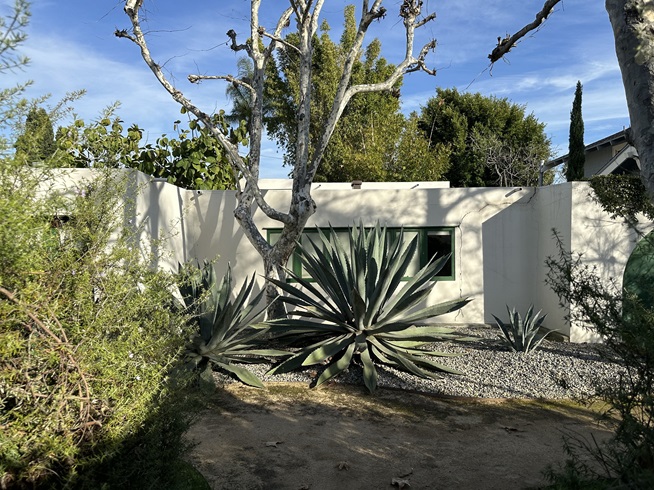
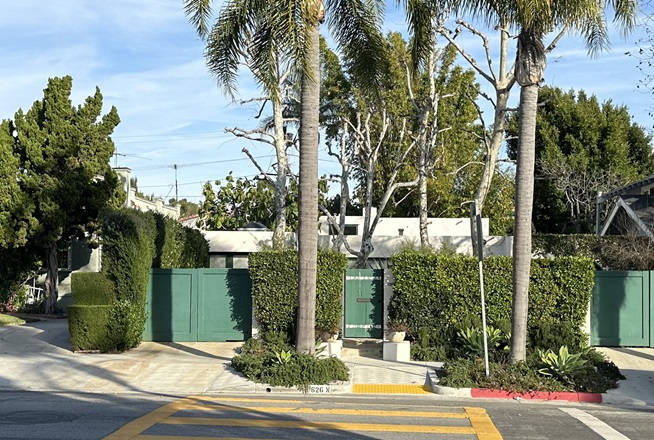
1917 - The Morgan House, 626 North Arden Boulevard, Los Angeles CA. Restored by Roy McMakin and Andie Zelnin. Sold in 2001 to Frederic and Doanne R. Hunter. Sold in 2006 to Paul R. Hunter. Photos by Michael Locke.
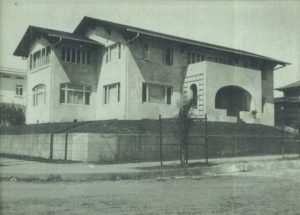
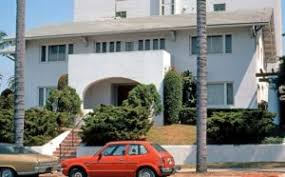
1917 – The Harry M. and Rachel Wegeforth House, 210 Maple Street, San Diego CA. Commissioned by Rachel’s father, Ralph Granger. Featured solar panels, in-house vacuum, and trap doors for plumbing. Restored by the Junior League in 1981; became their headquarters
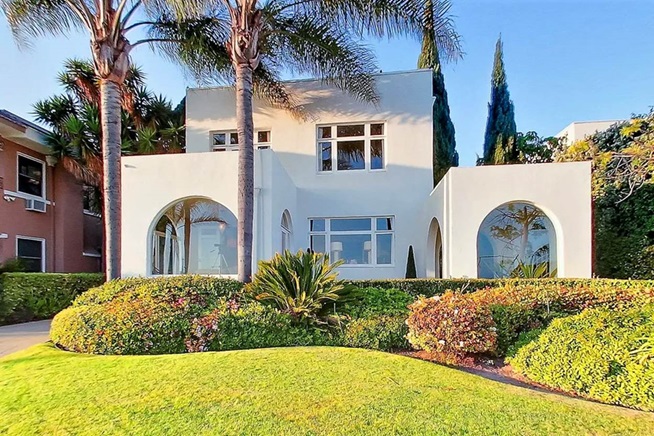
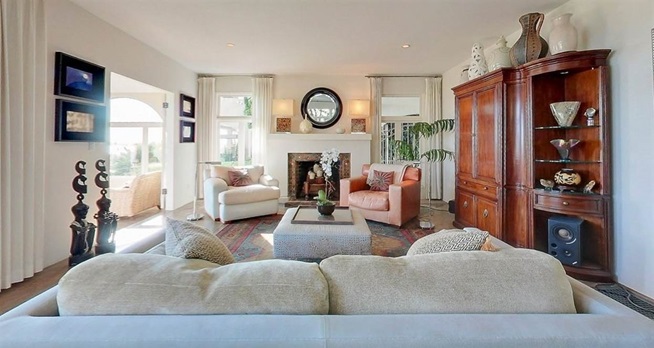
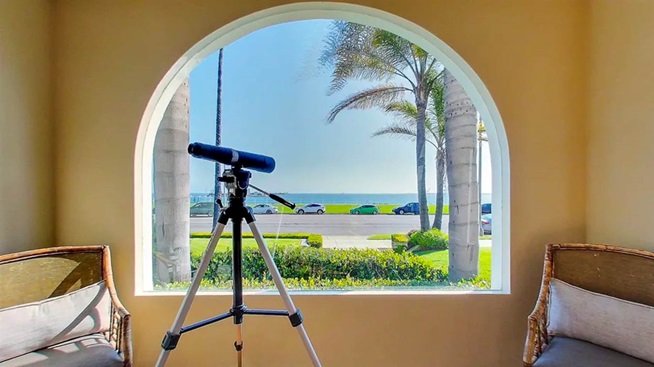
1918 - The Samuel Raymond House, 2749 East Ocean Boulevard, Bluff Park, Long Beach CA. 3660 sf. Deeded to his daughter, Florence R. Bois. Interior heavily remodeled. Sold in 2000 to Henry and Debra Hockenberger. Sold in 2020 to Goma Elbiali. Deeded in 2020 to Mohamed Elbiali.

1918 - The Margaret Farlow House, 15830 Vanowen Street, Van Nuys CA. Destroyed.
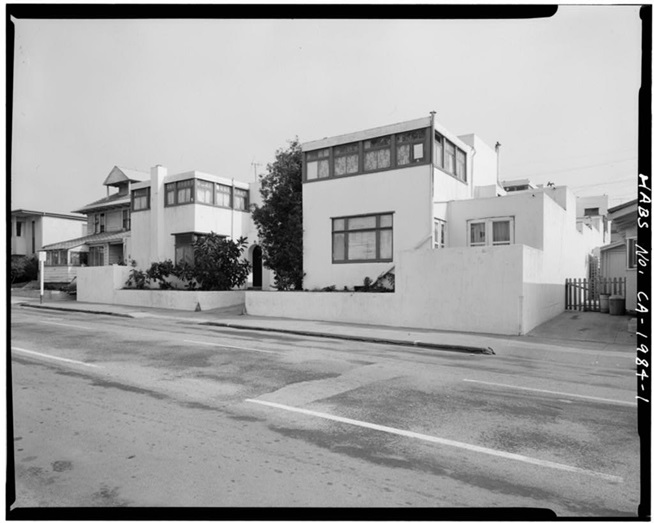
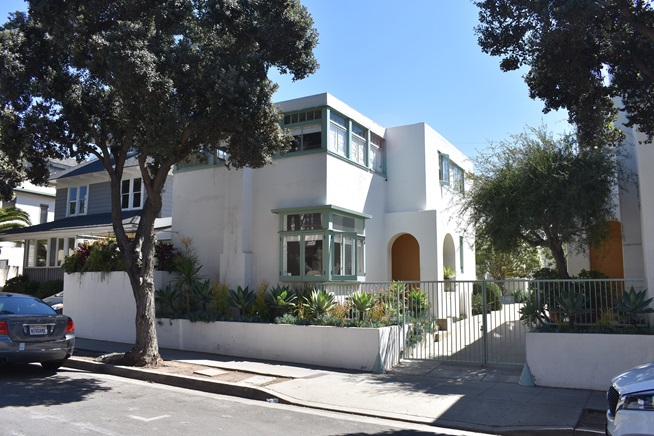
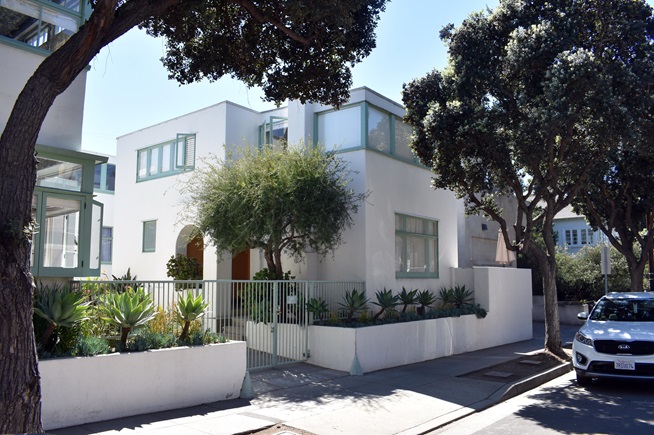
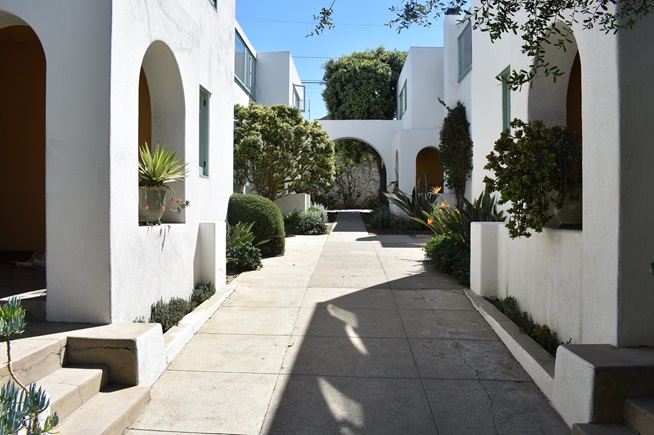
1919 - The Horatio West Court, 126-140 Hollister Avenue, Santa Monica CA. Changed to El Consuelo Apartments in 1927. In the early 1970s a partnership of six people, including three architects, bought and restored the property for their use, living in the four townhouse units and renting out the two apartments in the back. The project was converted to condominiums in 1979. Santa Monica Historic Landmark #10, and National Registry of Historic Places. Richard Neutra extensively photographed the Horatio West Court and Gill's Dodge House and published in his book Amerika: Neues Bauen in der Welt (1930). B/W photo by Marvin Rand; color photos by Michael Locke.
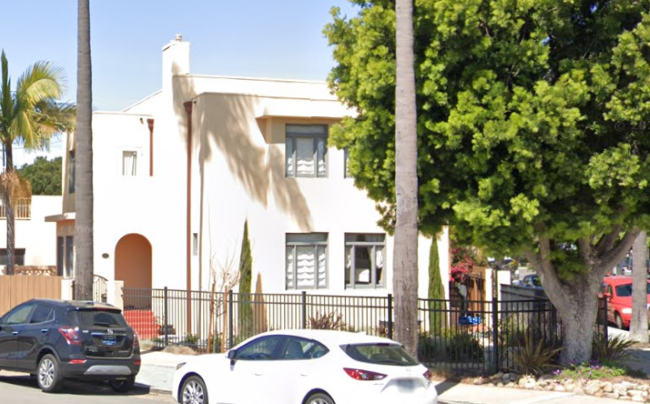
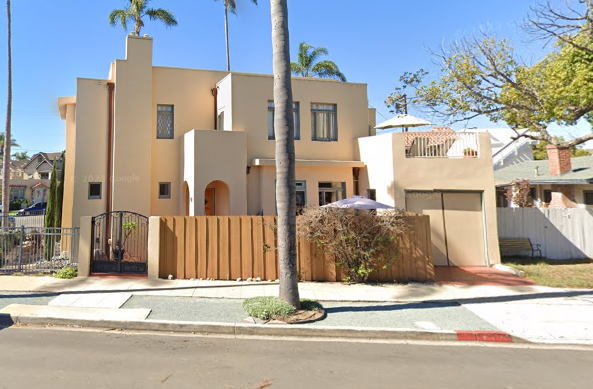
1919 - The Louis Wilde Flats, 544 D Avenue & 545 Palm Avenue, Coronado CA. Designed with Louis Gill. Corner building. Became apartments.
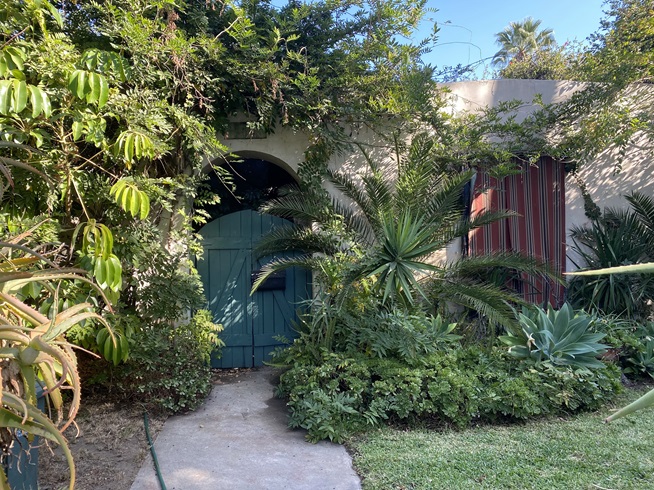
1920 - The Kate Crane-Gartz Duplex, aka Little Cloister, 948-950 North Oakland Avenue, Pasadena CA. Gartz, a celebrated reformer and pacifist, was heir of her father's fortune derived from his plumbing business. When her two sons wrote to her of the "useless slaughter" in World War I, she appealed to President Harding on behalf of conscientious objectors and provided funding to the Women's International League for Peace and Freedom. Sold in 2005 to Jack Dixon Moore. Photo by Michael Locke.

1920 - The Ohlson Duplex, 423 South Magnolia Avenue, Monrovia CA. Altered. Address is 419-423 South Magnolia, 419 unit on the right, 423 on the left. Sold to Herlberto and Guillermina Ornelas. Possibly rentals.
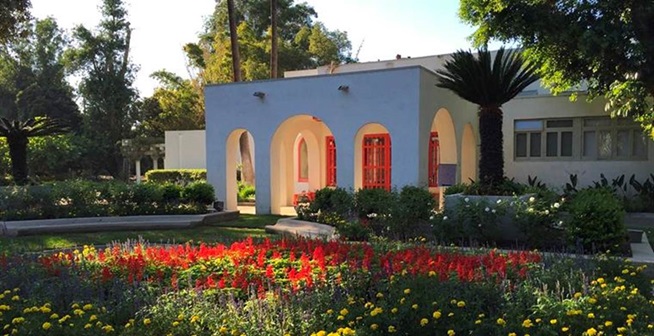
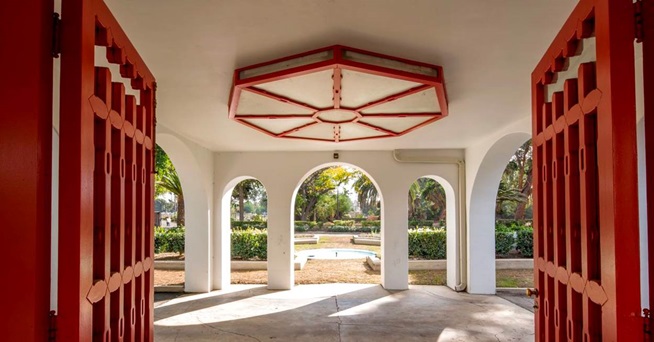
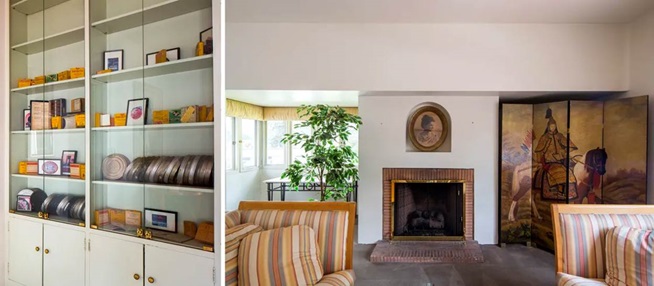
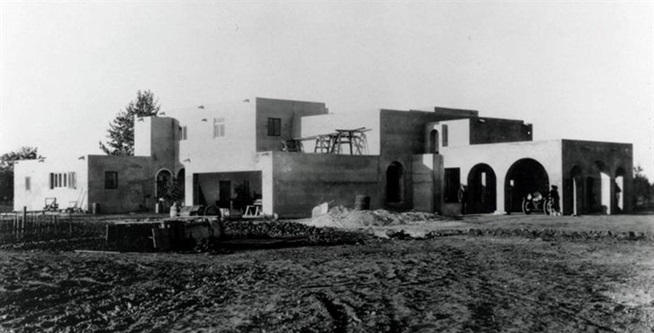
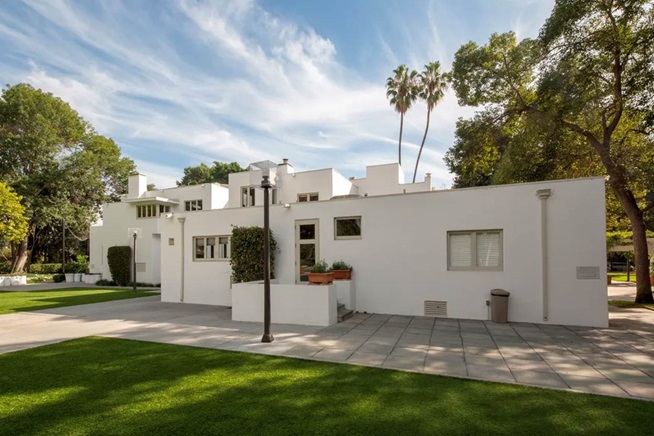
1921 - The Chauncey and Marie Rankin Clarke House, 10211 Pioneer Boulevard, Santa Fe Springs CA. 60 acres. Commissioned in 1919. They lived in the home for two years before the discovery of oil on their land, which brought industry to the area and led them to move. When Marie Clarke died in 1948, the home was left to her secretary's nephew, James Siemon, who lived there until 1986. Sold to Santa Fe Springs Community Development. On the National Registry of Historic Places.
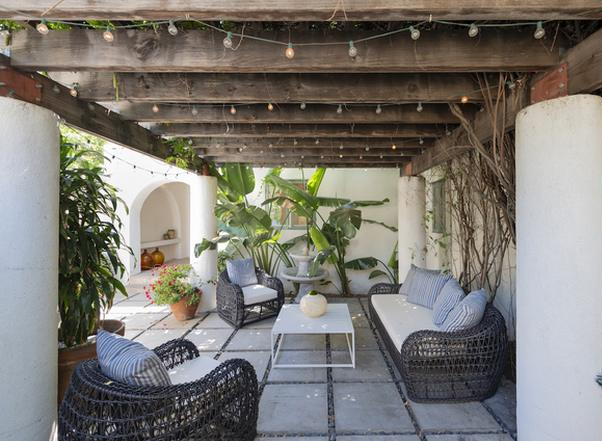
1921 - The Elizabeth Reed House, 6460 Odin Street, Los Angeles CA. Altered. Sold in 2019 to Anthony Christopher Hobbs and Andrew Marshall Stowell.

1921 - The Persis Eugenia Bingham House, Los Angeles CA. Status unknown.

1921 - The JDL Chandler Apartments, 1105-1107 Fourth Street, Santa Monica CA. Destroyed.






1922 - Alterations, 201 South Bonnie Brae Street, Los Angeles CA. Destroyed.
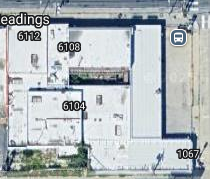
1922 - Apartment Alternations, 6102 Santa Monica Boulevard, Los Angeles CA. Former office of realtor William Castanien, possibly with an added apartment in 1922. By 1925, the address disappears—likely absorbed into a later structure. Aerial photo suggests address shifts over time; 6104 and 6108 were built in 1917, while 6100 (the corner building) came later in 1933, possibly prompting renumbering. Status unknown.






1923 - The William C. Humburch House, Lot 477 Schumacher Drive, Los Angeles CA. Status unknown.
1923 - The William C. Humburch House 2, Lots 159-160, Del Valle Drive, Los Angeles CA. Unsure of address. Status unknown.
1923 - The C. R. Bell House, Warner Drive near McCarthy Vista, Los Angeles CA. Unsure of address. Status unknown.
1923 - The William S. Lord House #2, Warner Drive near Fairfax, Los Angeles CA. Unsure of address. Status unknown.
1923 - The J. Harvey McCarthy House 1, Del Valle Drive near Fairfax, Los Angeles CA. Unsure of address. Status unknown.
1923 - The J. Harvey McCarthy House 2, 6336 Warner Drive, Los Angeles CA. Status unknown.
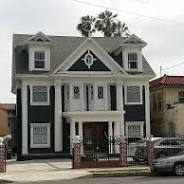
1923 - Alterations, 1406 Alvarado Terrace, Los Angeles CA. Original home built 1902. Sold to Richard Cole. Sold in 1993 to Gonzalo and Isabel Hurtado. Sold ini 2013 to Jung Kim.
1924 - The Arthur J. Misner House, 6611 Woodward Avenue, Bell CA. Altered. Status unknown.
1933 - 12 Cottages, Barona Indian Reservation, Lakeside CA. Altered. Status unknown.
Sources include: Irving John Gill papers at UC Santa Barbara; Historic American Buildings Survey at the Library of Congress; Irving J. Gill Architect by Marvin Rand.
